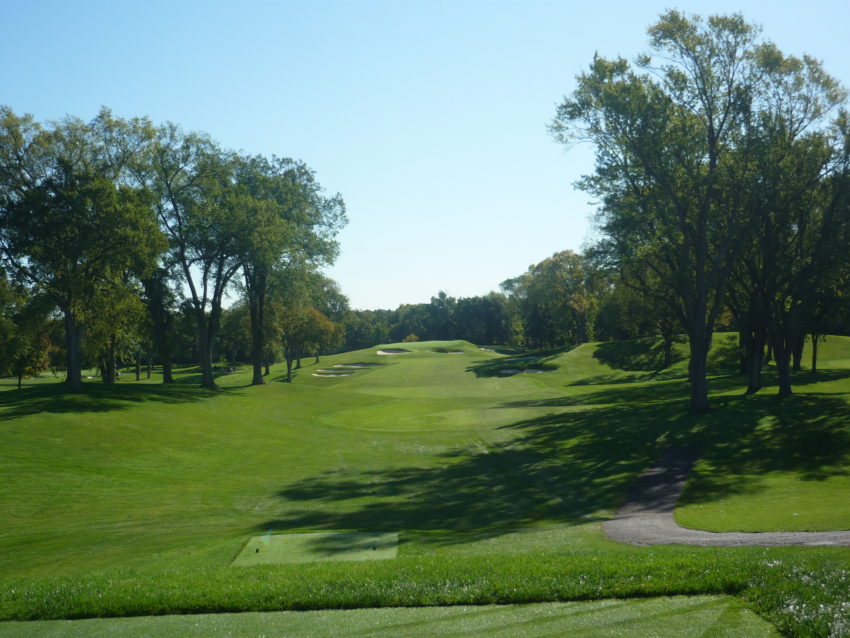
Interlachen Country Club – Played September 2021
- Rankings: Golf Digest #56, Golf Digest Public #2, Golf Magazine #85
- Location: 6200 Interlachen Boulevard, Edina, Minnesota
- Year: 1911
- Original Architect: Willie Watson
- Additional Work By: Donald Ross, Willie Kidd, Robert Trent Jones, Geoffrey Cornish, & Brian Silva
- Course Access: Private
- Walking Rules: Carts & Caddies Available
Score Card Information:
- Black: 6,981 yards, Par 72, 74.3 Rating/141 Slope
- Tan: 6.515 yards, Par 72, 72.2 Rating/136 Slope (Men’s), 78.1 Rating/145 Slope (Women’s)
- Tan/Blue: 6,238 yards, Par 72, 70.9 Rating/134 Slope (Men’s), 76.4 Rating/142 Slope (Women’s)
- Blue: 6,075 yards, Par 72, 70.2 Rating/132 Slope (Men’s), 75.6 Rating/140 Slope (Women’s)
- Yellow: 5,747 yards, Par 72, 68.6 Rating/129 Slope (Men’s), 73.9 Rating/136 Slope (Women’s)
- Yellow/Green: 5,382 yards, Par 72, 67.0 Rating/126 Slope (Men’s), 71.7 Rating/132 Slope (Women’s)
- Green: 5,187 yards, Par 73, 66.0 Rating/125 Slope (Men’s), 70.7 Rating/130 Slope (Women’s)
Adding a new state where I’ve played is a nice accomplishment that I like to recognize during my travels. Kicking off Minnesota with Interlachen Country Club is quite the way to start.
I was fortunate enough to be joined by a gracious member who gave me all kinds of history about the course. It was a phenomenal day.
I’ve linked to some of that history above, but one interesting architectural piece is that Donald Ross was brought in to completely overhaul the course less than a decade after it was built by Willie Watson. More work has been done on the course by other architects, but the goal has always been to keep Interlachen Country Club close to it’s Ross roots.
Additionally, the tournament history is rich at Interlachen Country Club. Bobby Jones won the 1930 US Open here for the third leg of the Grand Slam. Other big events that have been hosted here include the 1935 US Women’s Amateur, 1986 US Senior Amateur, 1993 Walker Cup, 2002 Solheim Cup, 2008 US Women’s Open, and the 2016 Junior Ryder Cup.
Interlachen is a special place because of it’s history, but I felt equally privileged to see the golf course and experience the holes. Let’s see them now. All yardages are reflective of the Tan tees.
Hole 1 – 526 yards – Par 5
The round at Interlachen starts with a reasonable par five. Stay out of the bunkers if you want to start on a high note.
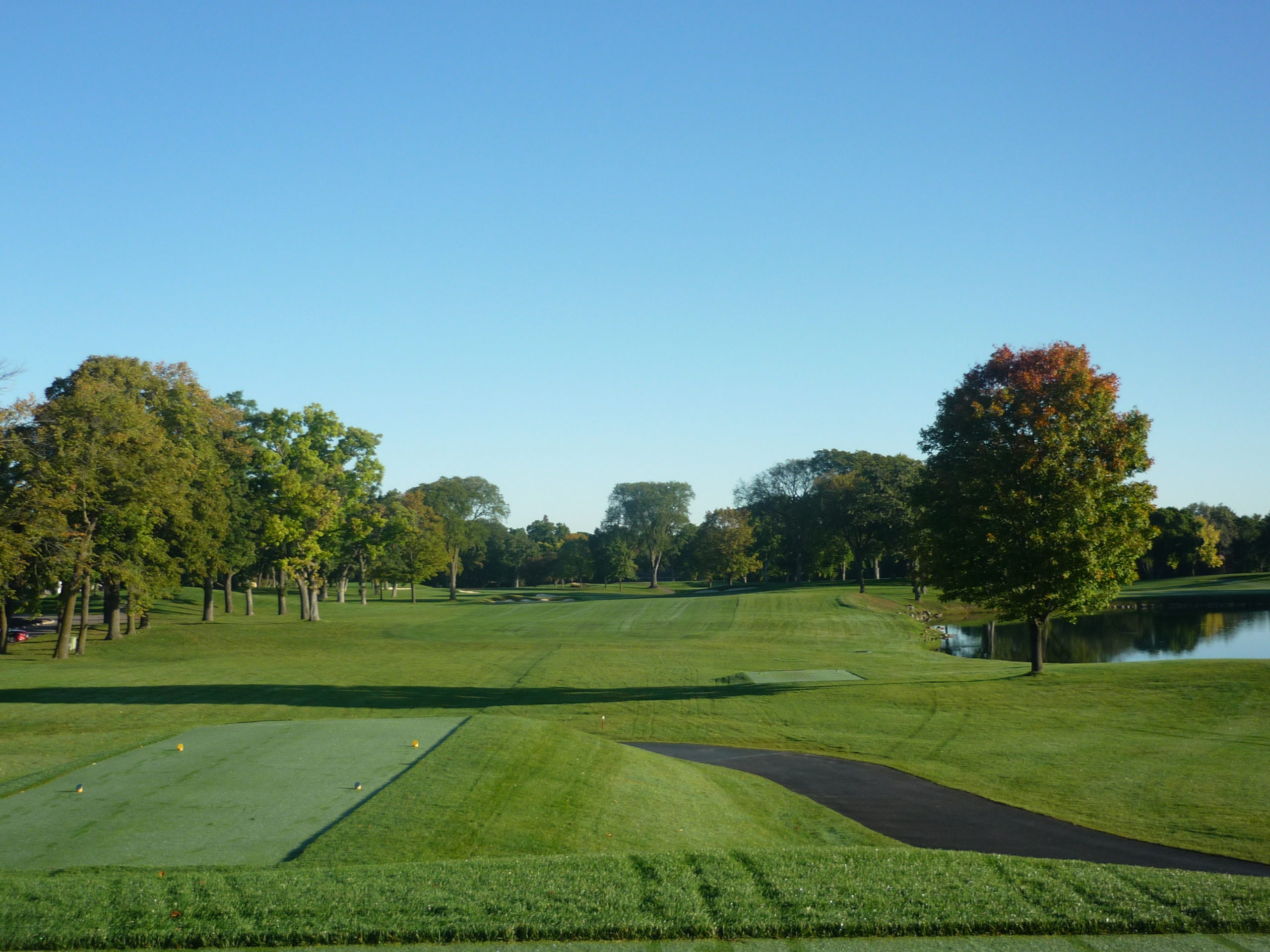
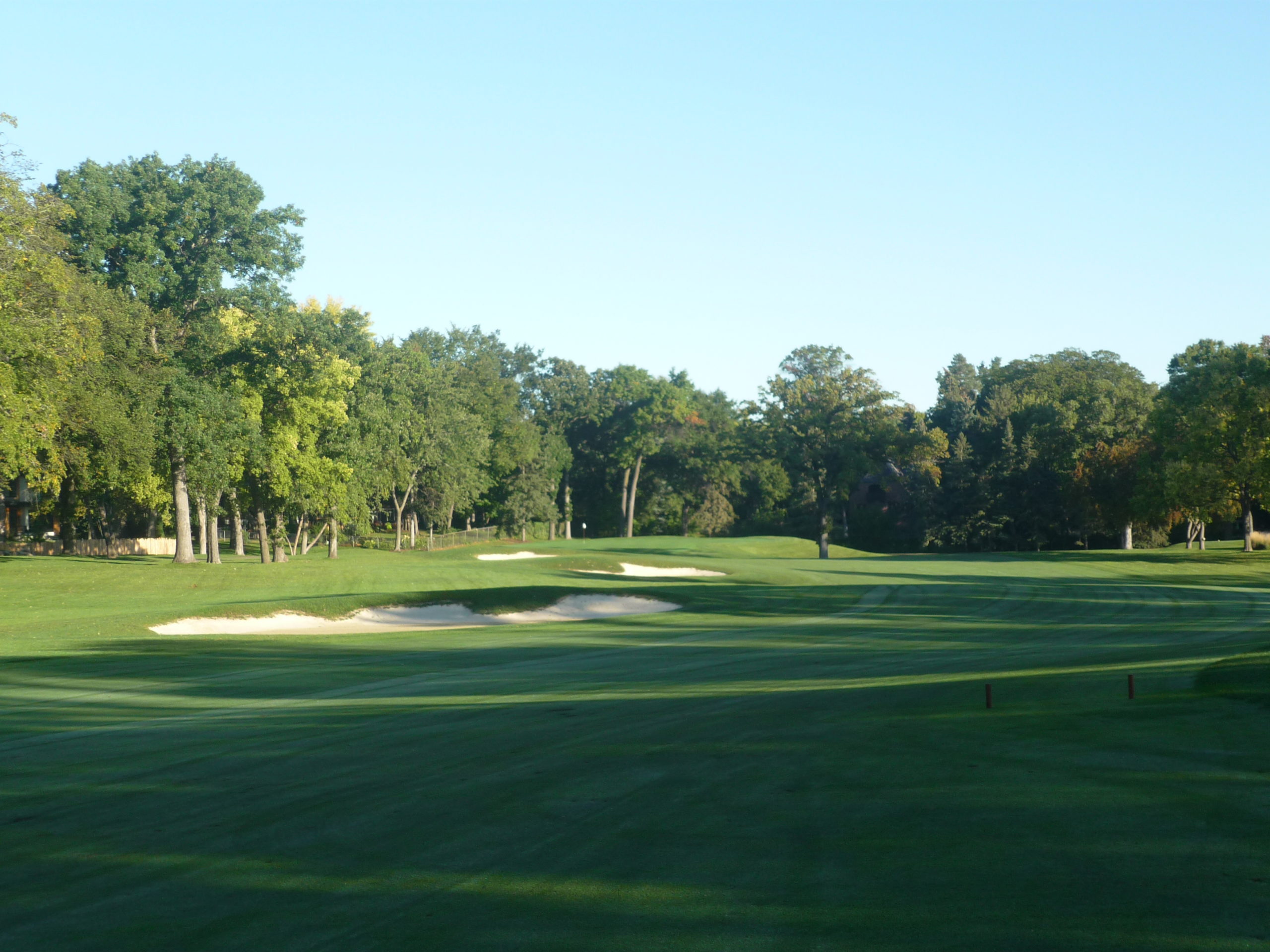
You get a taste of the quick greens right from the start.
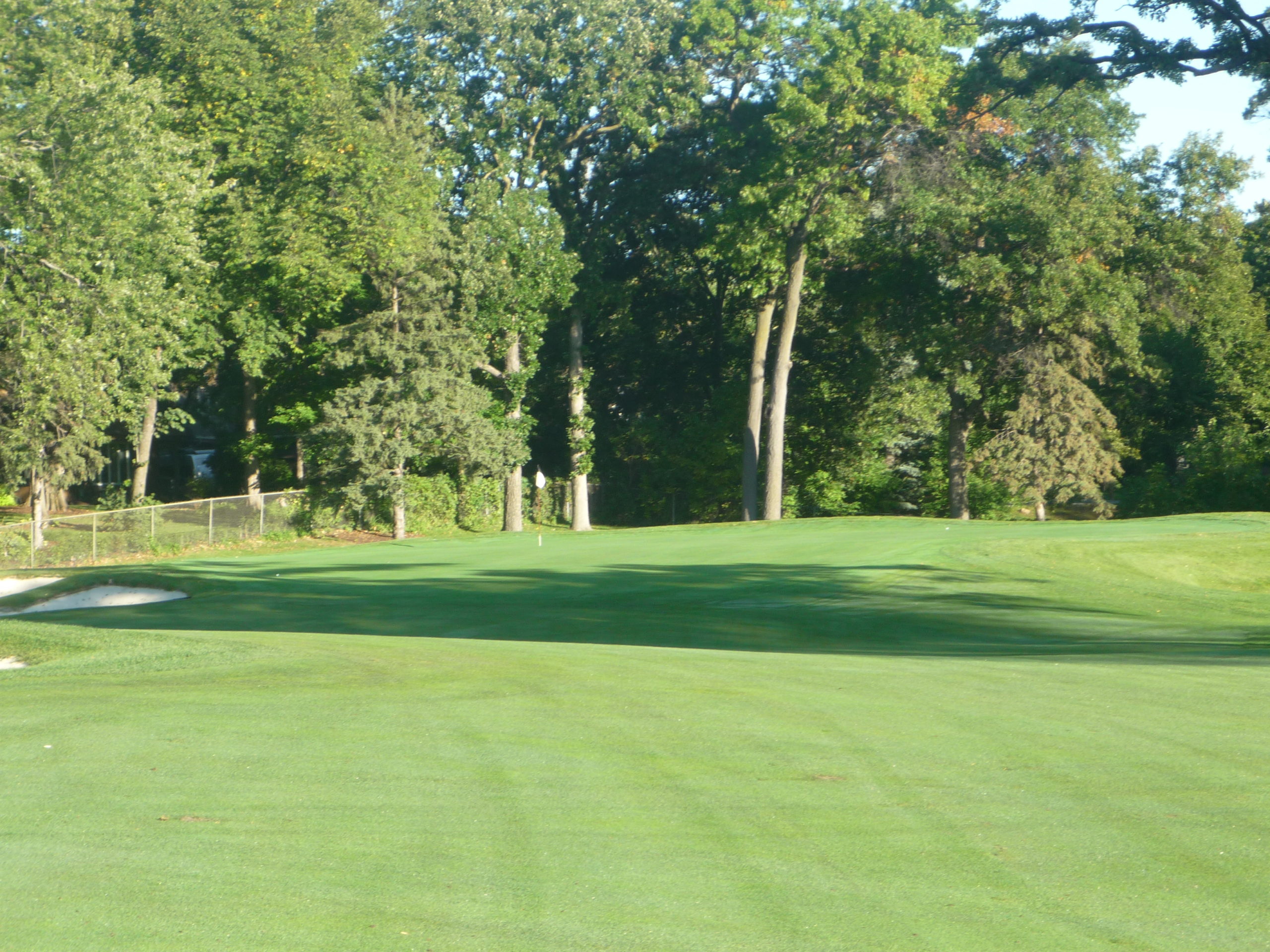
Hole 2 – 338 yards – Par 4
This one is short by yardage but treacherous in practice. The green is small and heavily sloped. You want to approach from the fairway and even then you have to be precise.
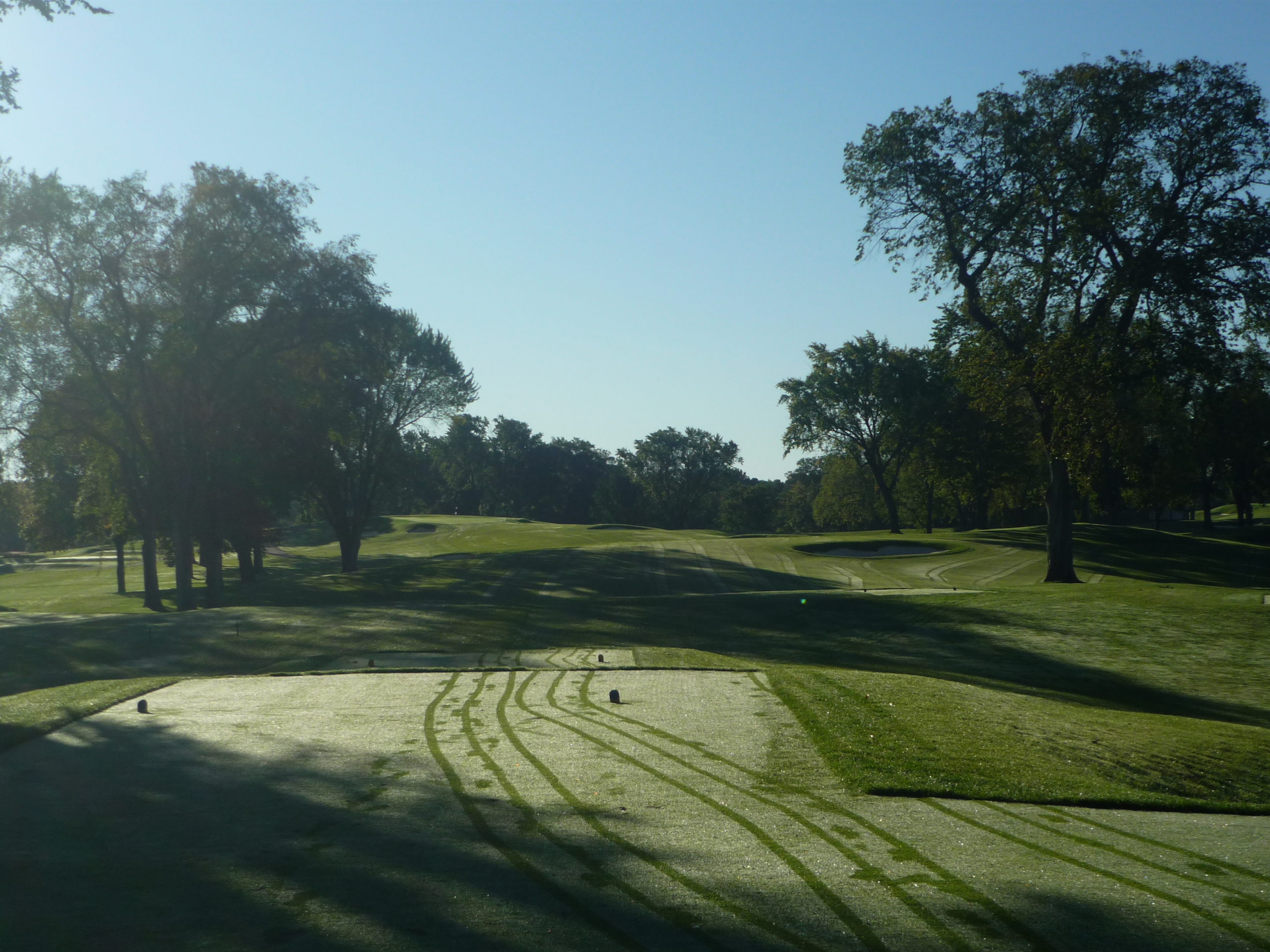
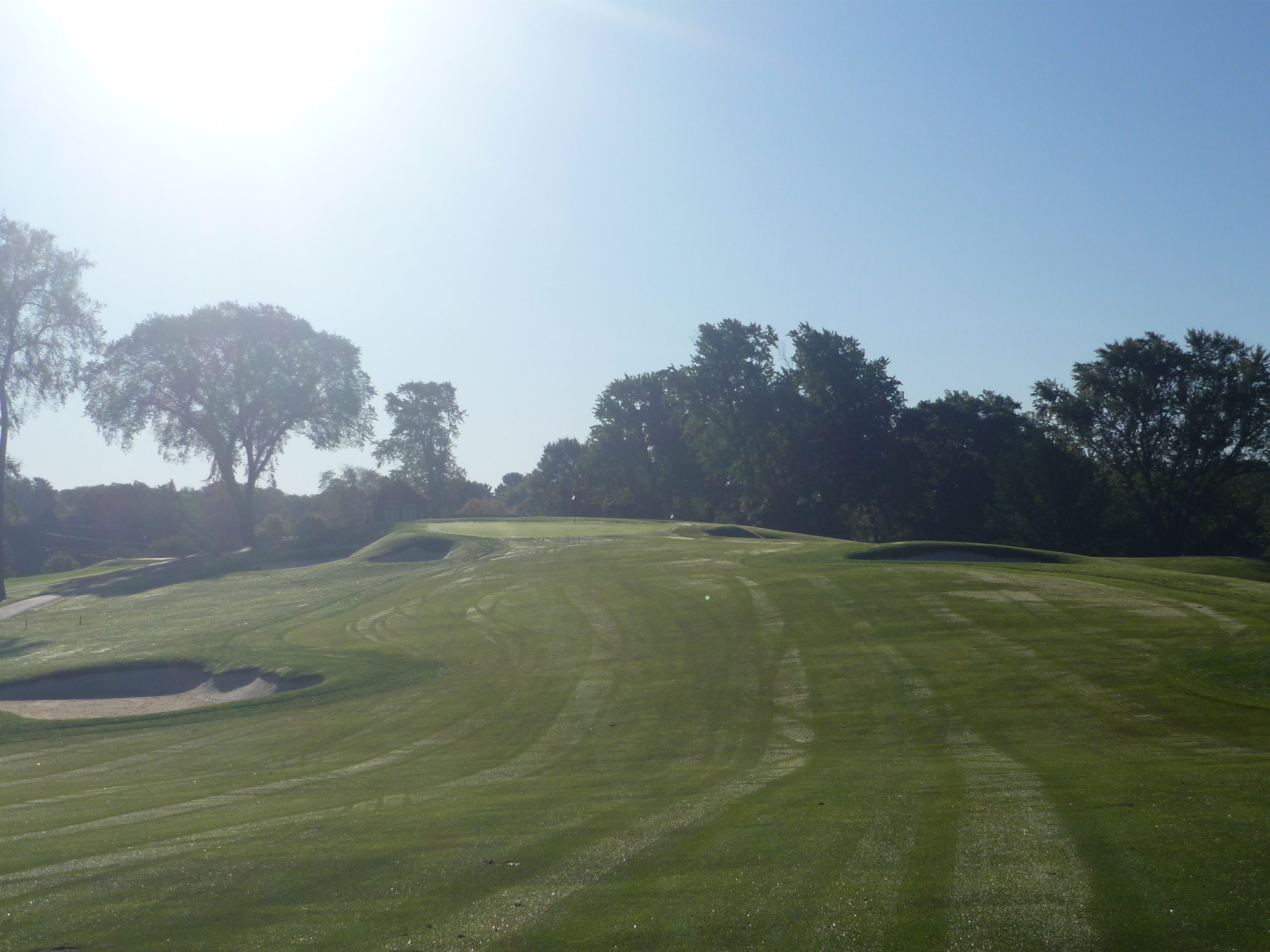
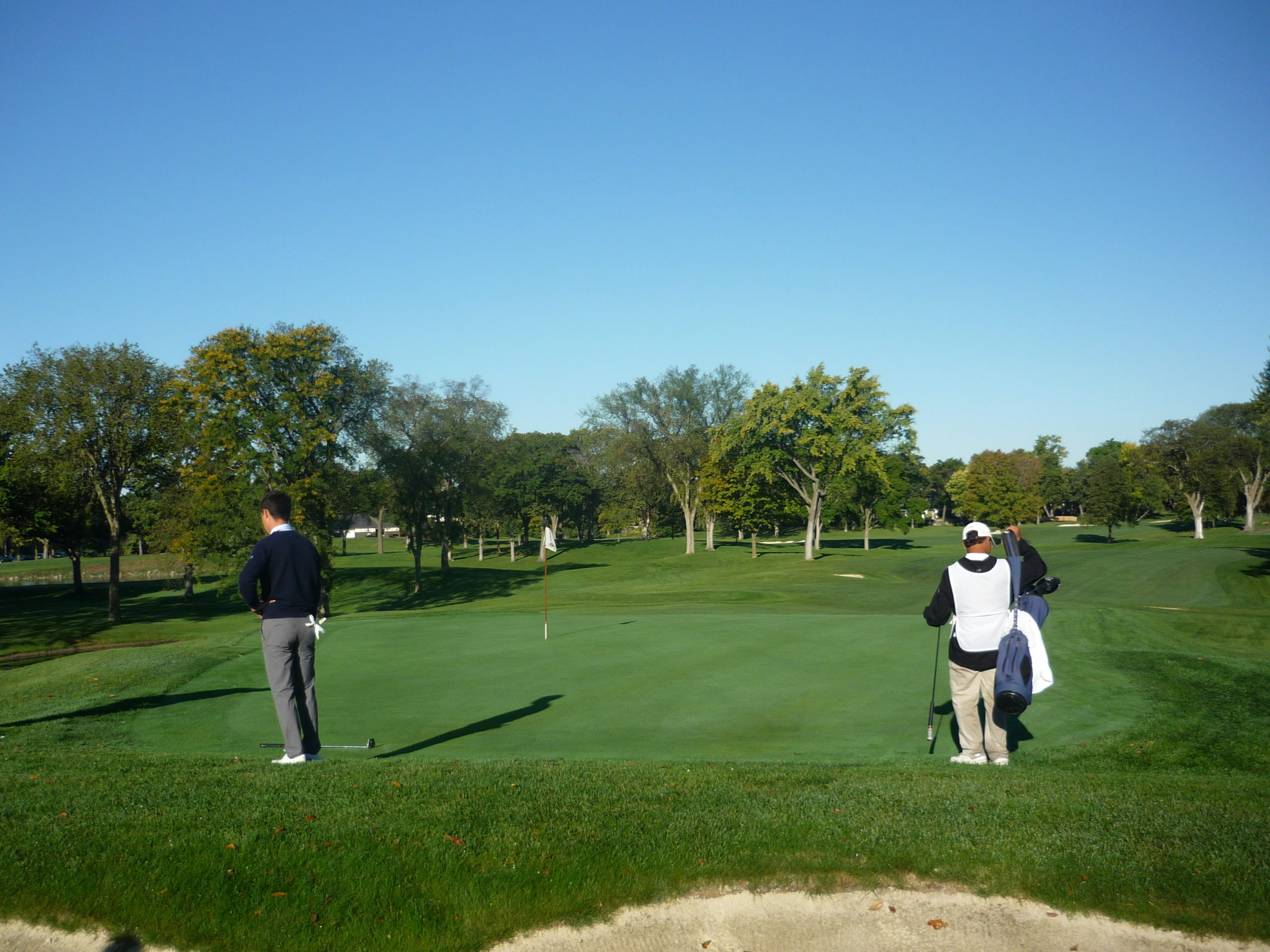
Hole 3 – 172 yards – Par 3
The pond to the left is more in play than it might seem. The green is actually quite large with the section stretching out behind the left bunker.
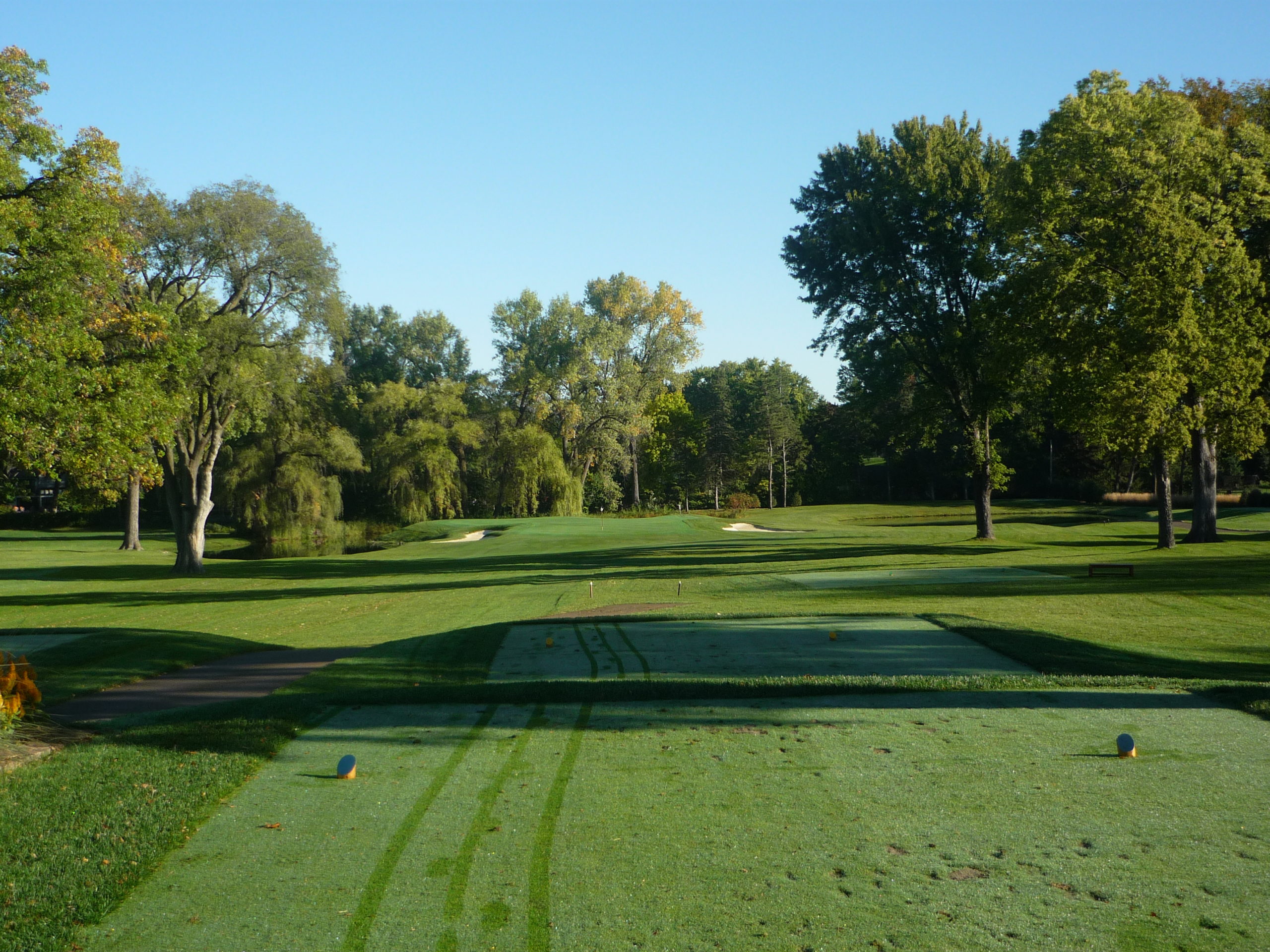
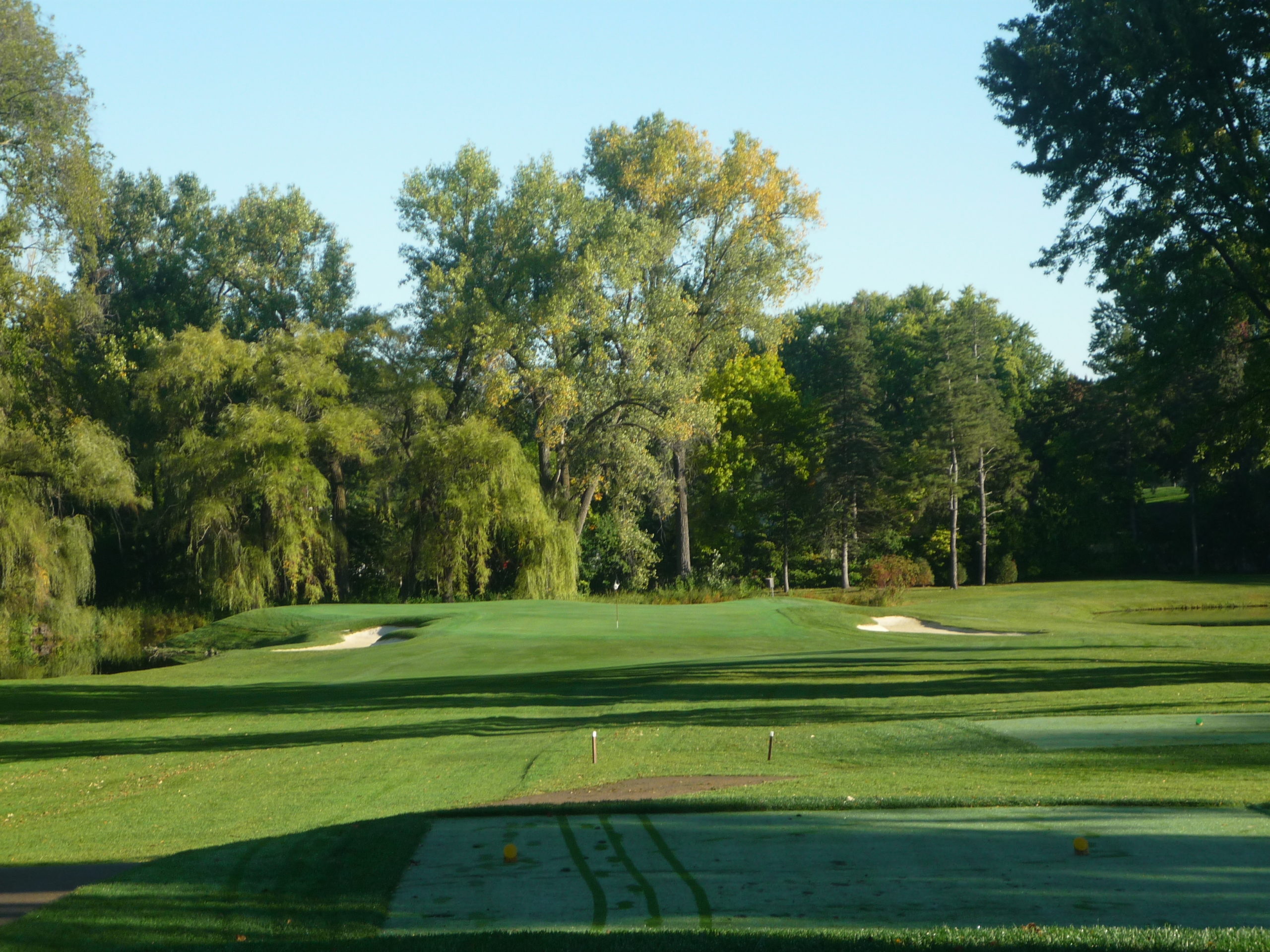
The green complex is quite interesting with the back left section. I can only imagine how wild it is to play the hole with the back left pin.
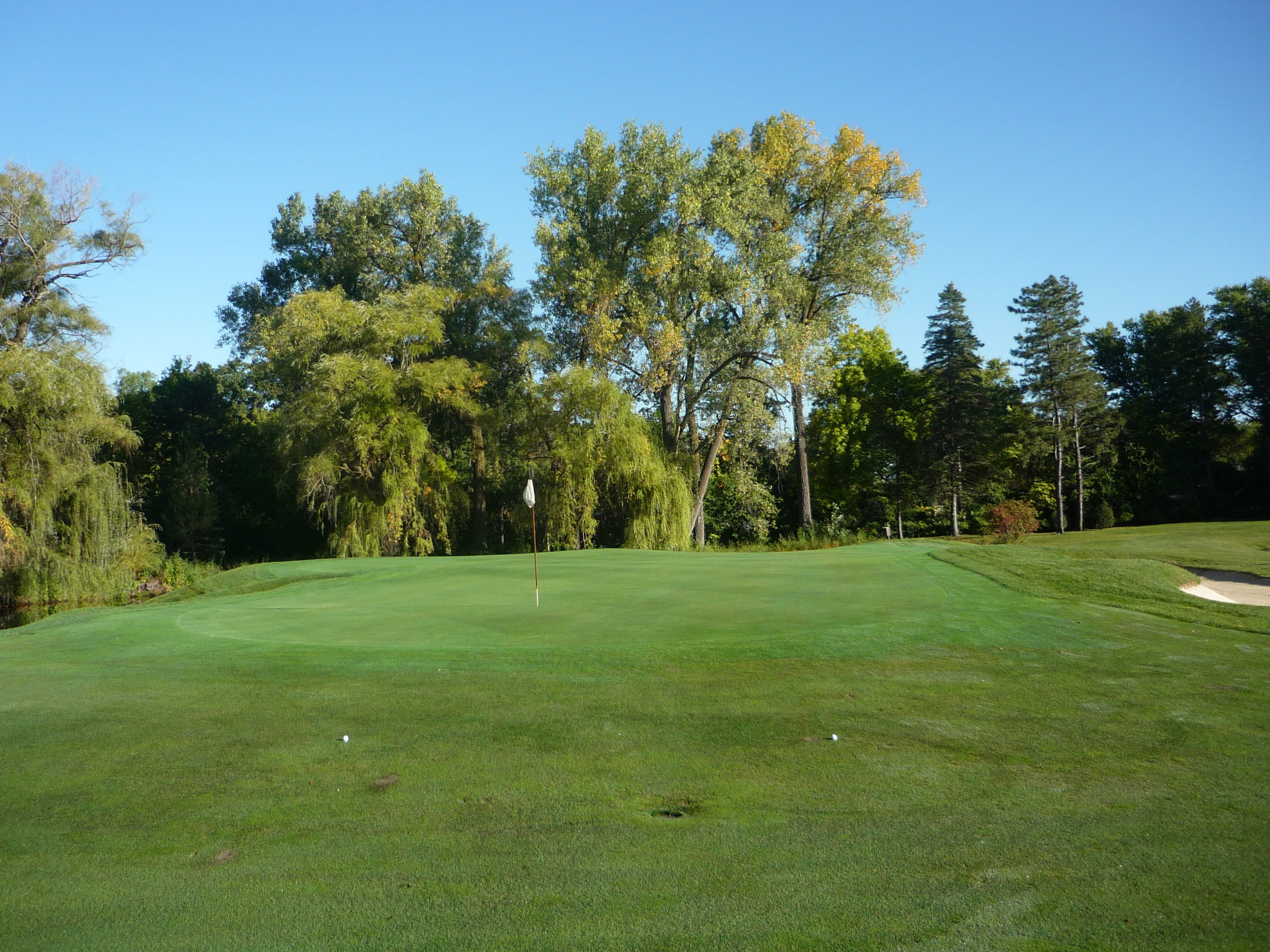
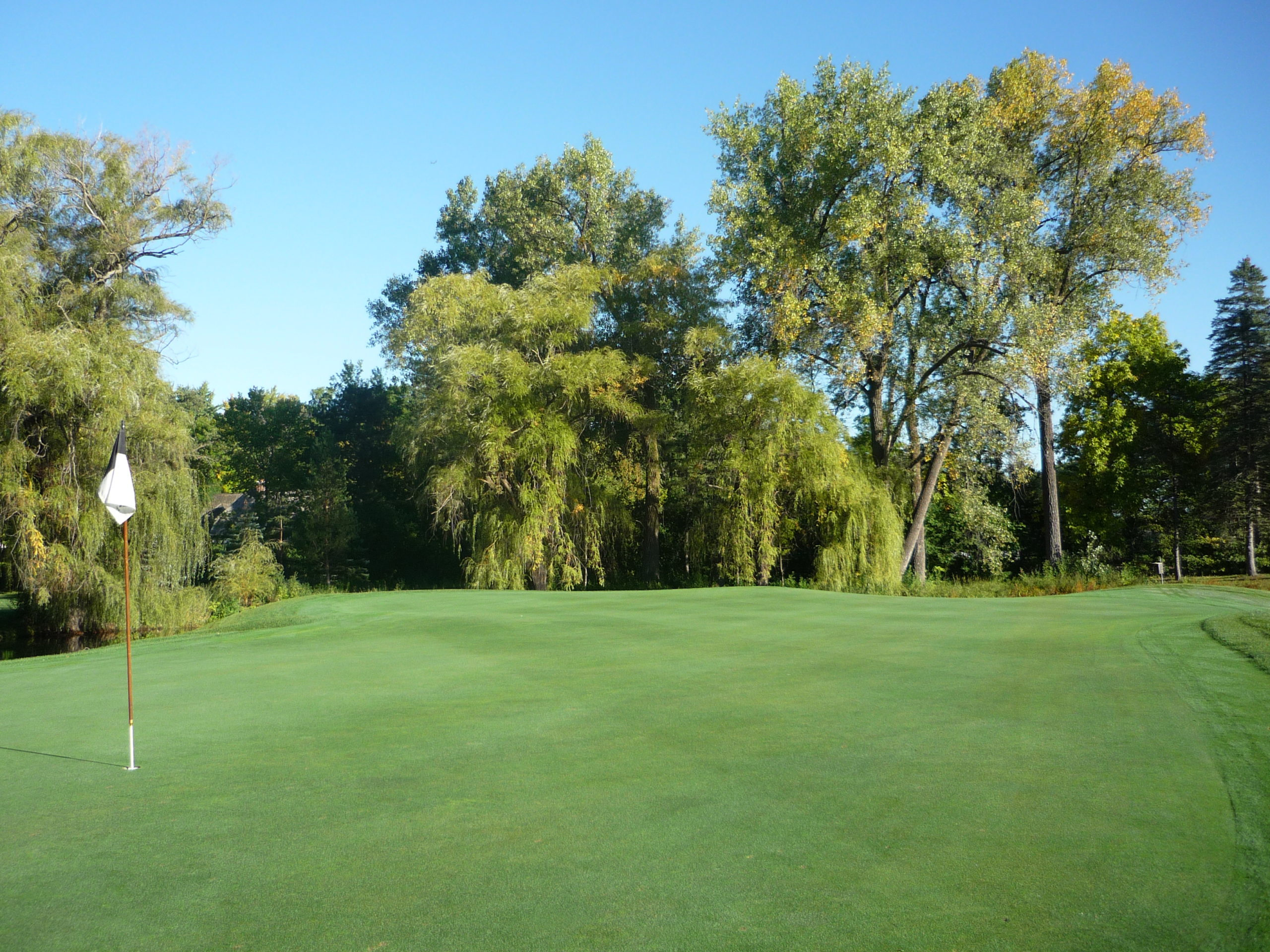
Hole 4 – 519 yards – Par 5
Now is the time to play up the right side of the hole. Drives will bounce left with the fairway canting that way. The landing area is blind from the tee before the hole opens up to reveal the green.
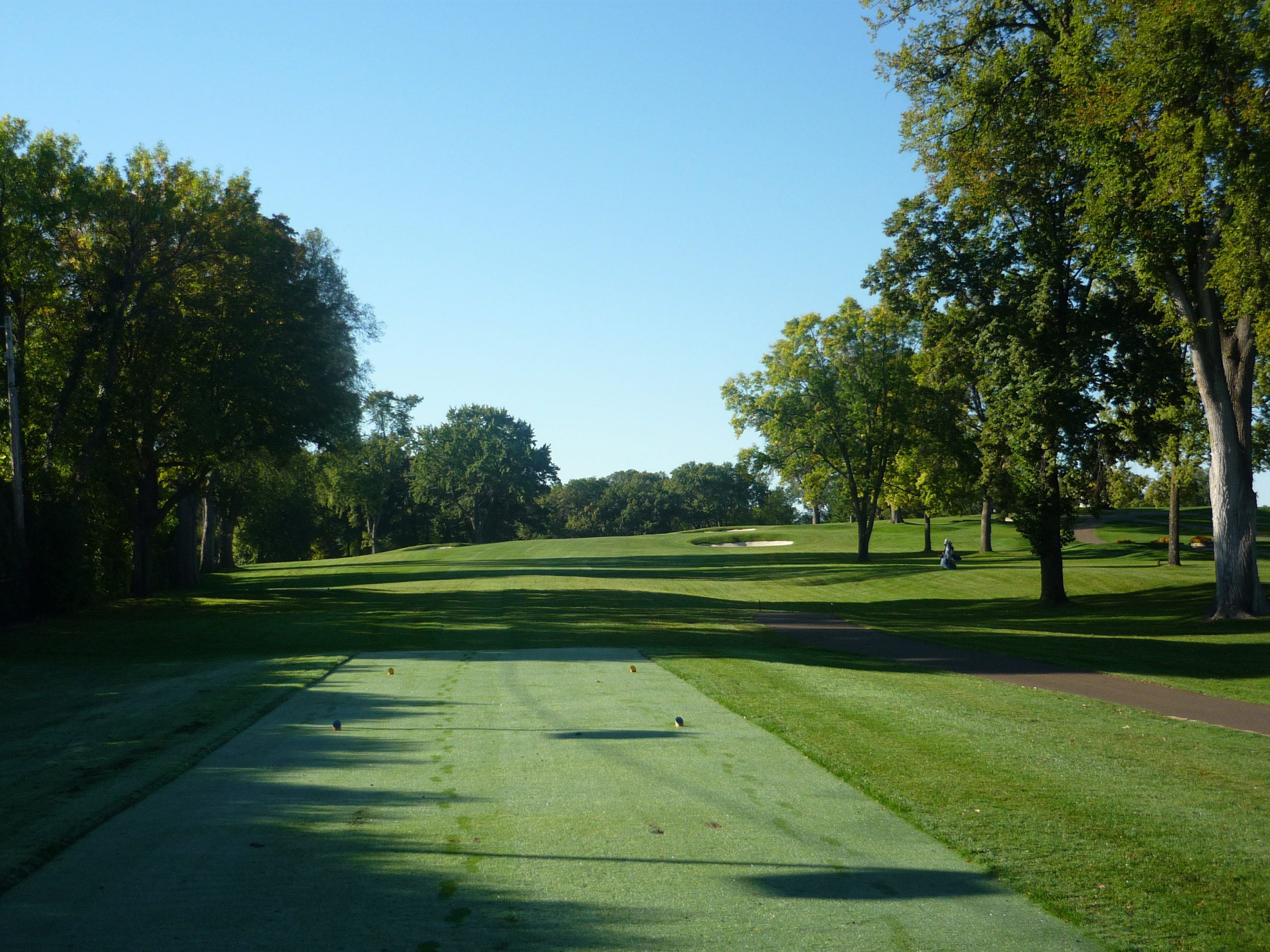
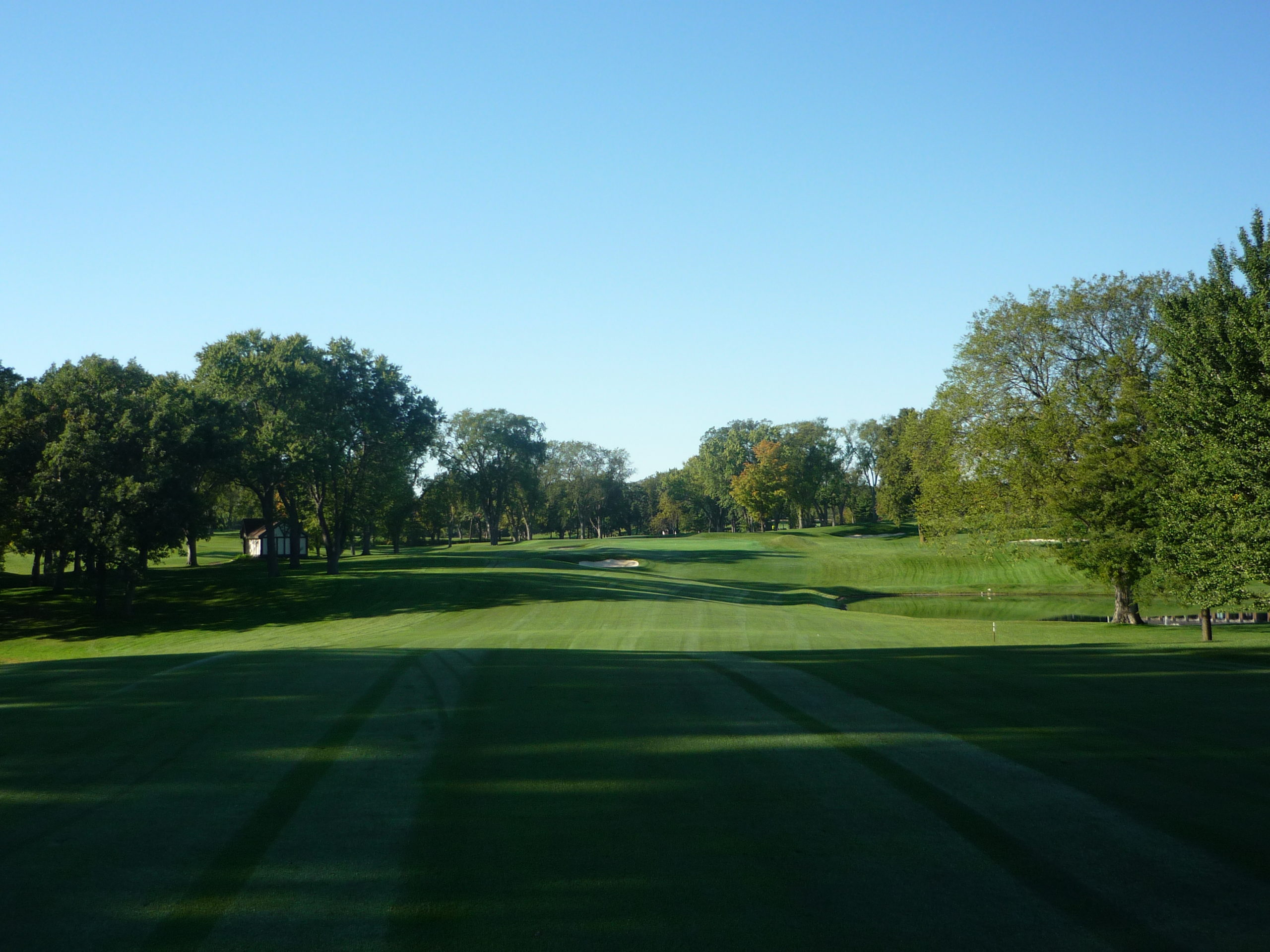
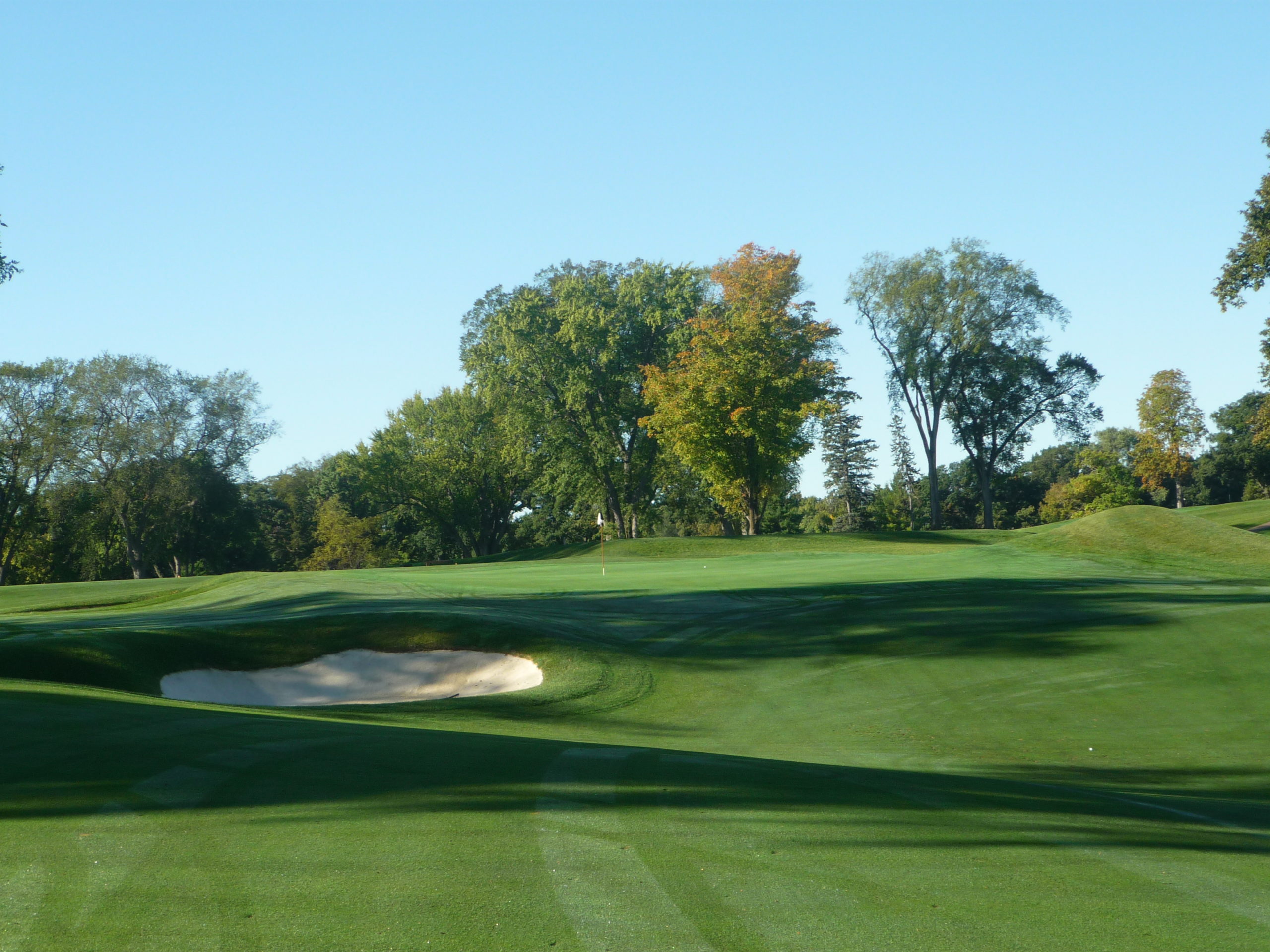
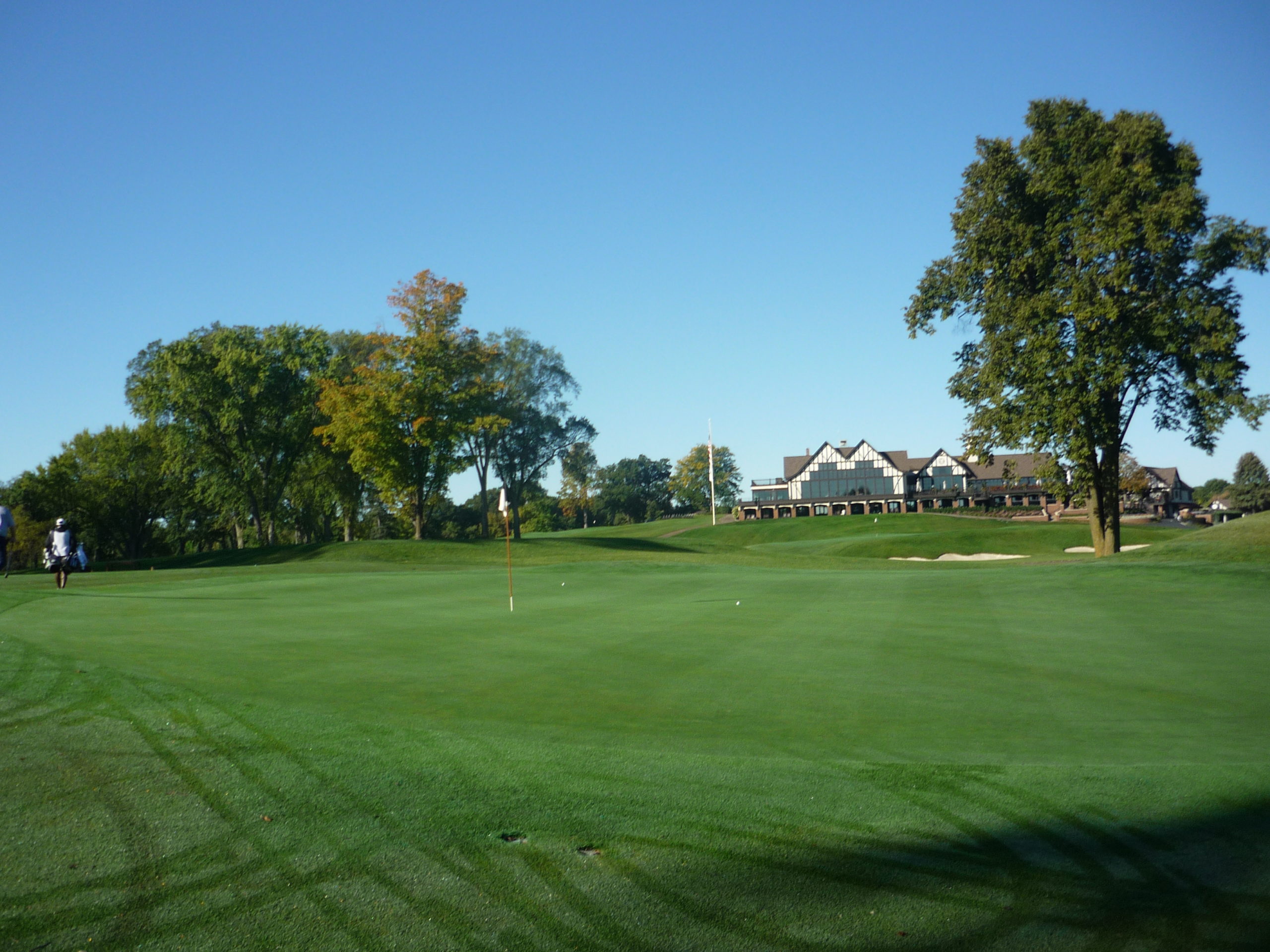
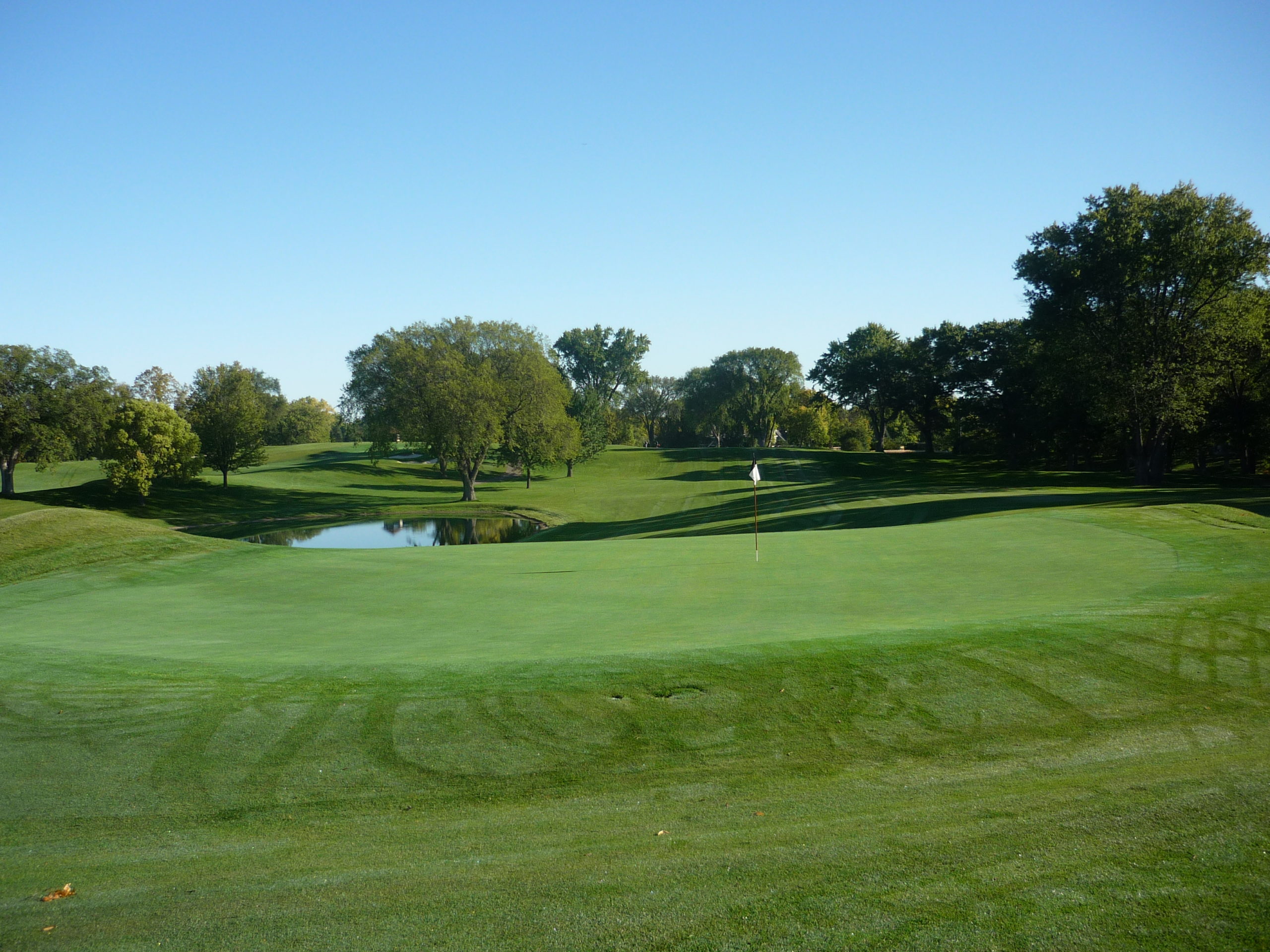
Hole 5 – 162 yards – Par 3
Similar to the previous par 3, this one plays slightly downhill. The difference here is the green is much more severely sloped.
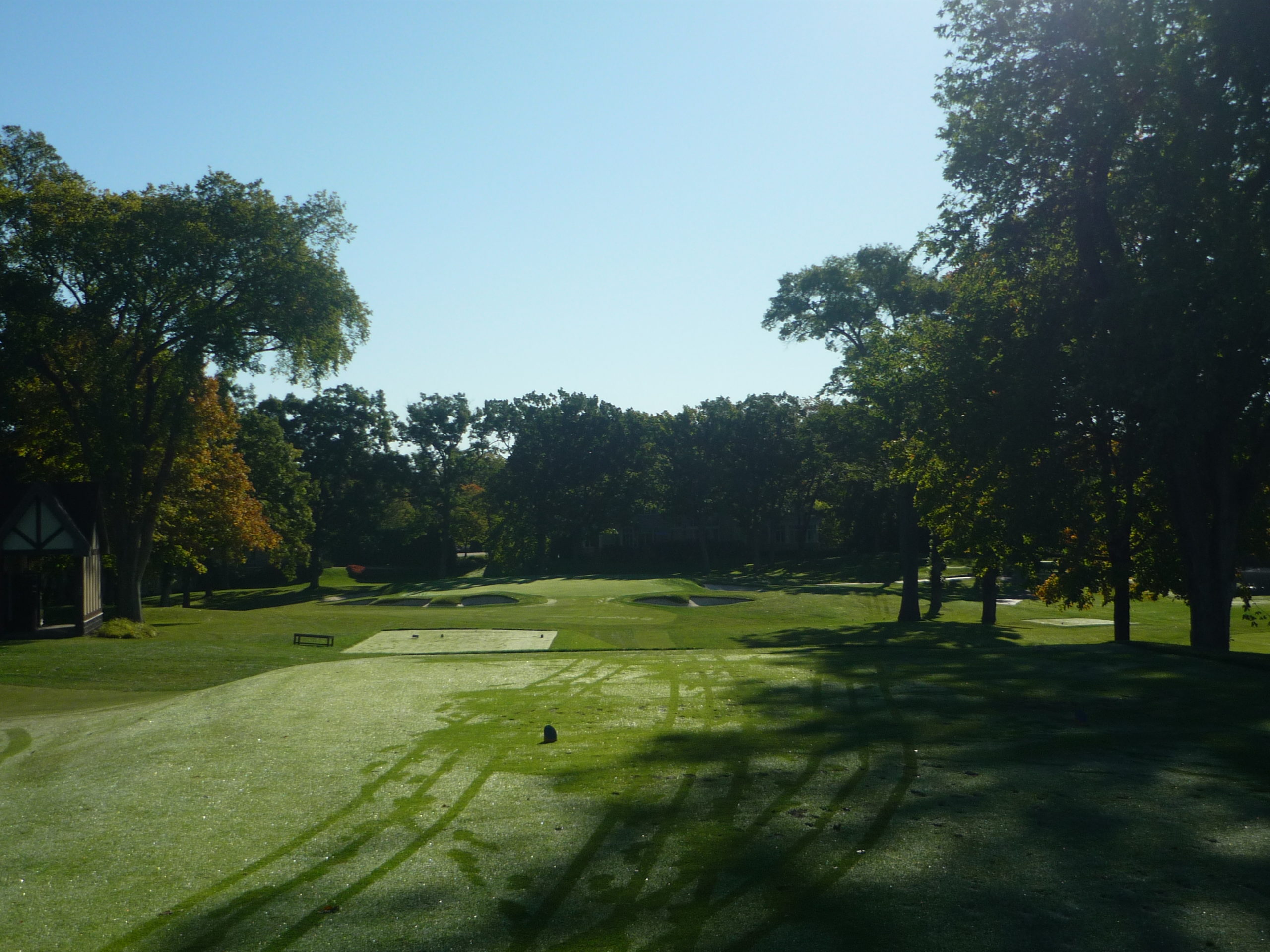
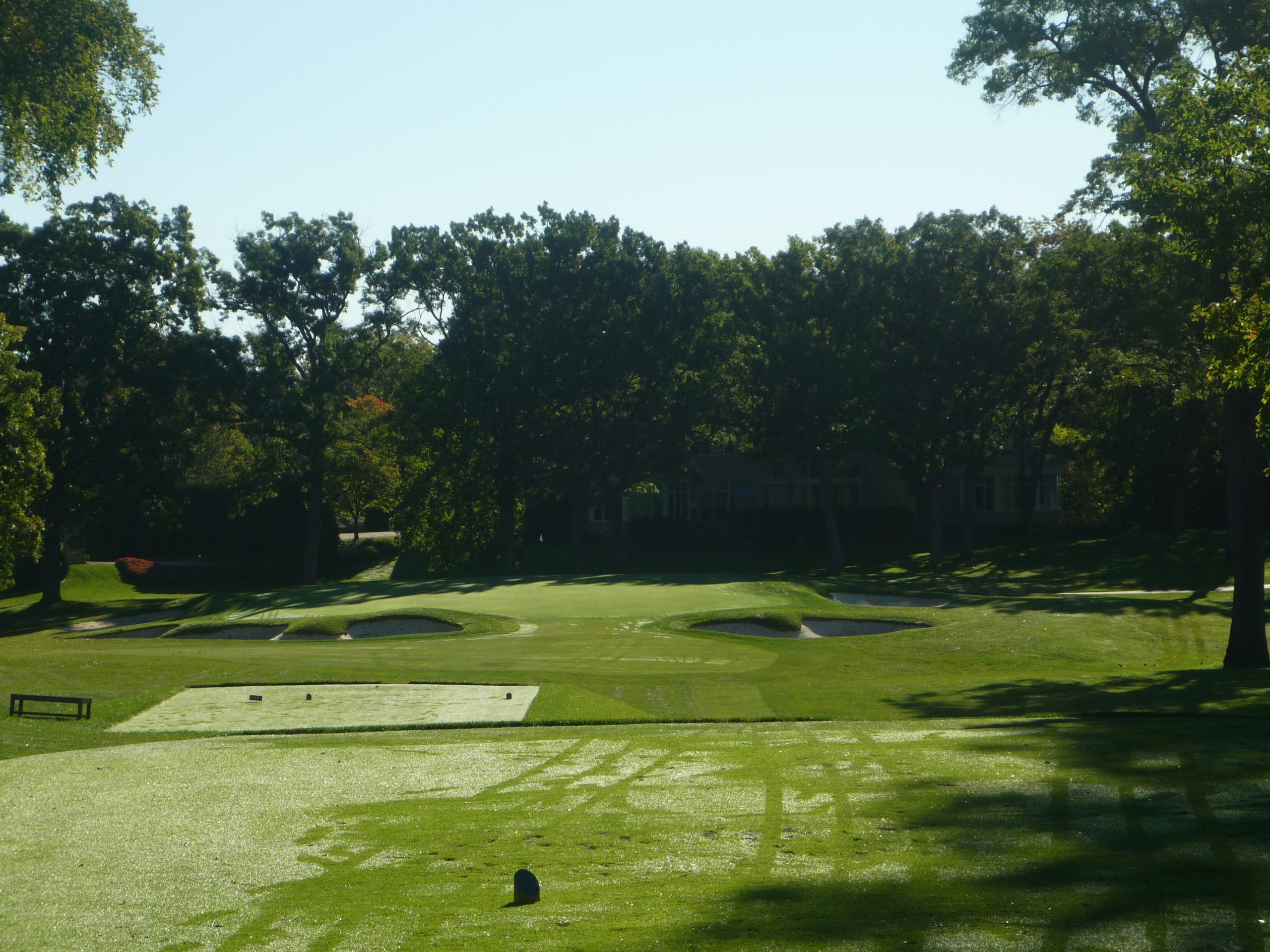
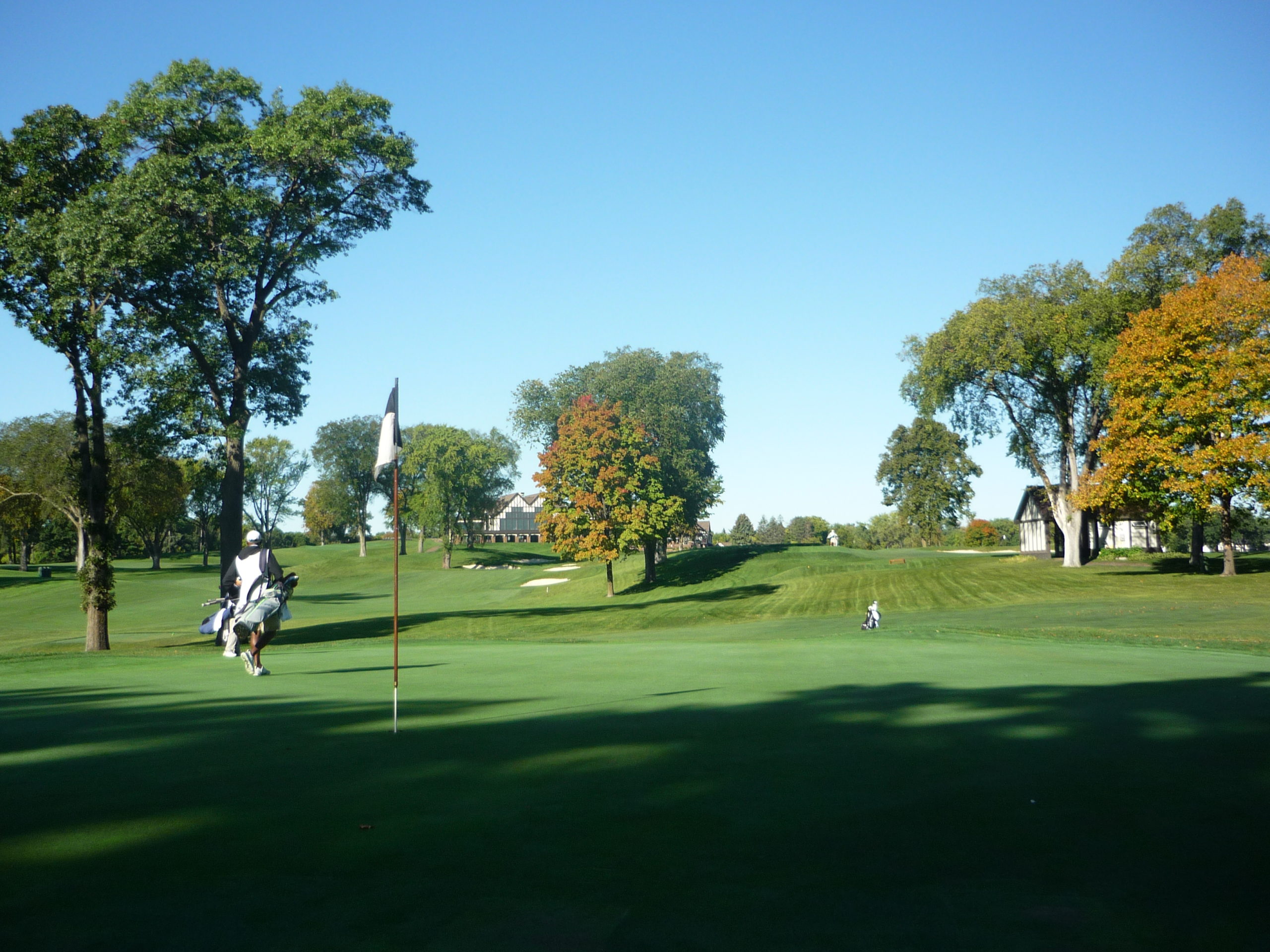
Hole 6 – 328 yards – Par 4
The goal from this tee is to play to the proper portion of the fairway (center or right). I hit my tee shot up the left side and had a very tough approach to the small, perched green.
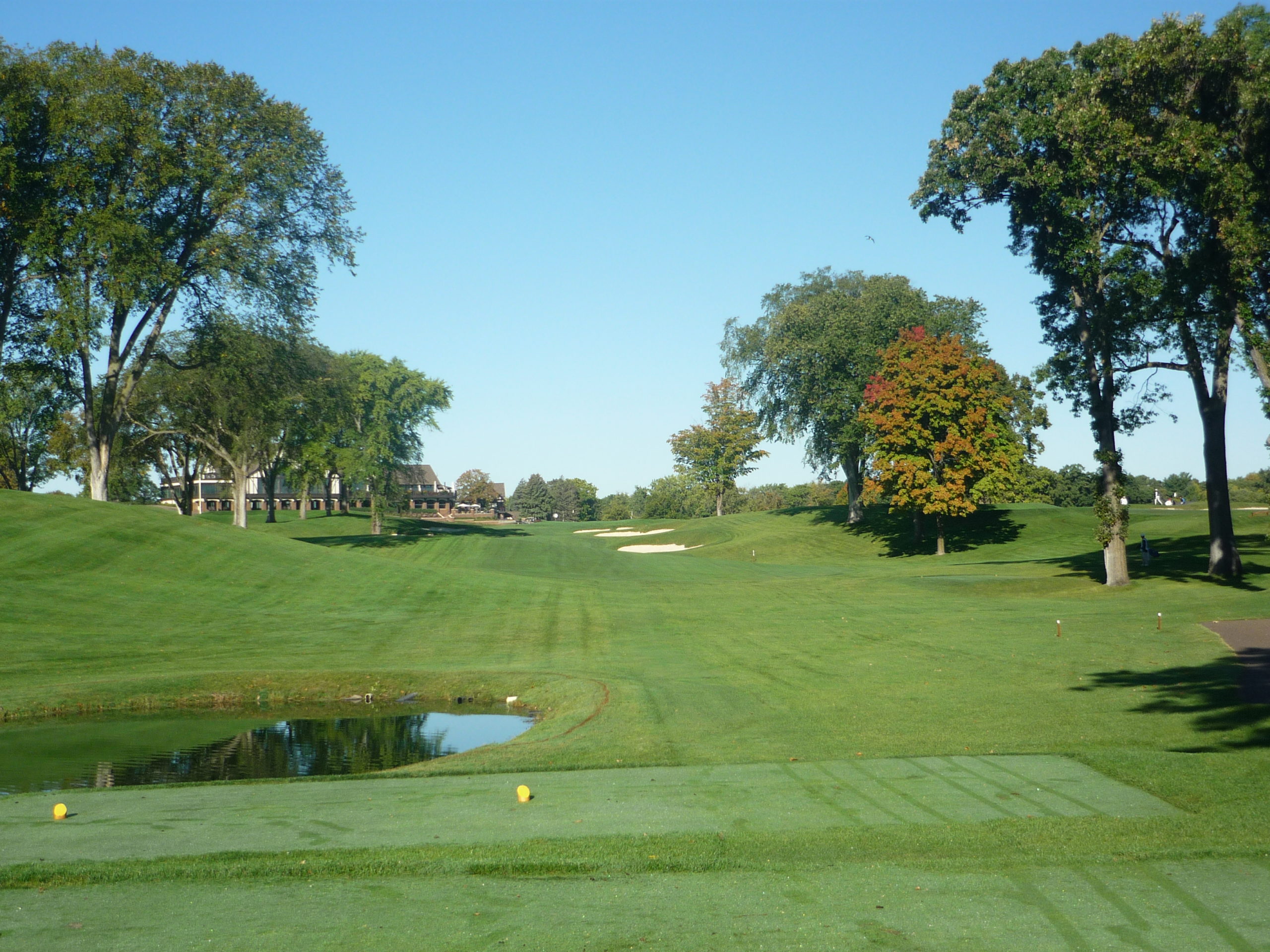
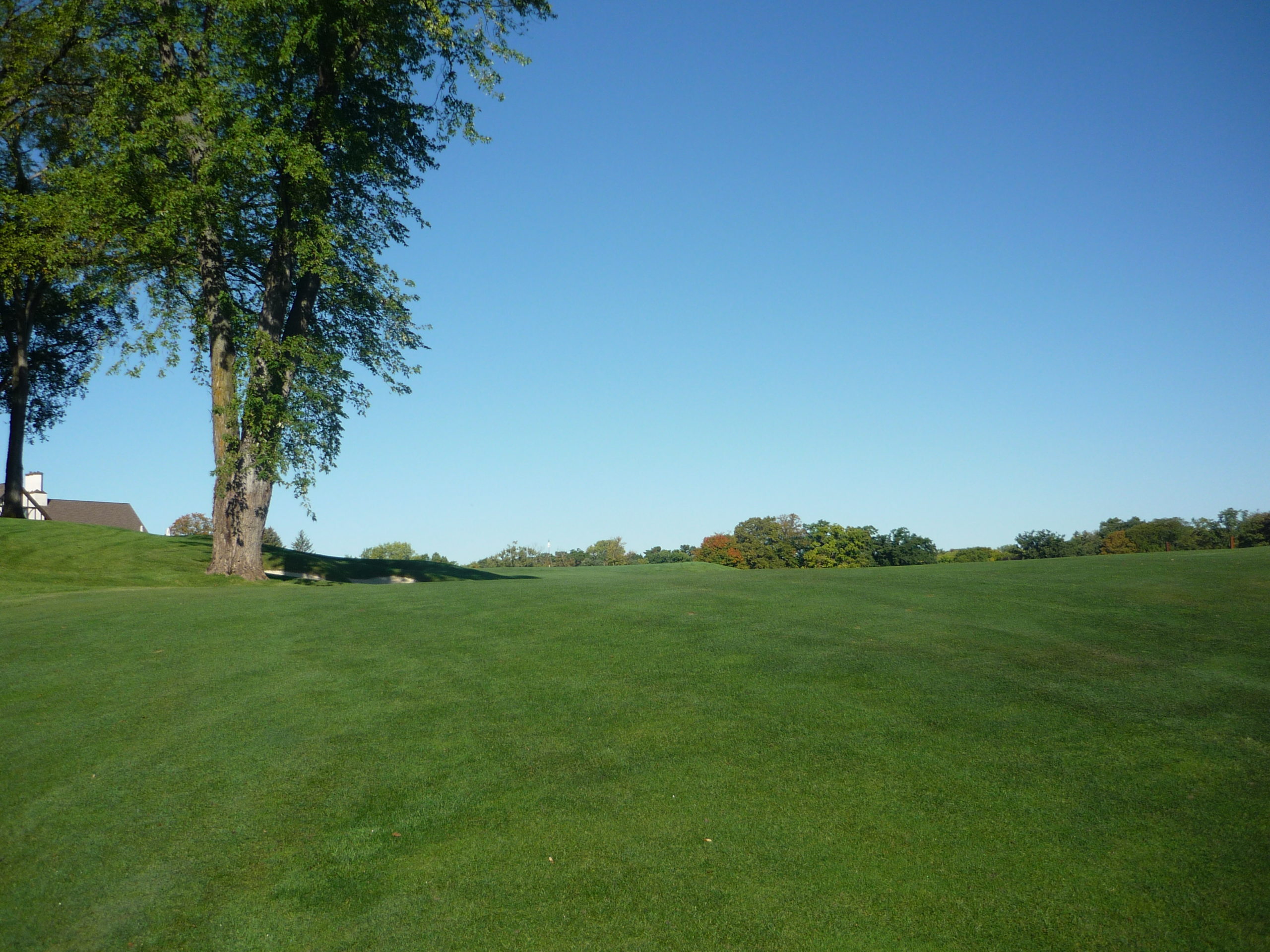
You can really see the difficulty of this green site in the photos below.
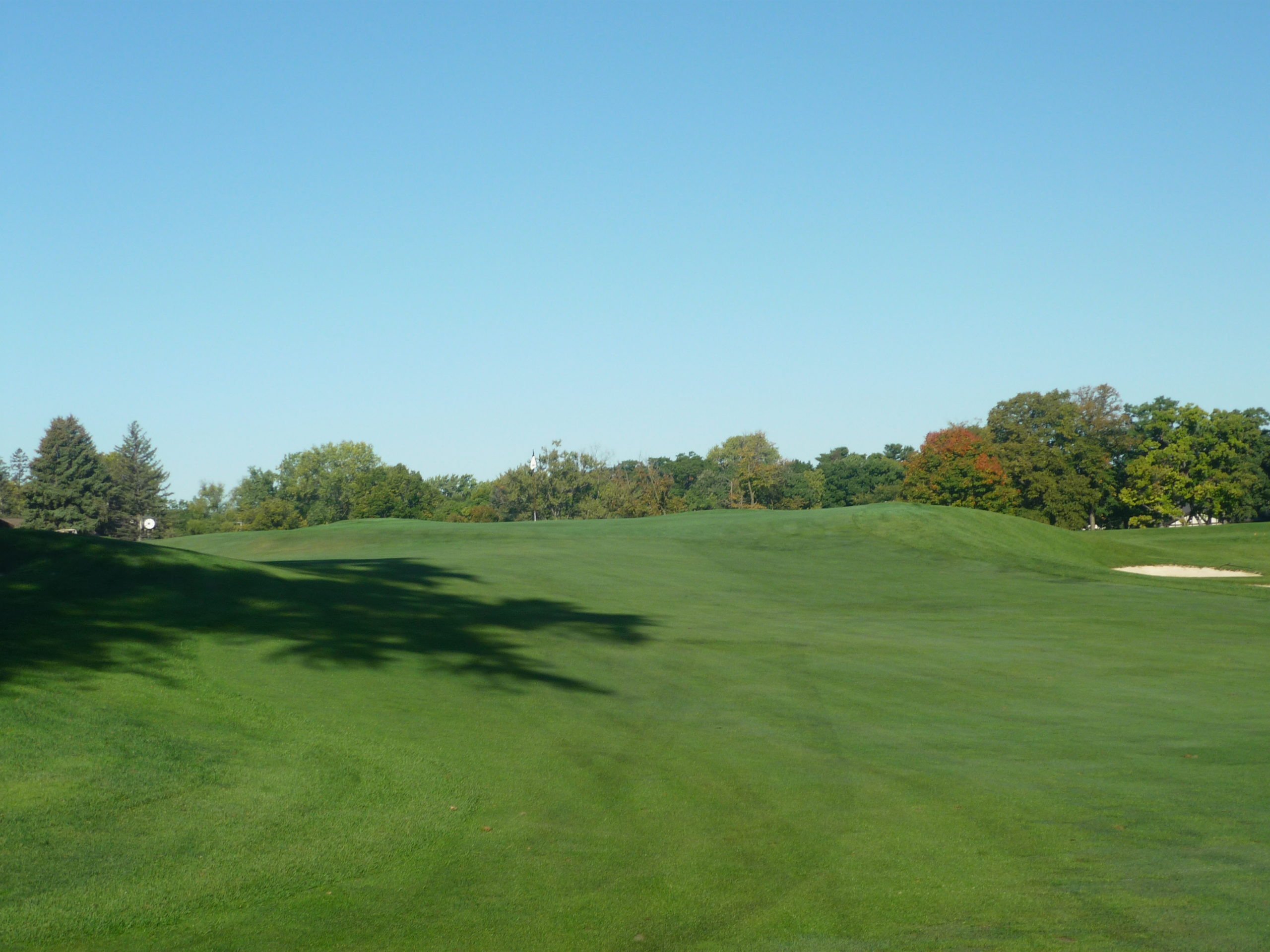
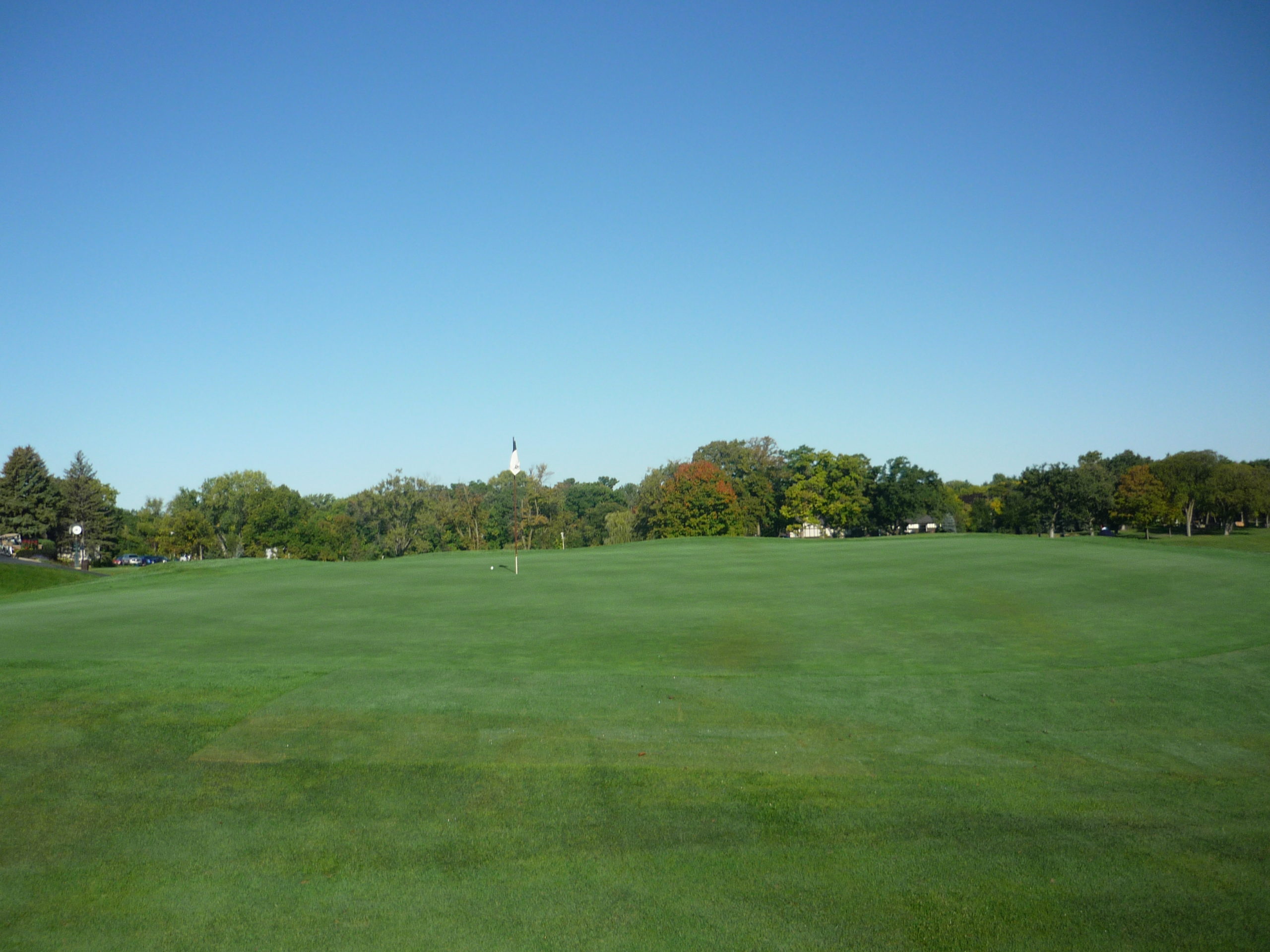
Hole 7 – 343 yards – Par 4
Bunkers galore defend this hole from tee to green. Tee shots to the left center of the fairway provide the best angle to the raised green.
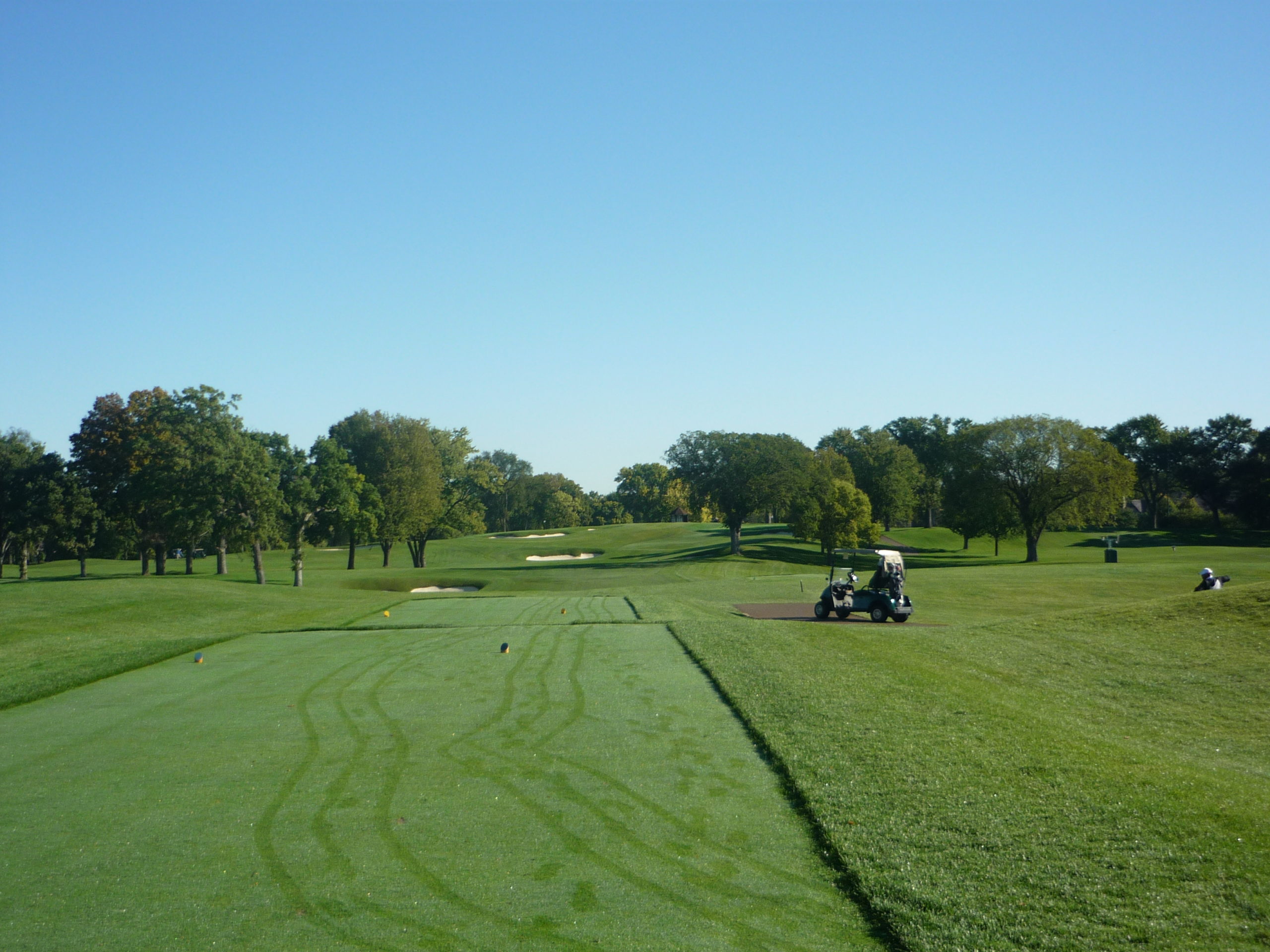
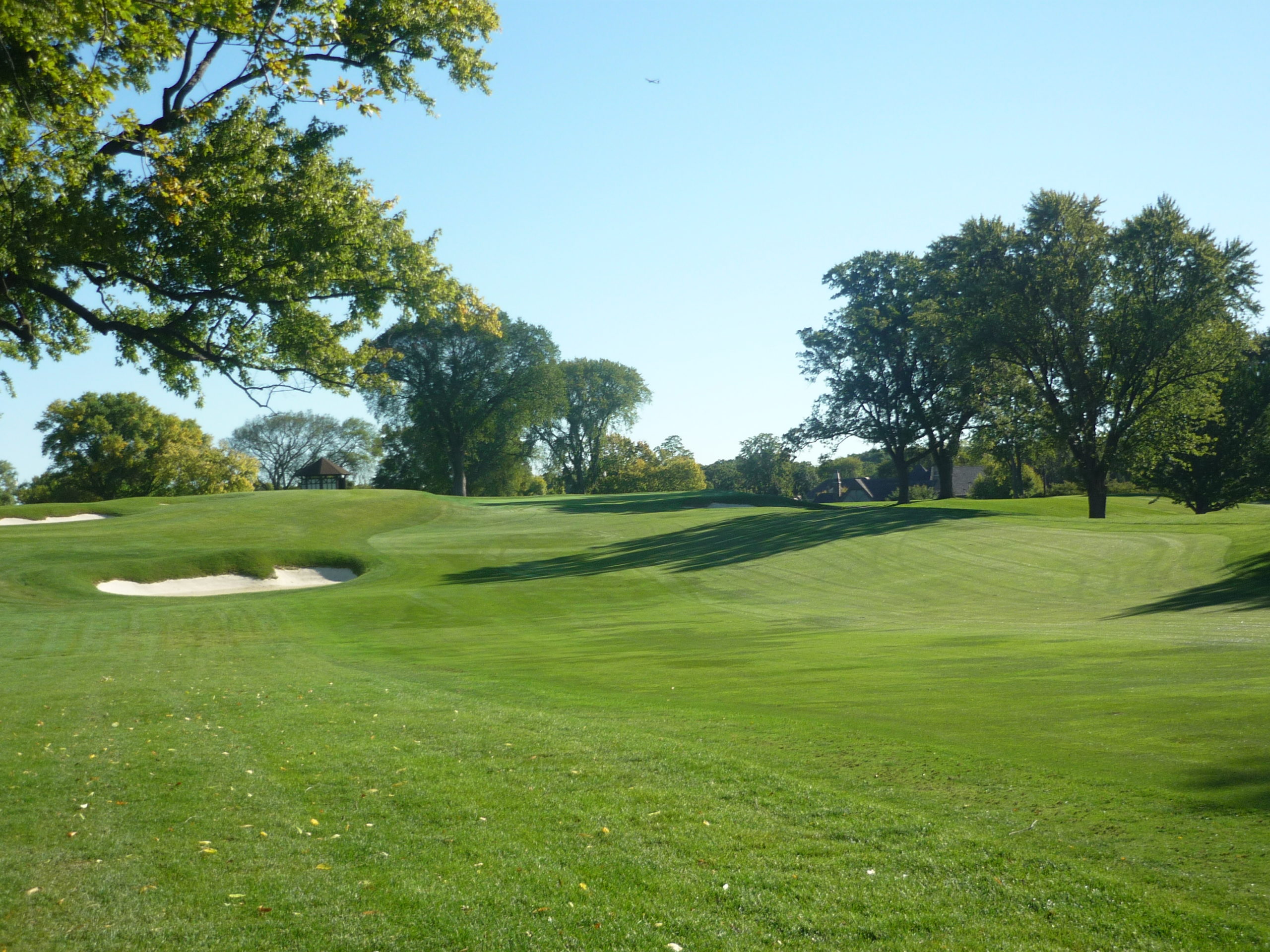
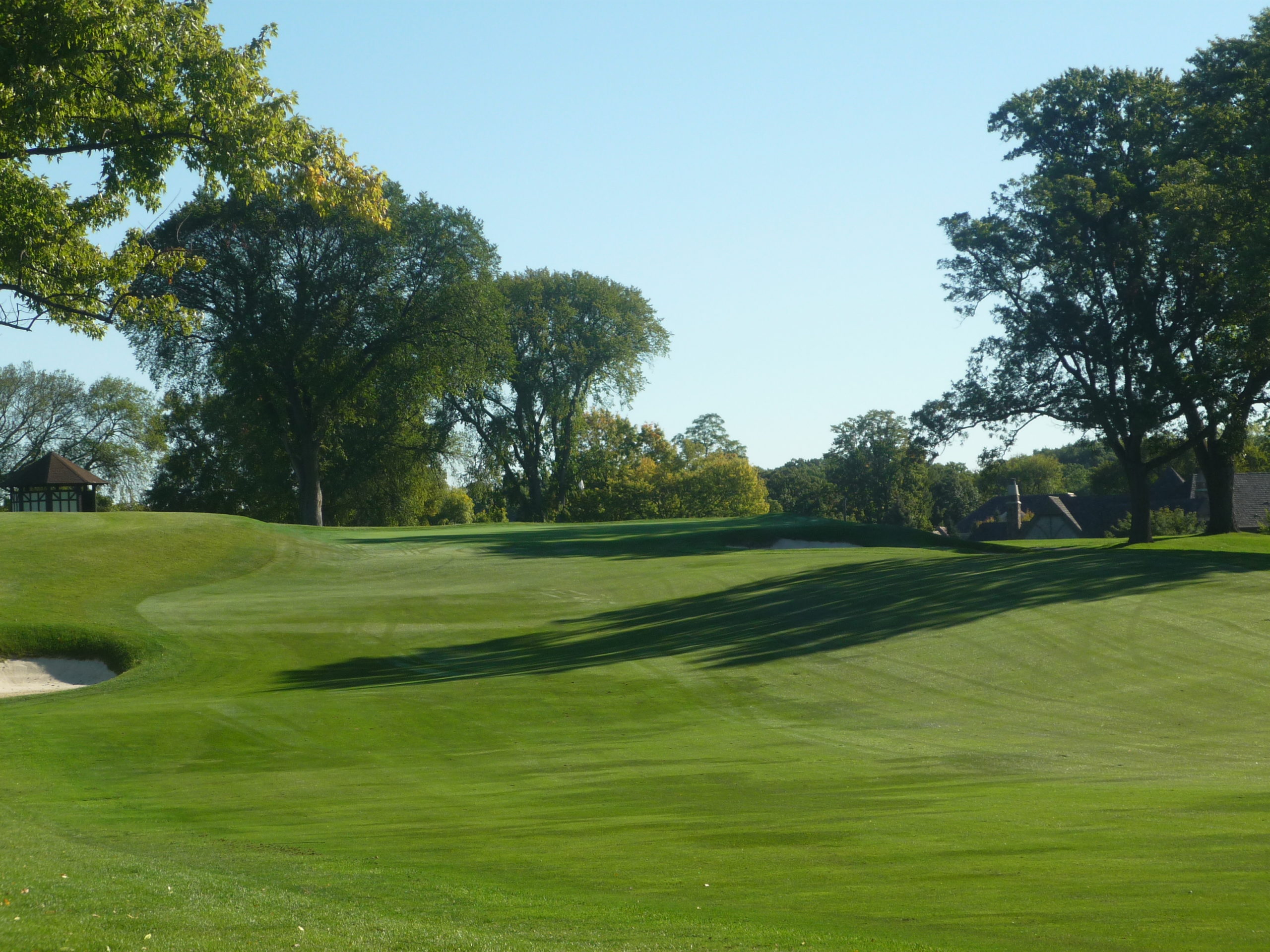
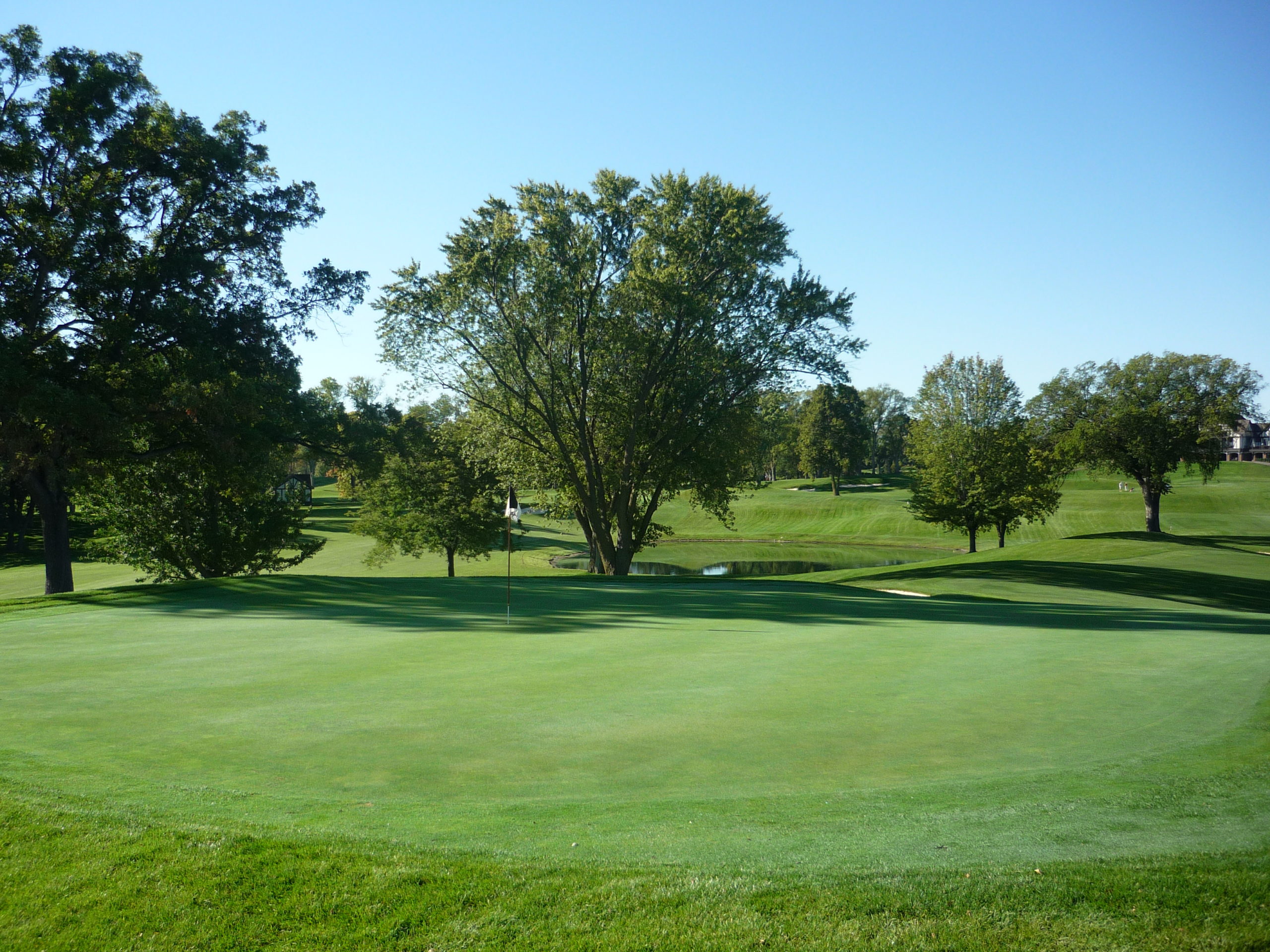
Hole 8 – 405 yards – Par 4
Make sure you know your carry distance because you’ll want to skirt or carry the bunkers on the left to have the best angle into the green. The hole bends slightly left.
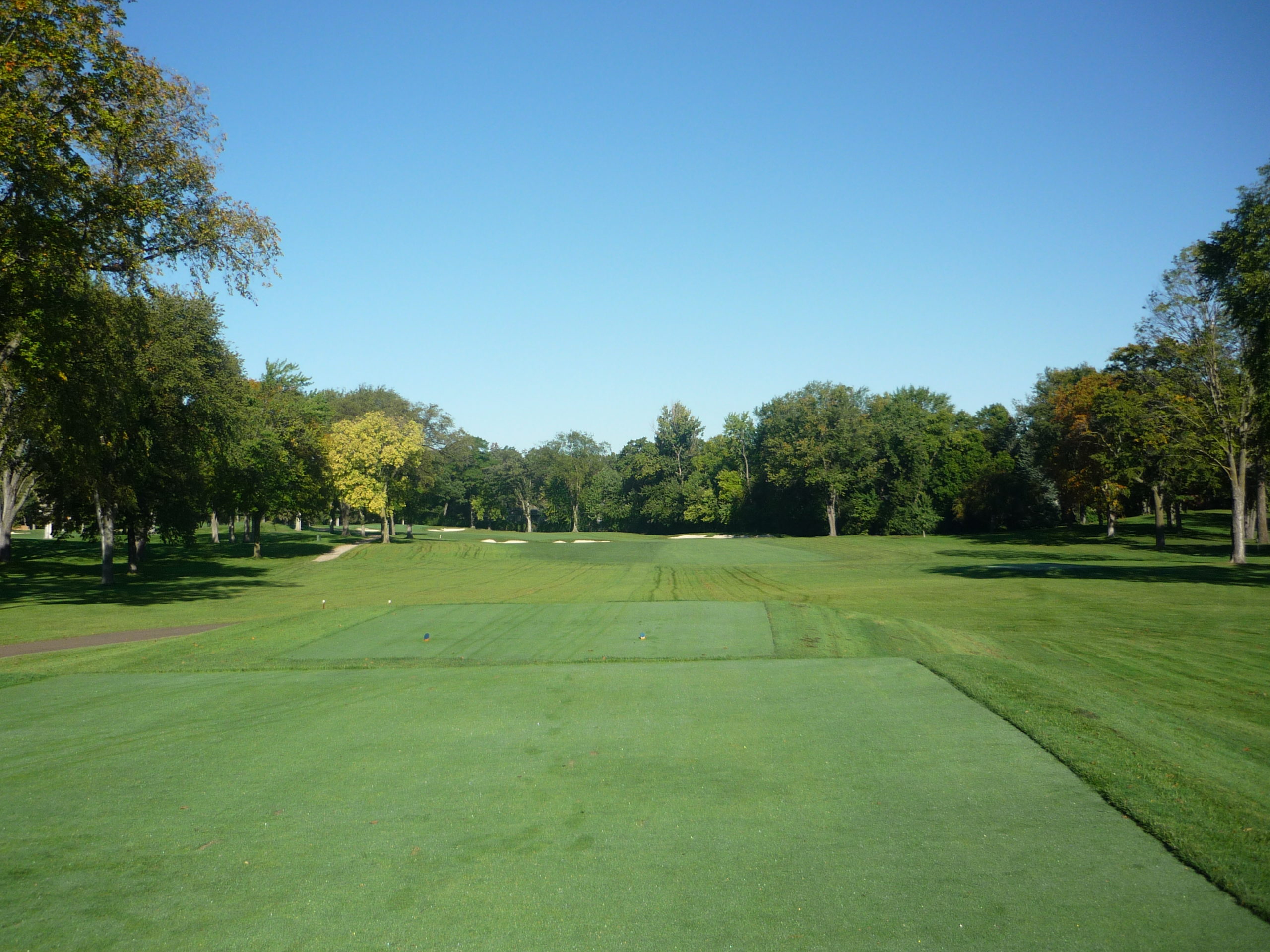
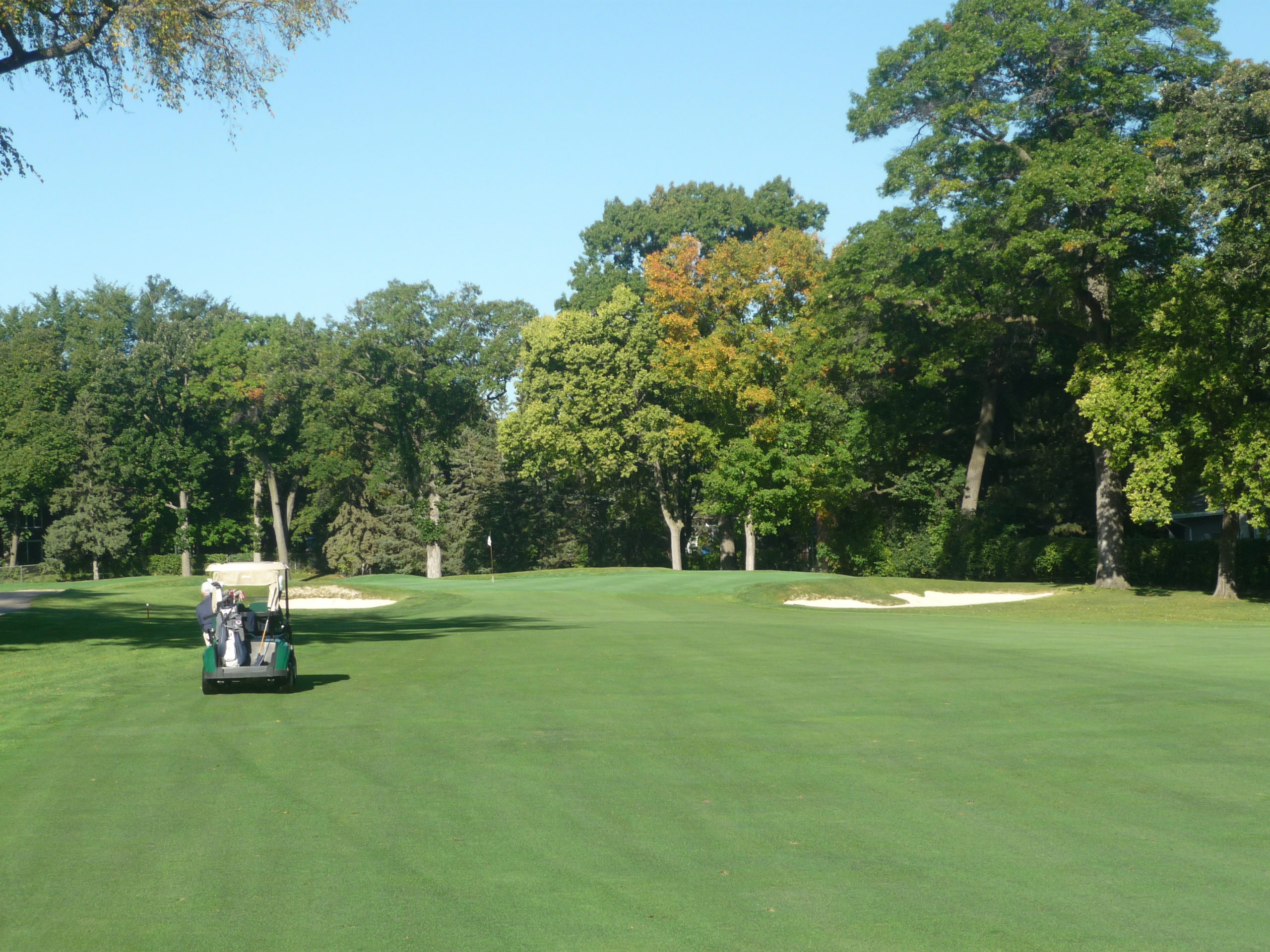
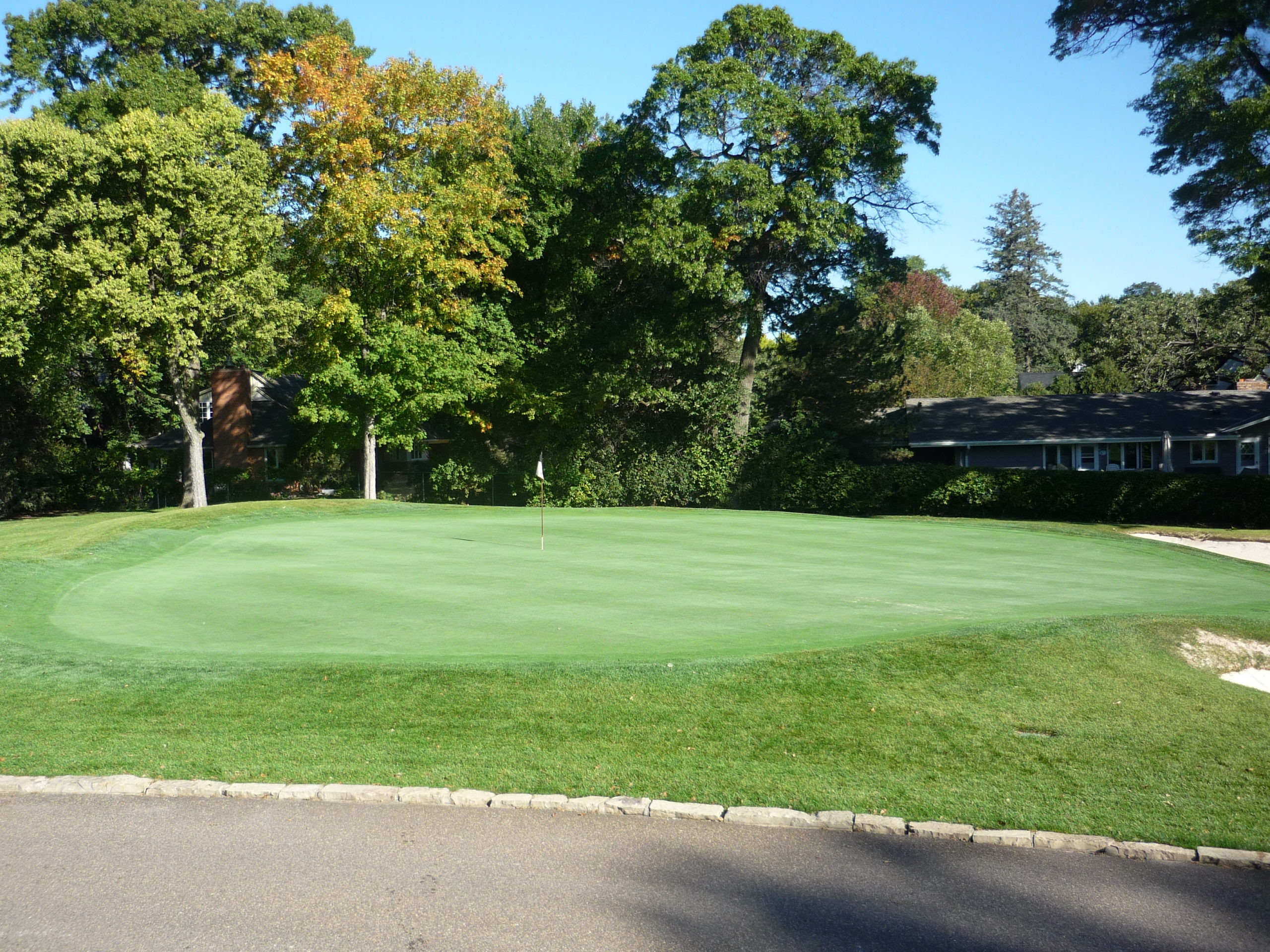
Hole 9 – 518 yards – Par 5
The ninth has plenty of history which we’ll get to in a bit. Keep your drives out of the bunker if you want to score on this hole.
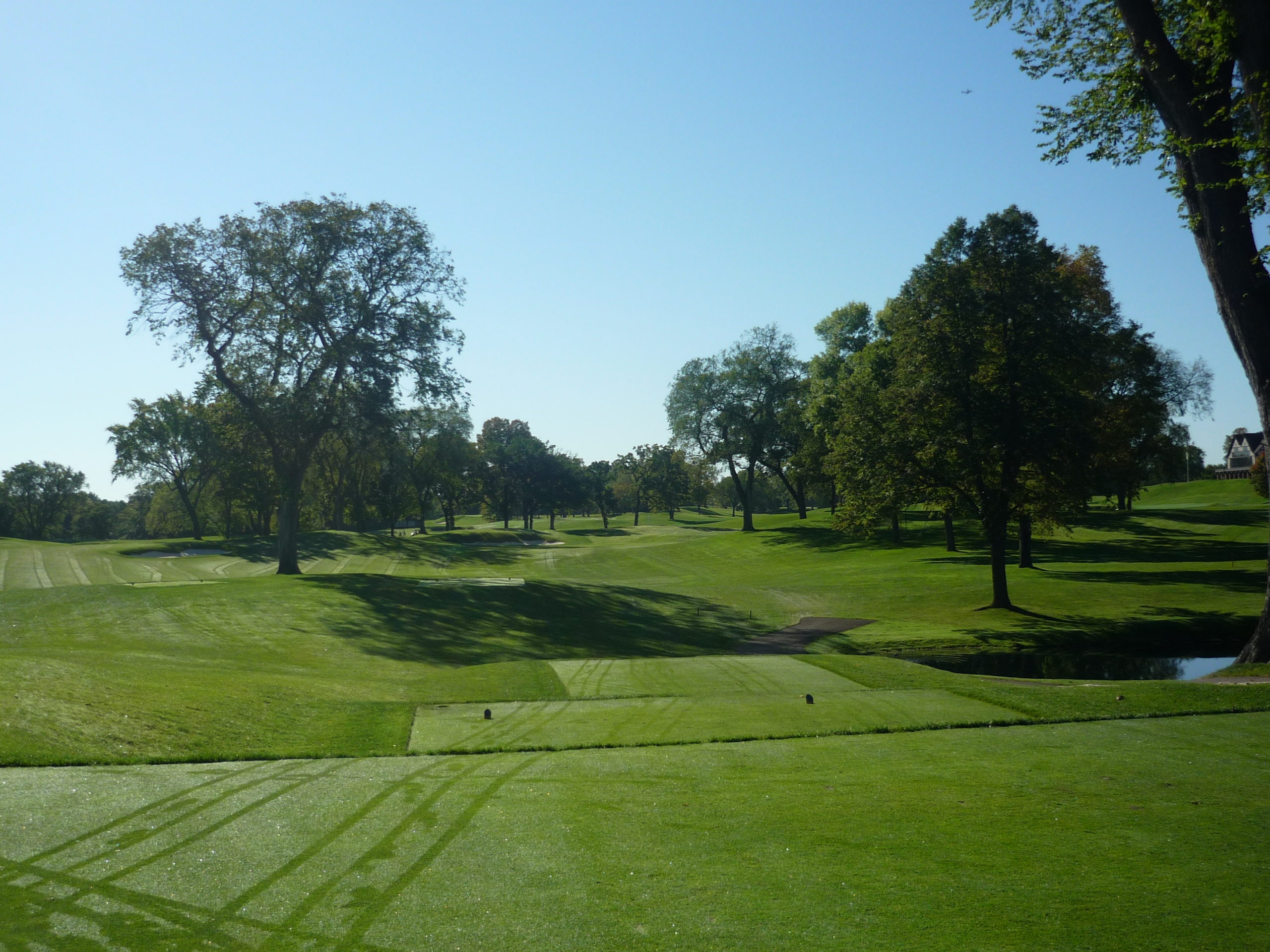
You can’t see the large water hazard here but is has to be considered.
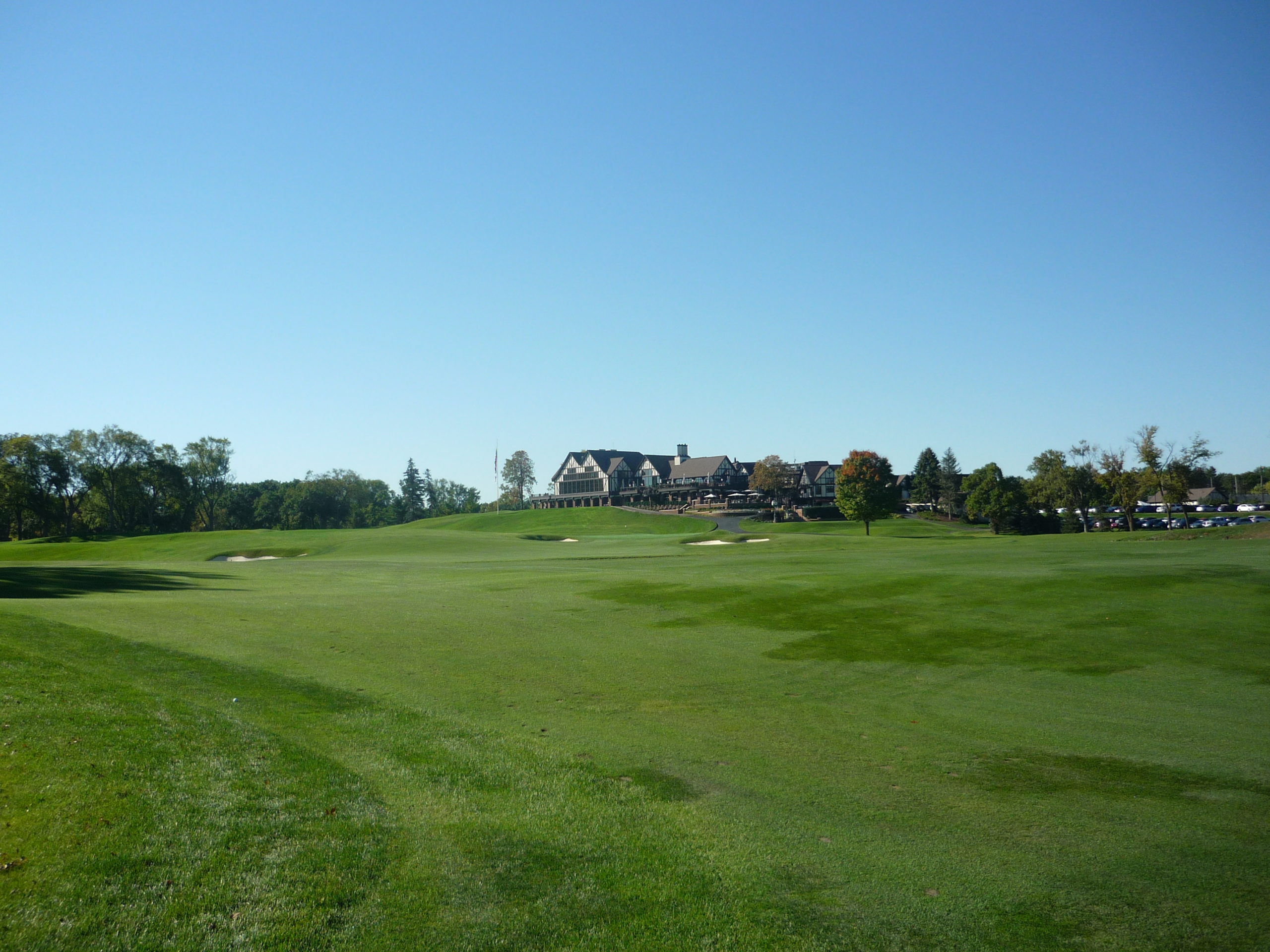
Here’s the history I was talking about. Legend has it as he hit is three wood in the second round, moving spectators caused him to jerk and top the shot. In a miracle only the 1930s era could come up with, the ball hit a lily pad and skipped across the water. Jones went on to make birdie and win the tournament.
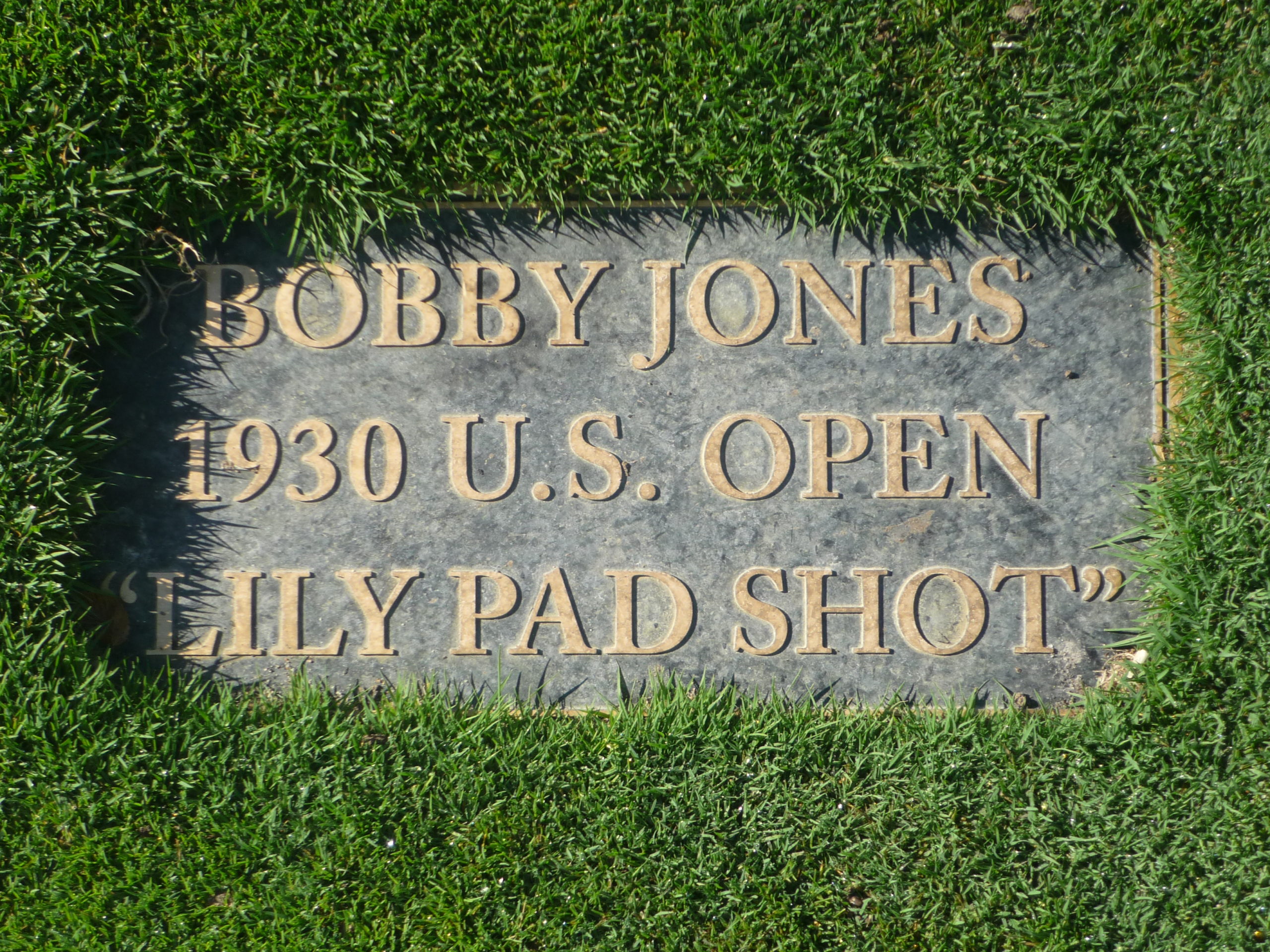
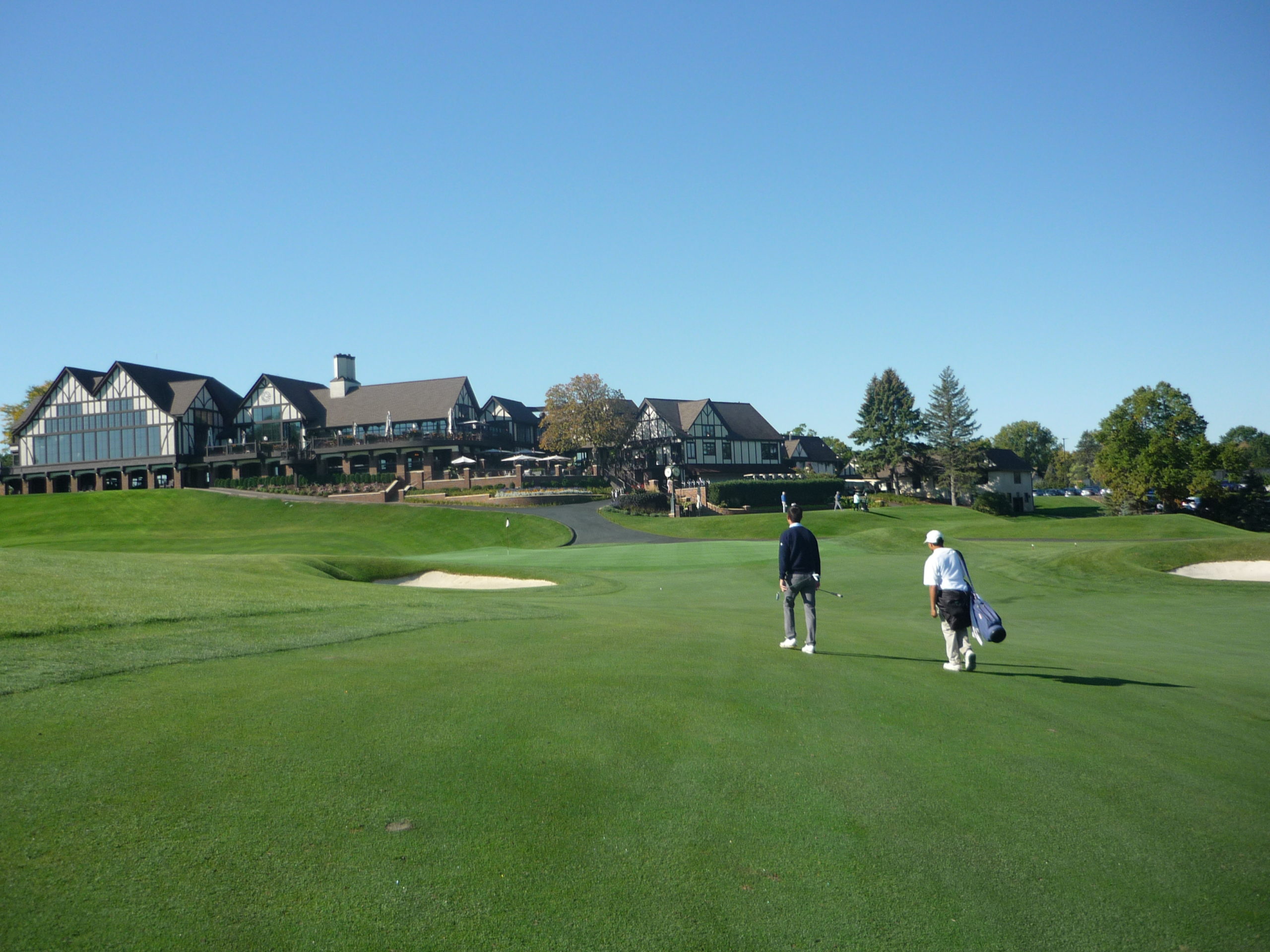
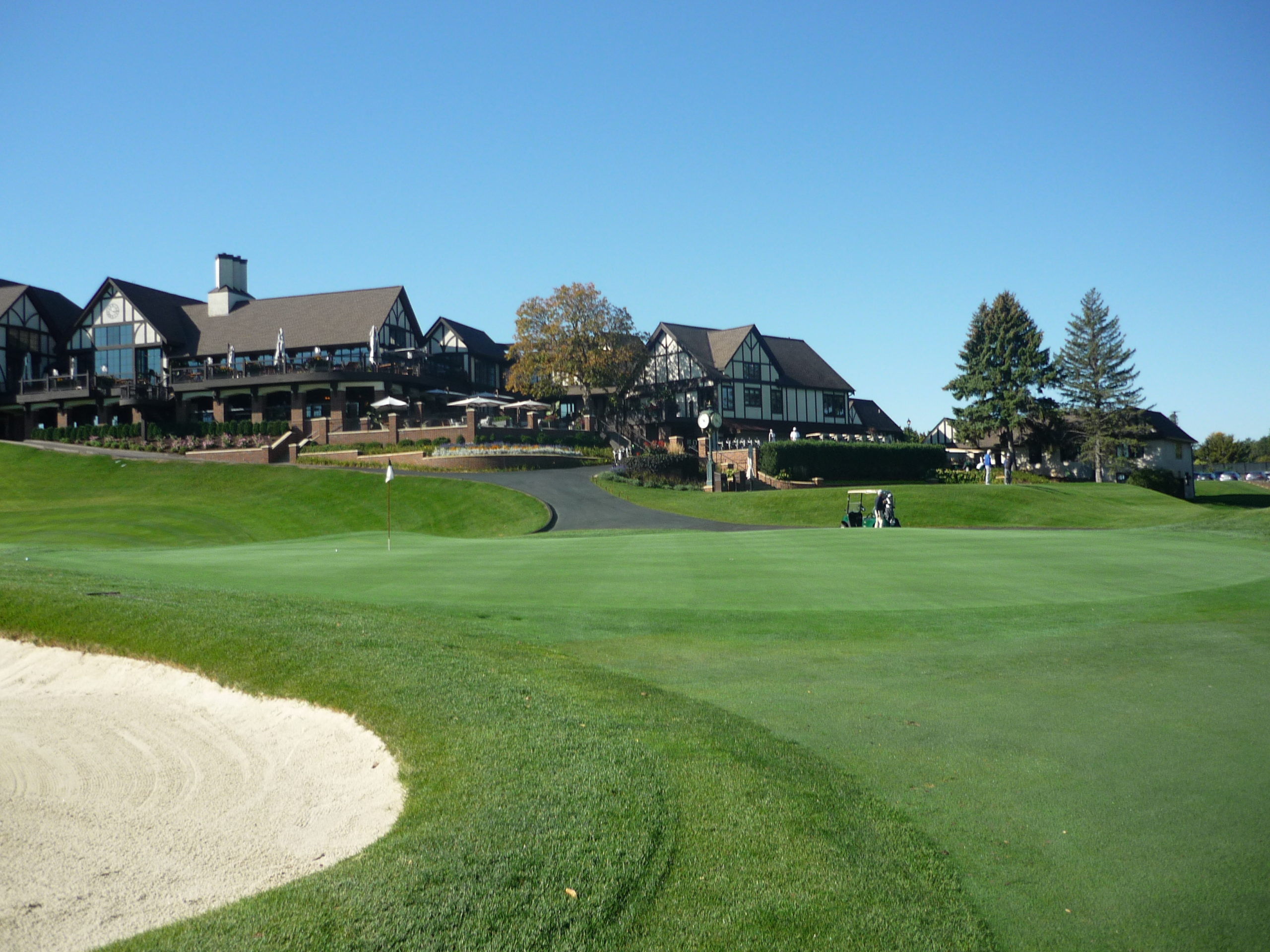
I know some don’t like them, but I’ve become fond of shots looking back at holes from behind the green. This one helps illustrate how the water comes into play on this hole.
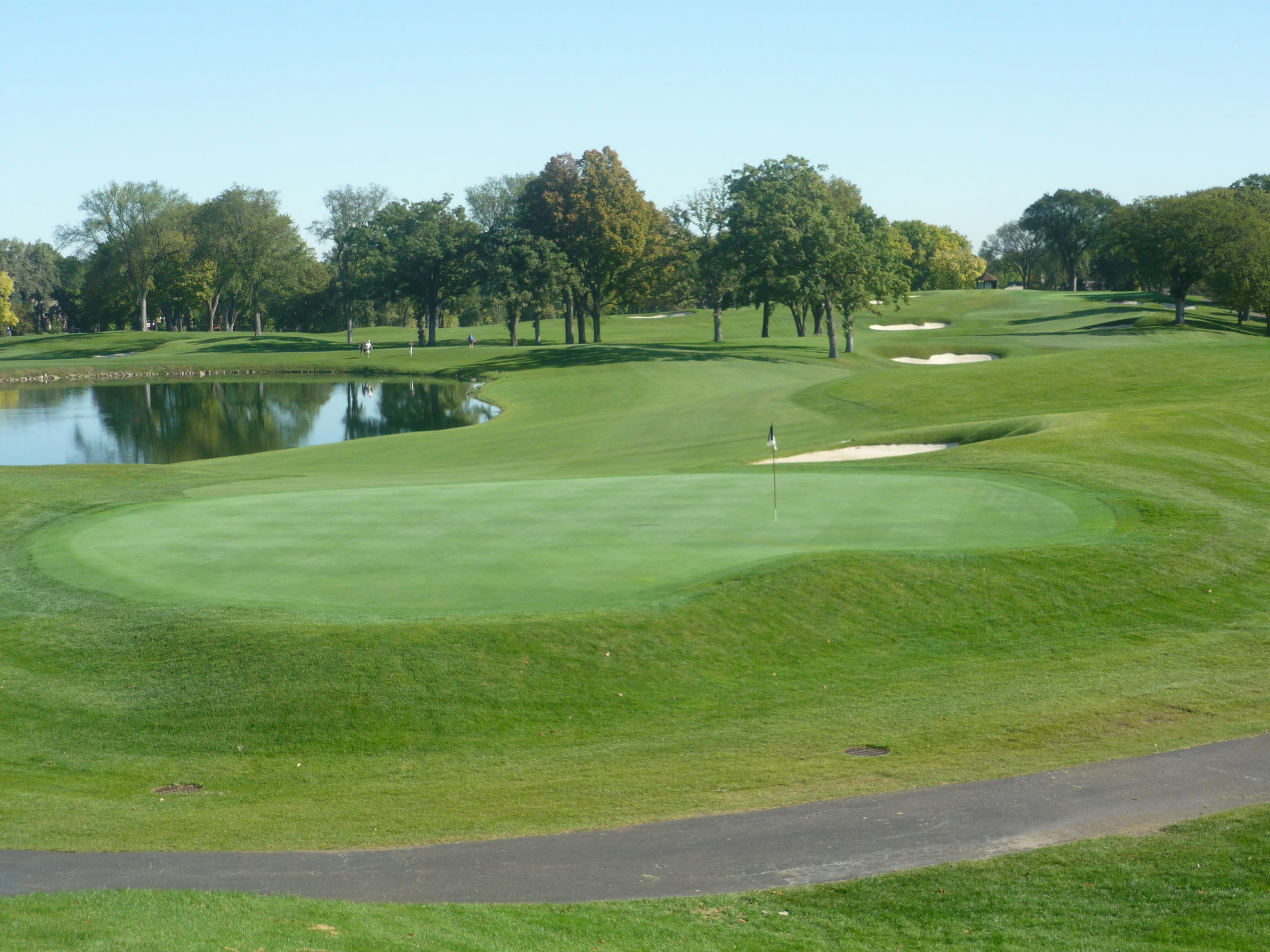
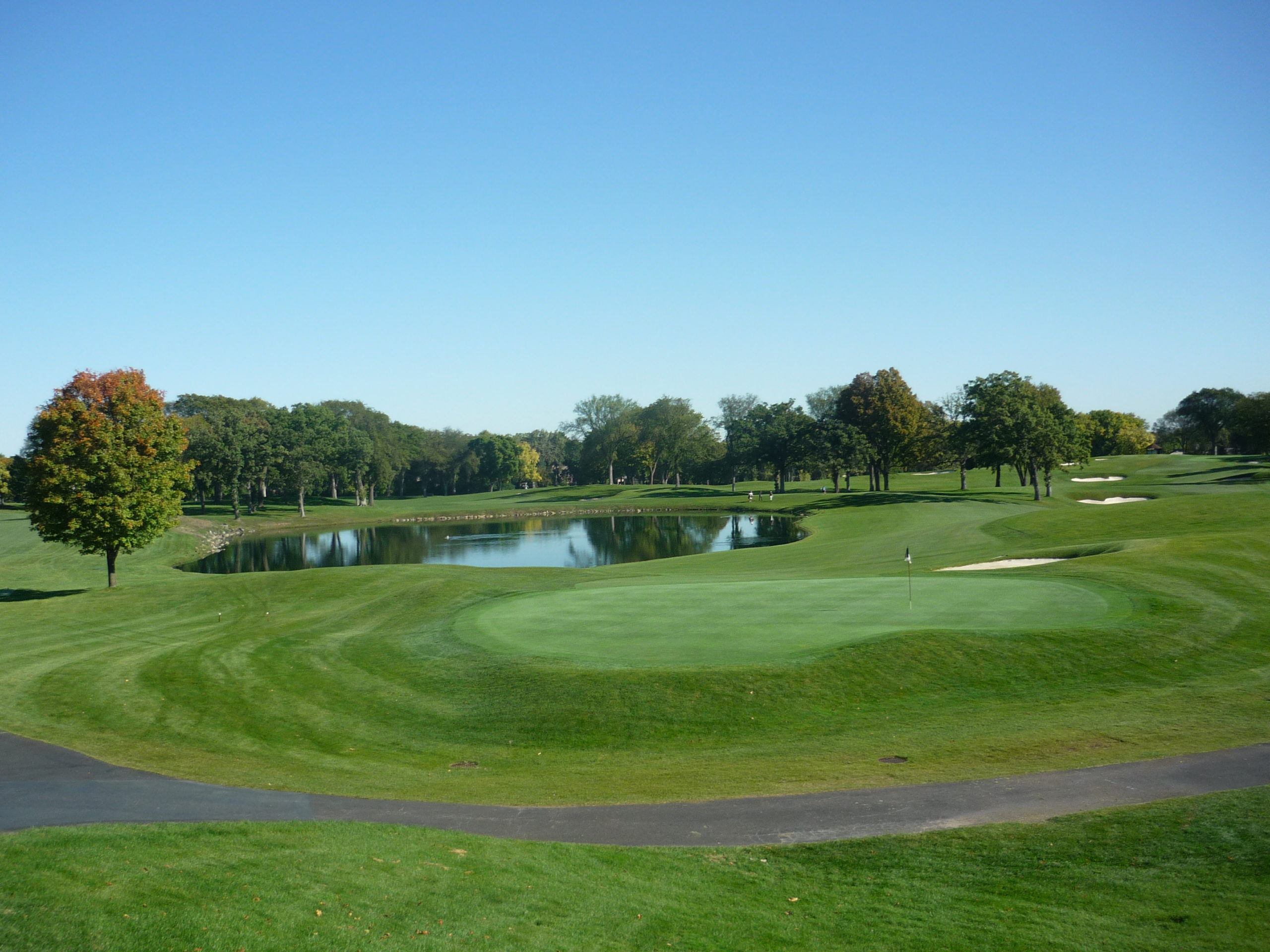
Hole 10 – 334 yards – Par 4
The look on this tee box is a unique one. The green sits up high guarded by bunkers. I don’t mind blind shots, but there is something fun about seeing the entire hole unfurl before you.
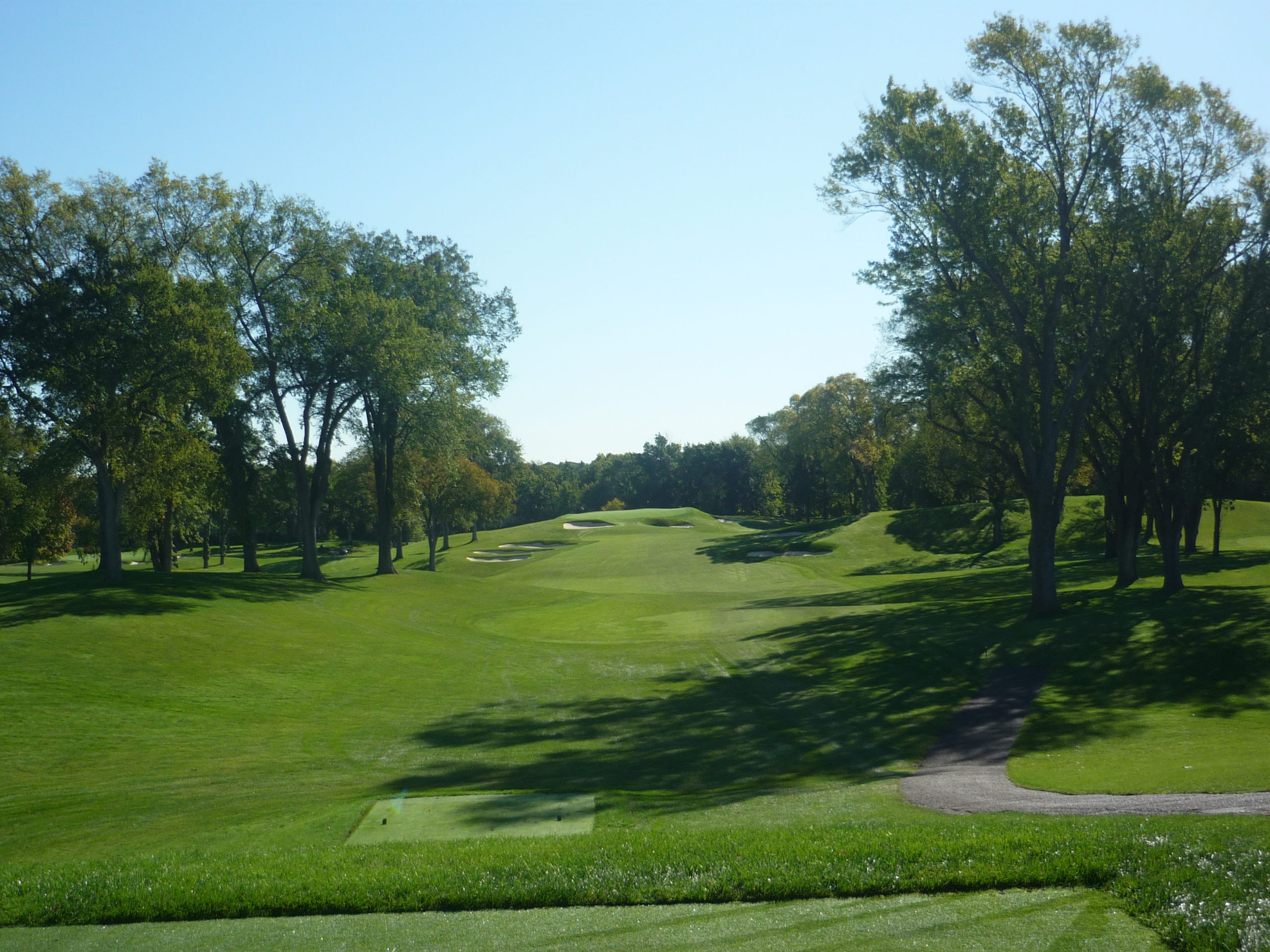
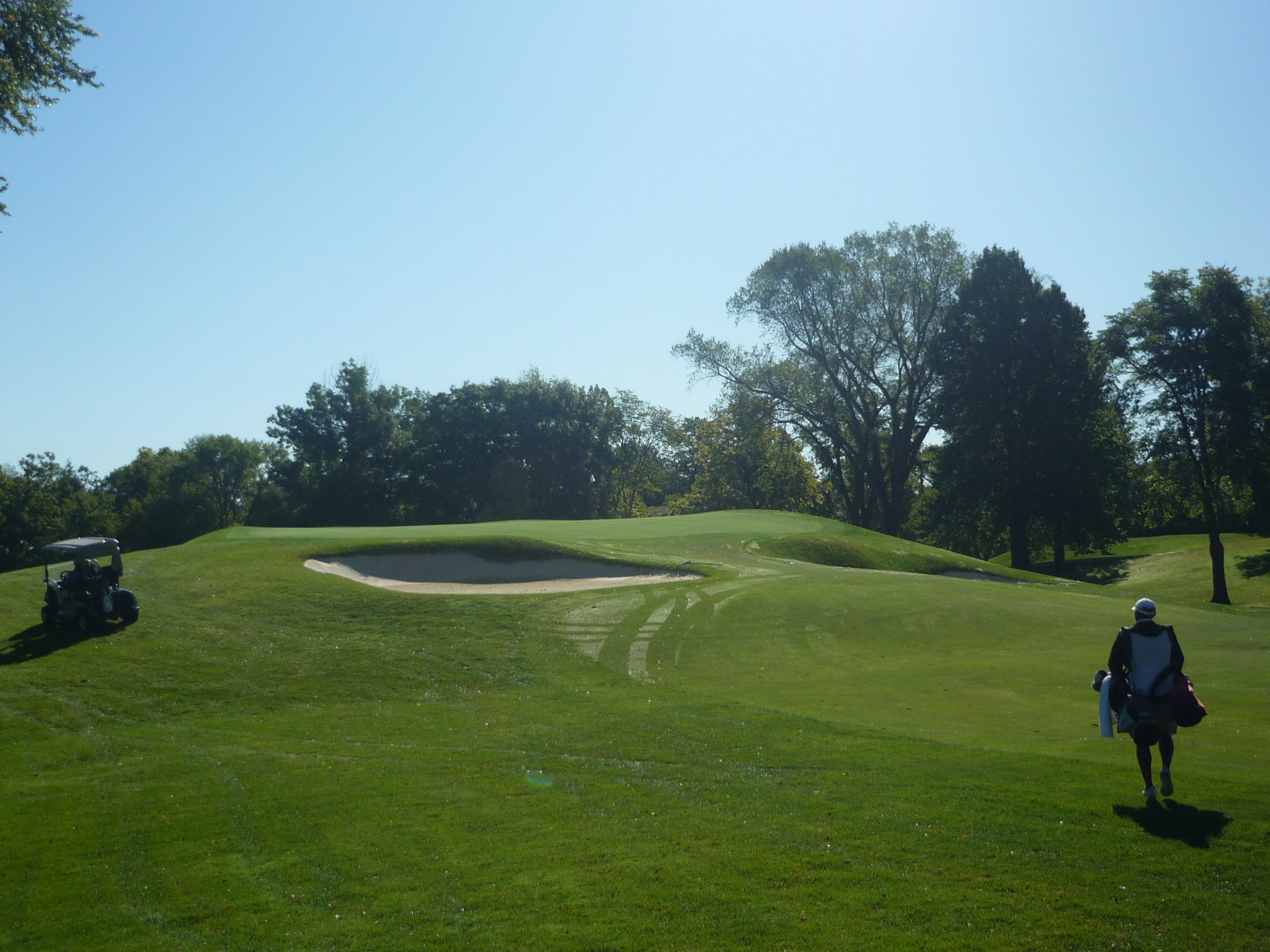
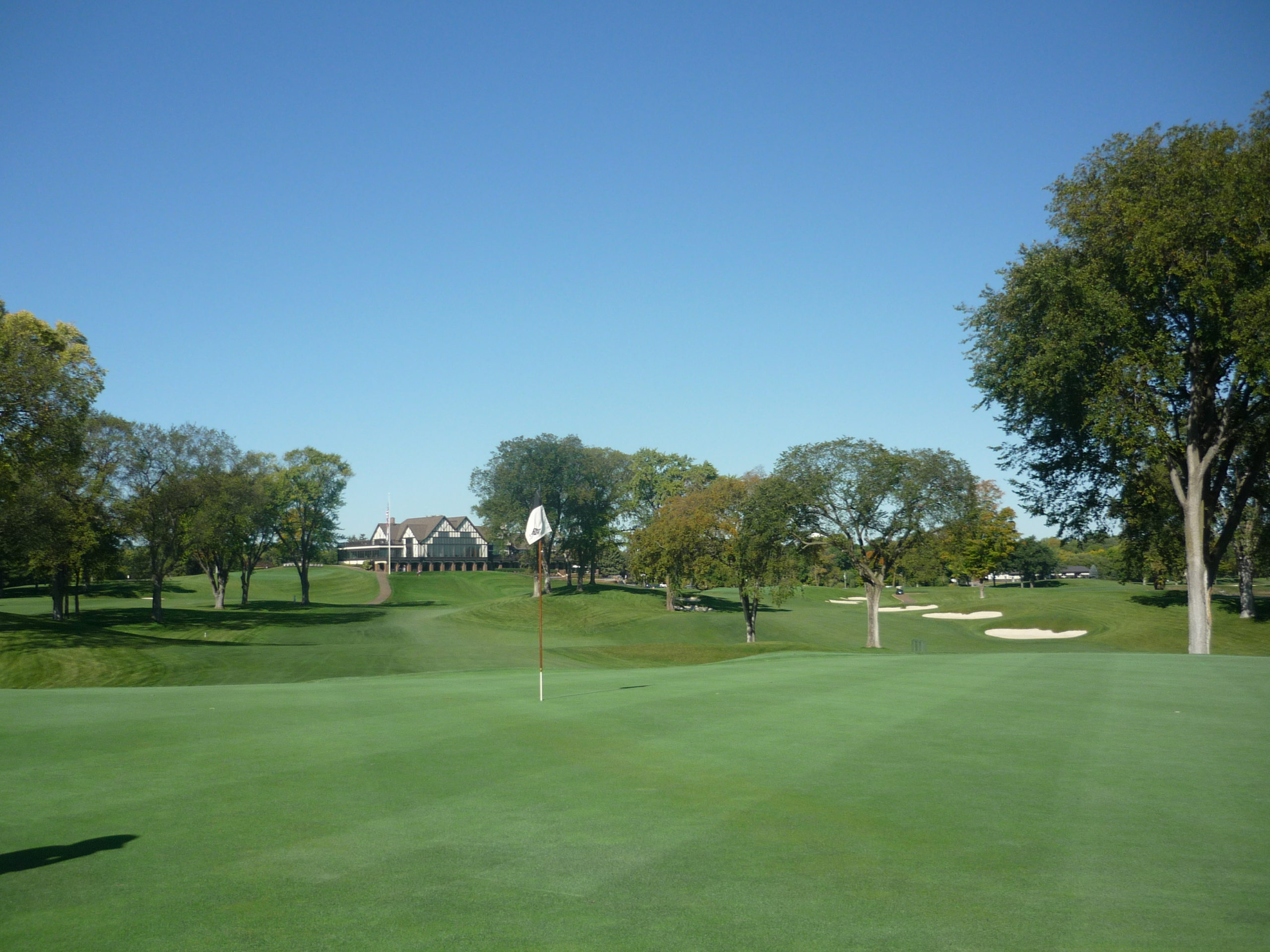
Hole 11 – 420 yards – Par 4
This version of a cape hole bends to the right and plays long. The objective is to fit your tee shot into the right side of the fairway as far up as you can.
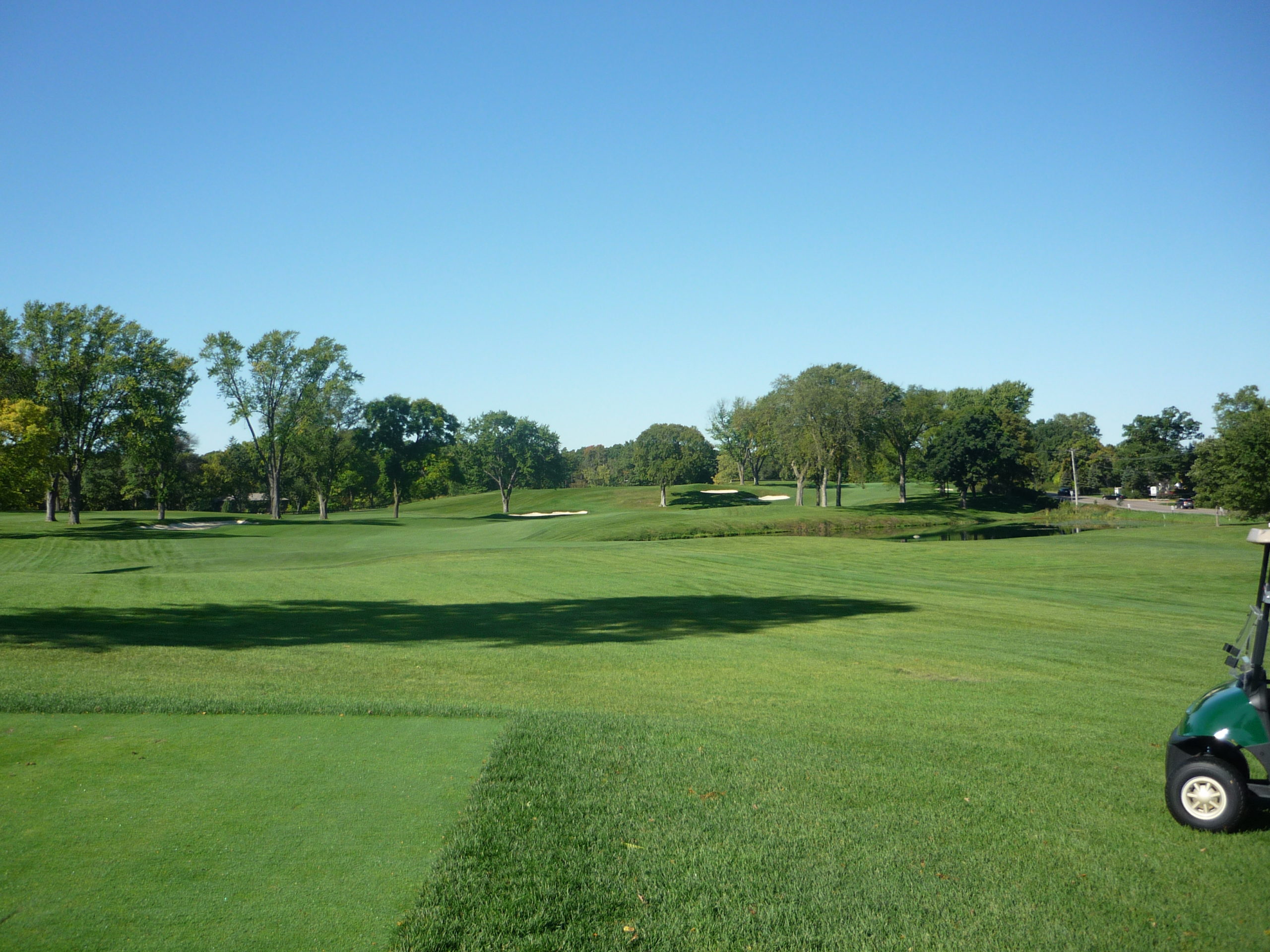
It’s playable from the left side, but this long shot below is what you’ll be navigating.
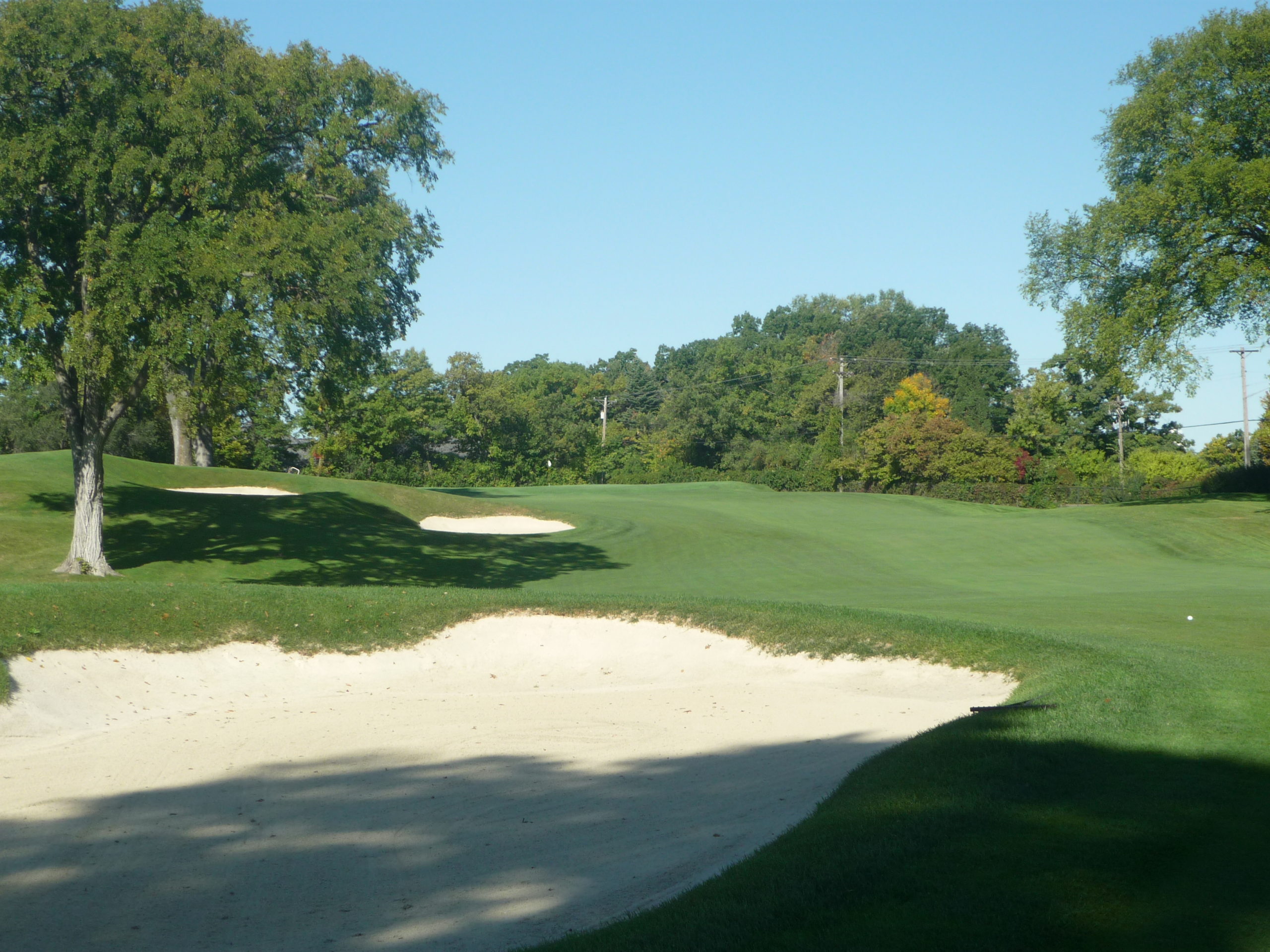
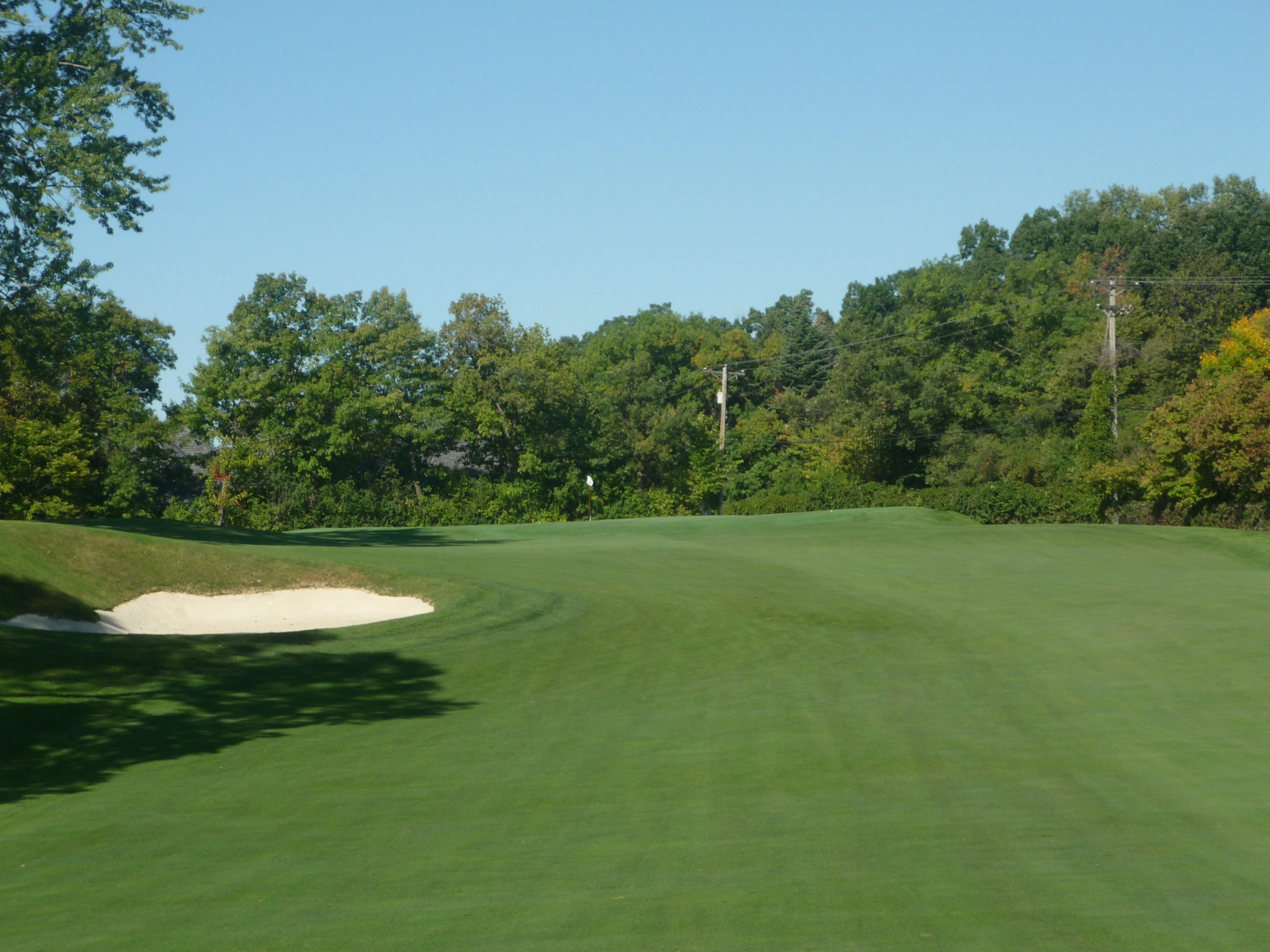
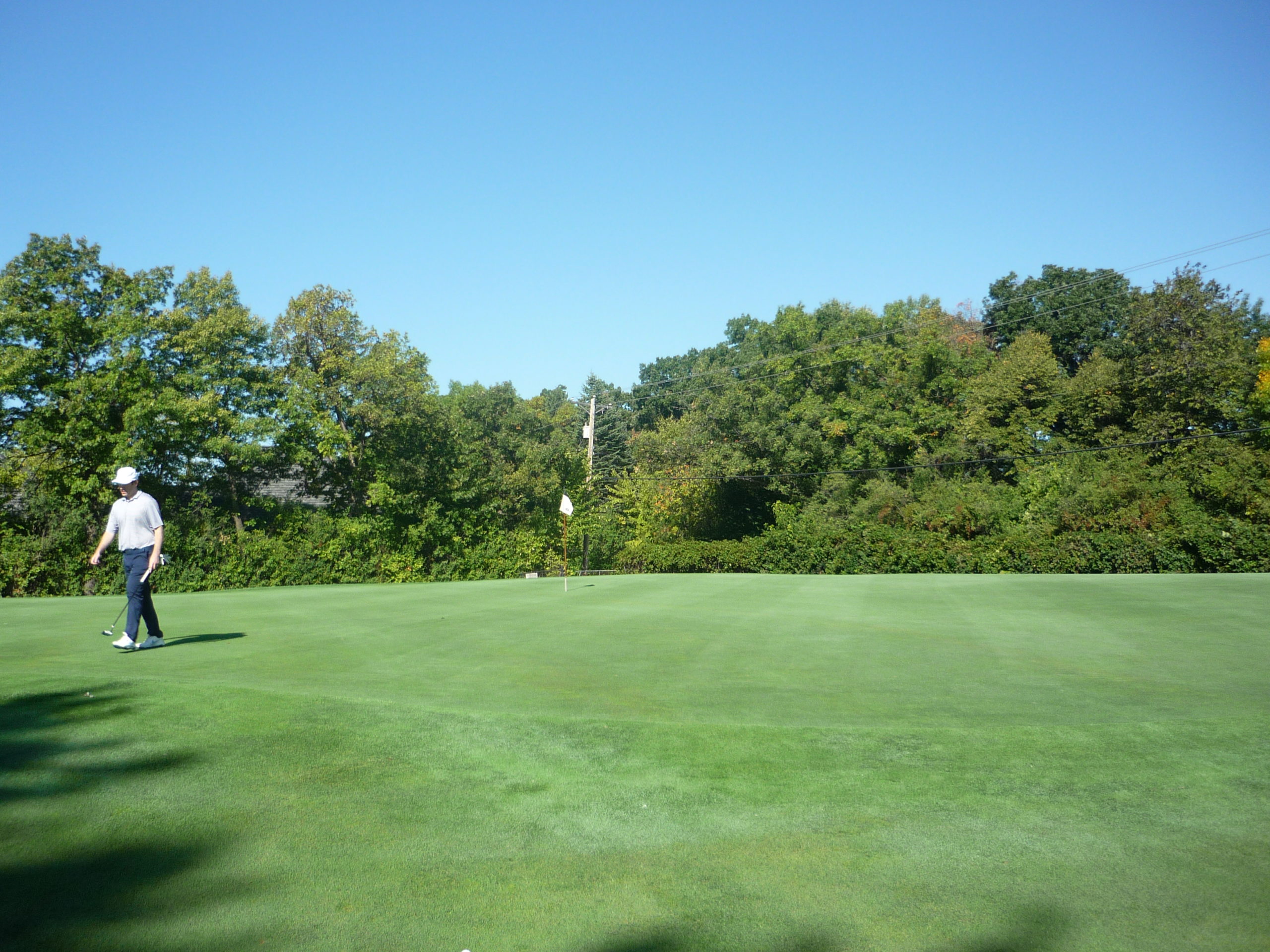
With the length, it was nice to have a tame putting surface.
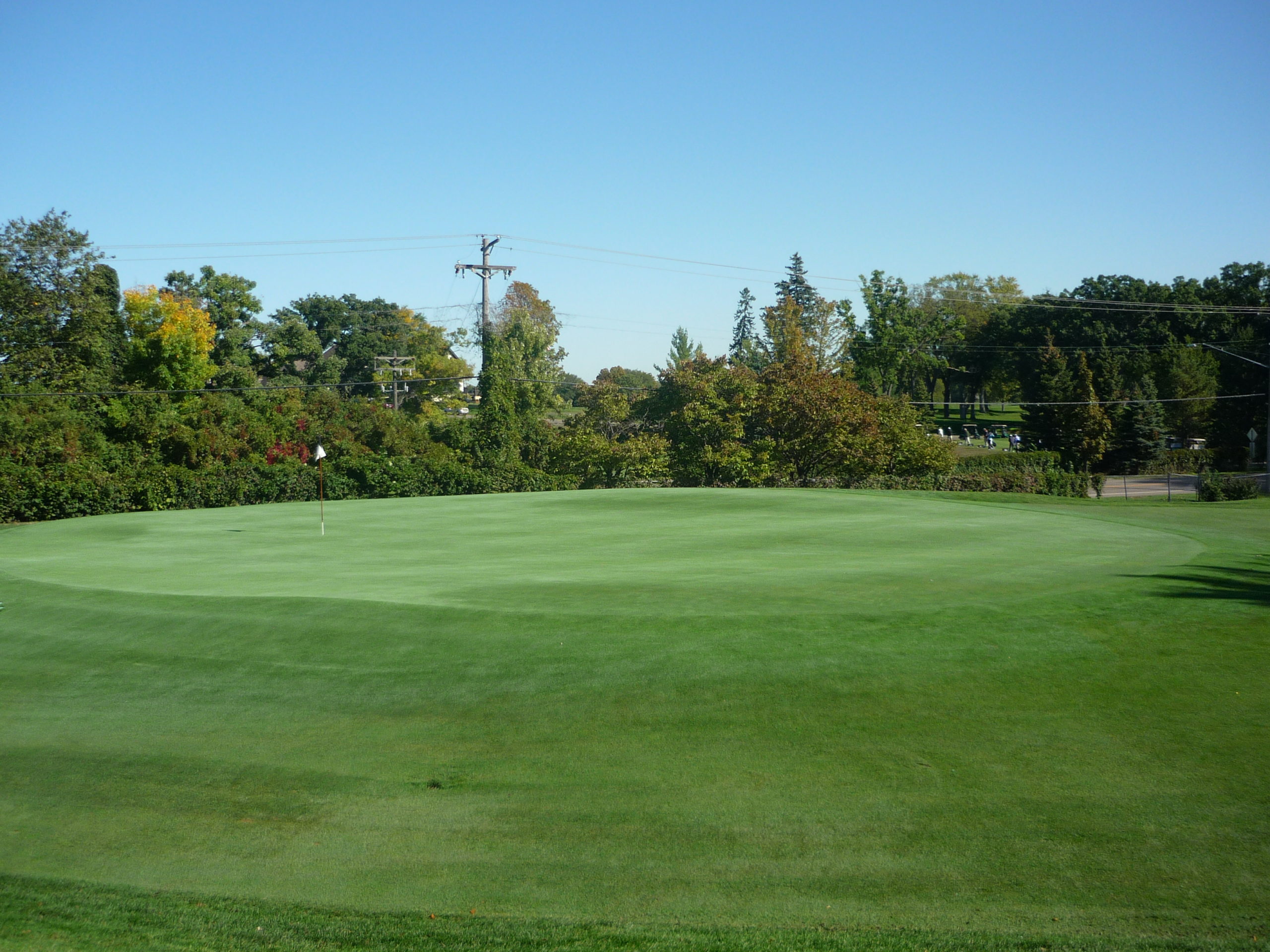
Hole 12 – 541 yards – Par 5
If you like to move it to the left, this hole is tailormade for you. Keep it between the trees from the tee.
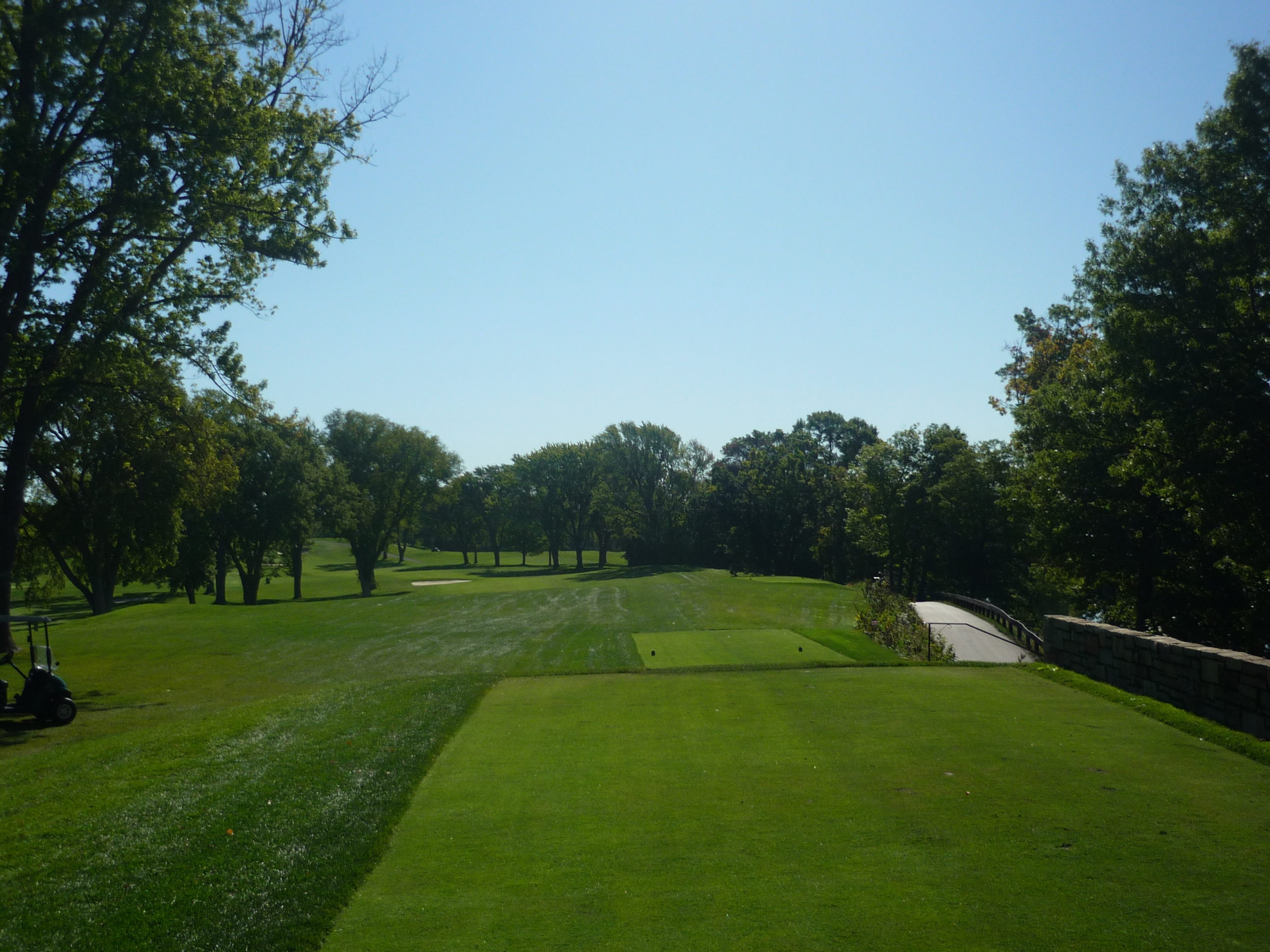
If you manage to go for it, a high, long, and soft shot is needed to get to the green and hold it. The bunkers fronting the green are quite deep and sit well below the green.
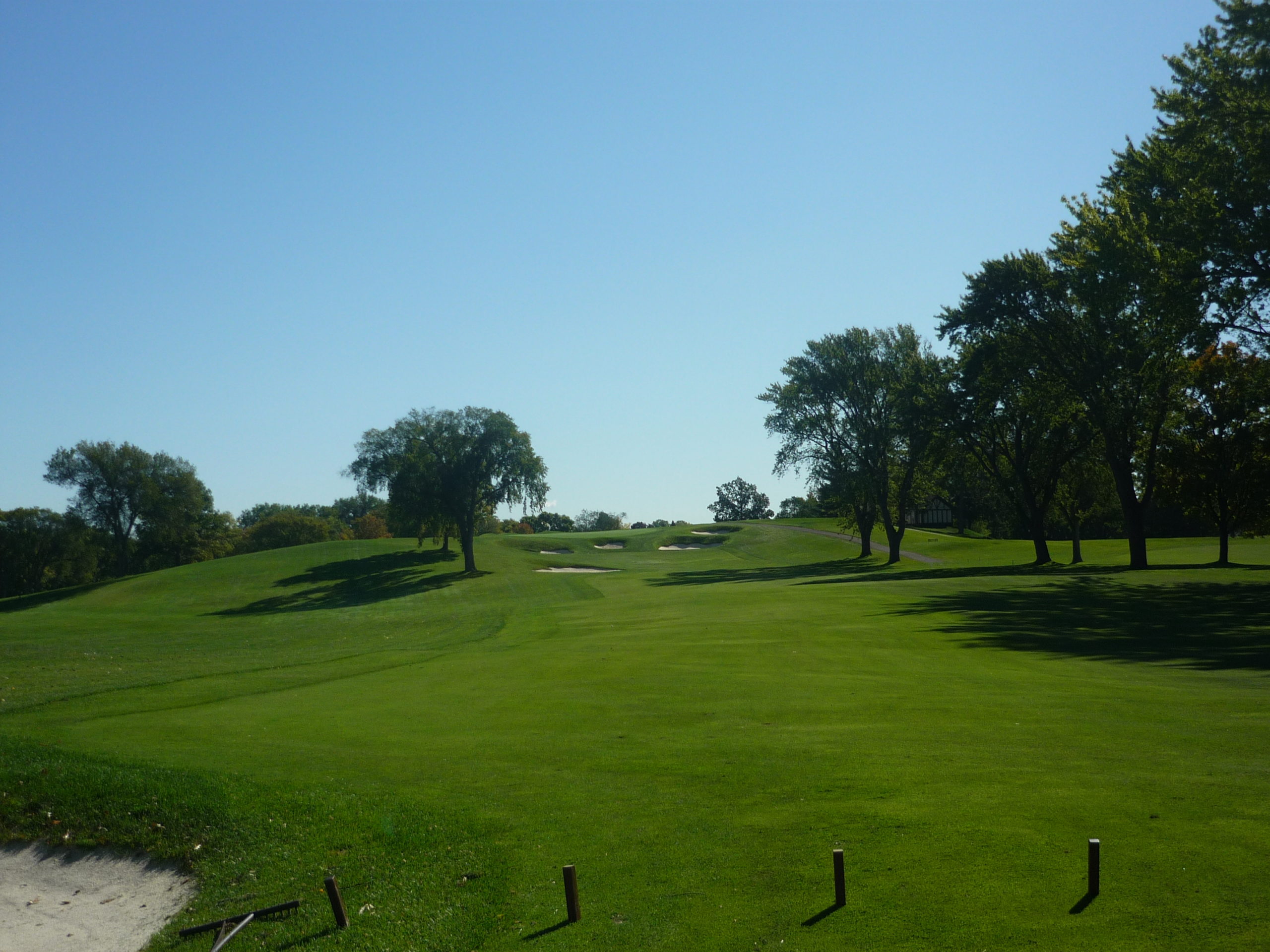
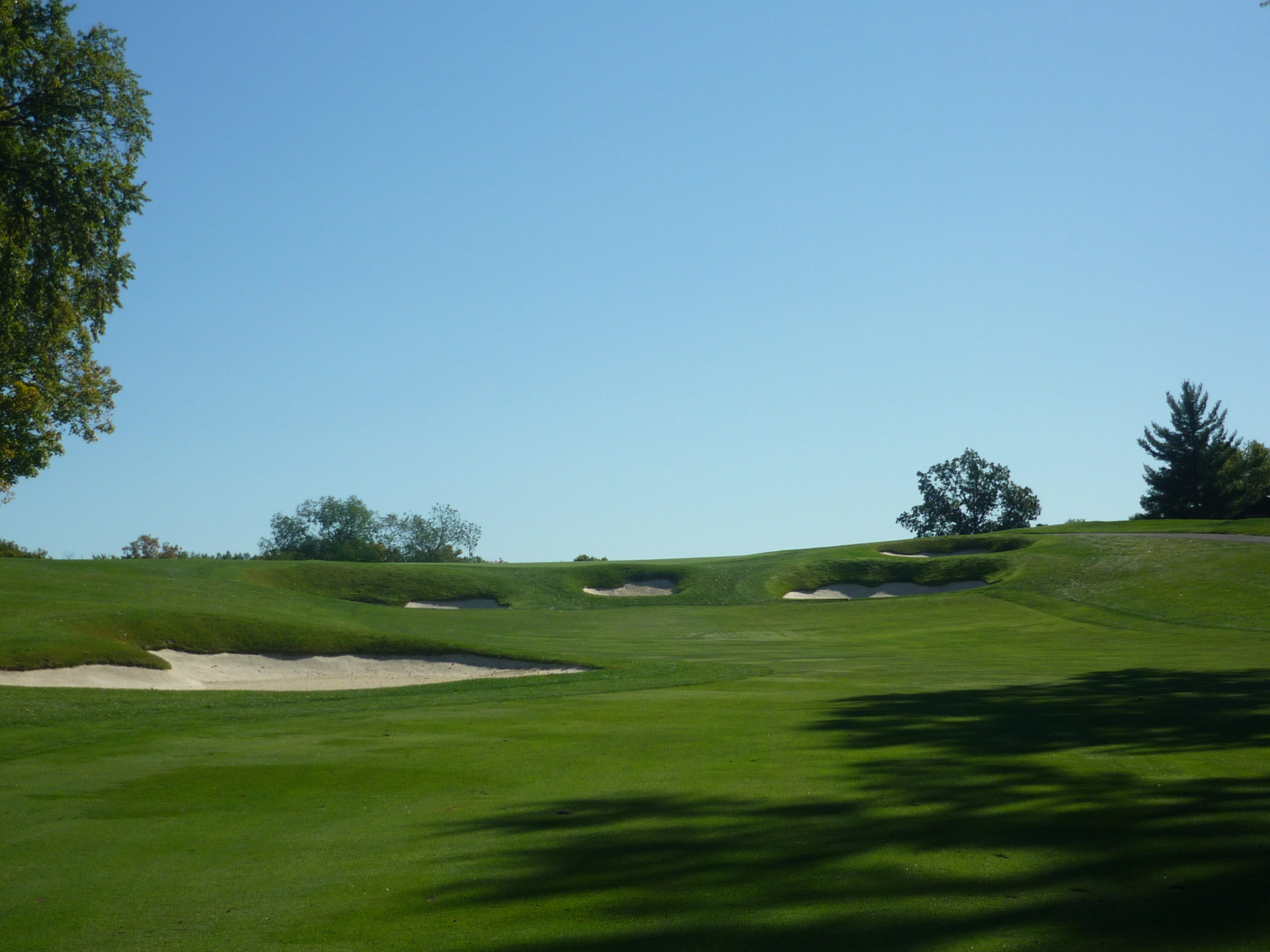
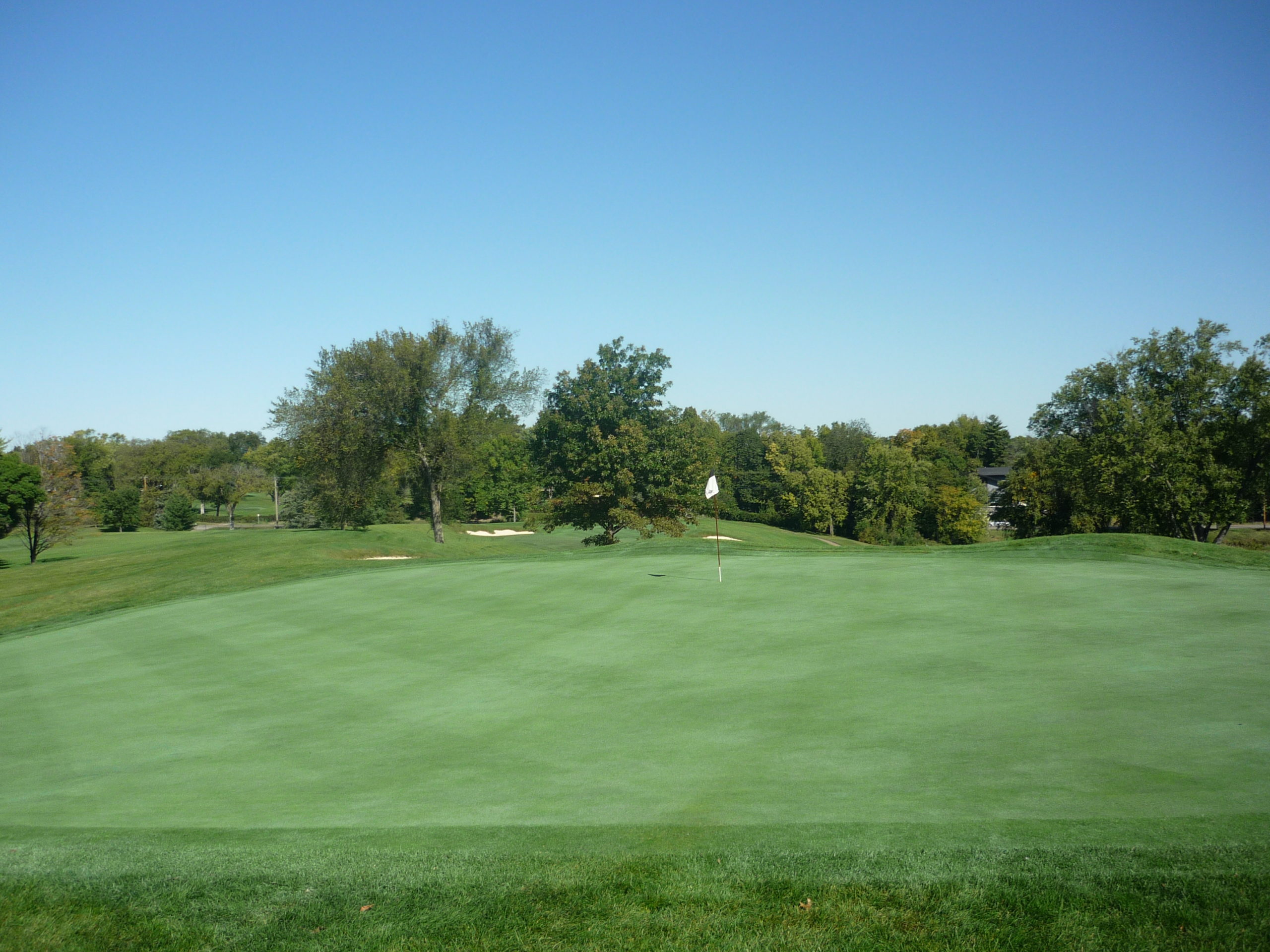
Hole 13 – 179 yards – Par 3
This is a nice setting on the river for this downhill hole. Shots landing a little short can bounce onto the green allowing for some different approaches.
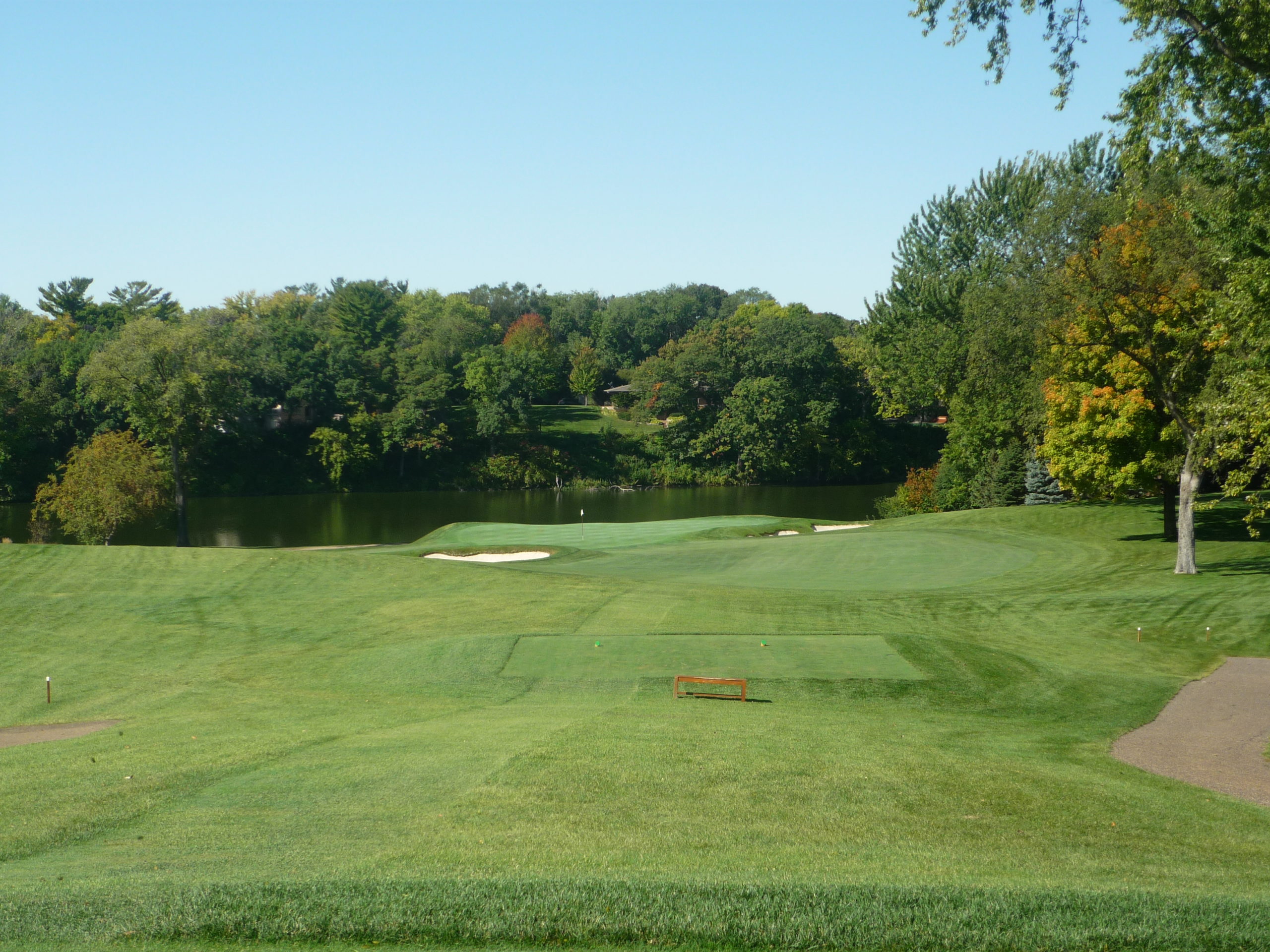
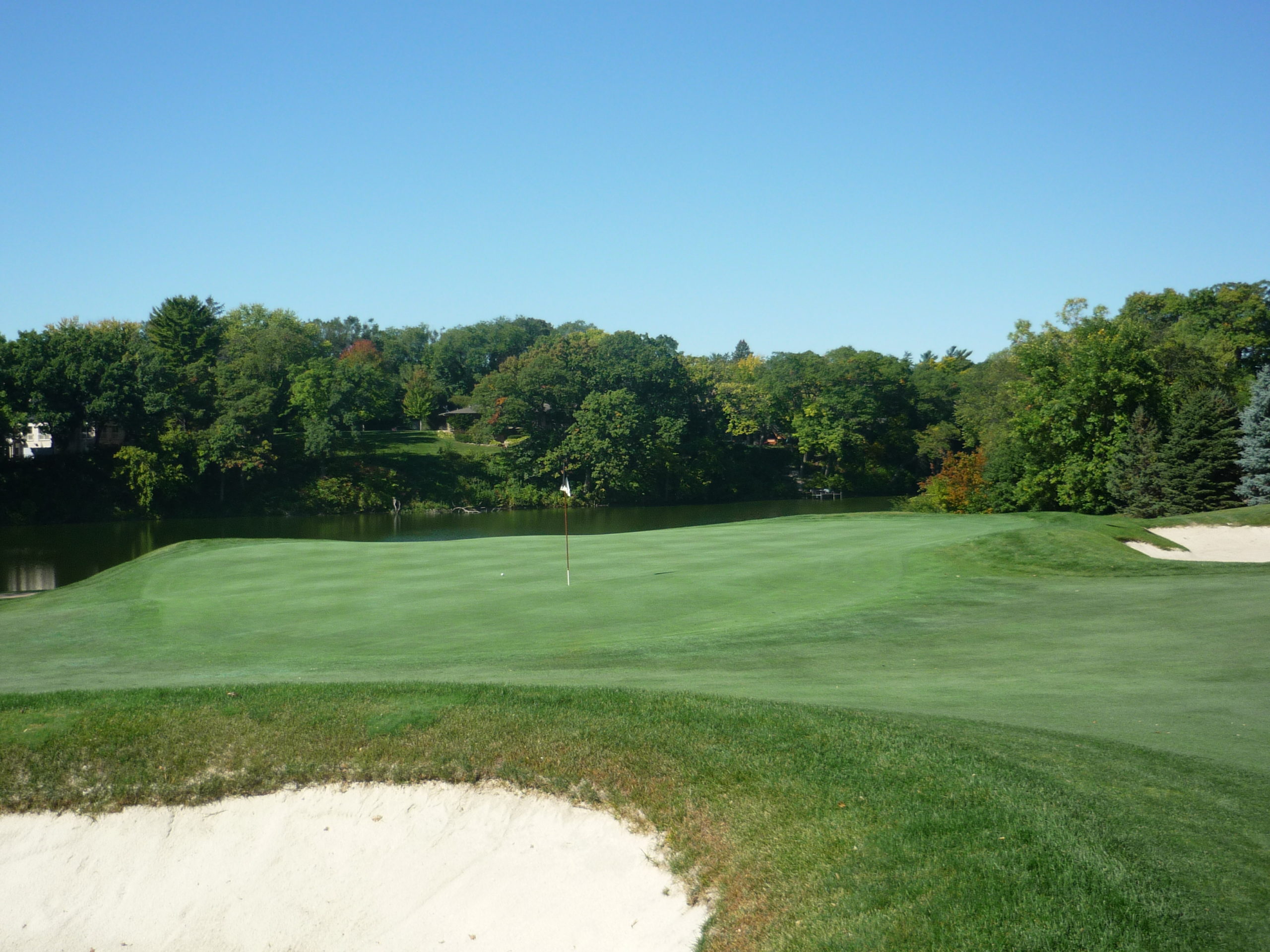
Hole 14 – 423 yards – Par 4
The tee shot is blind here but the hole doesn’t try to trick you. It’s straightway and the landing area is a bit downhill to boost your driving distance.
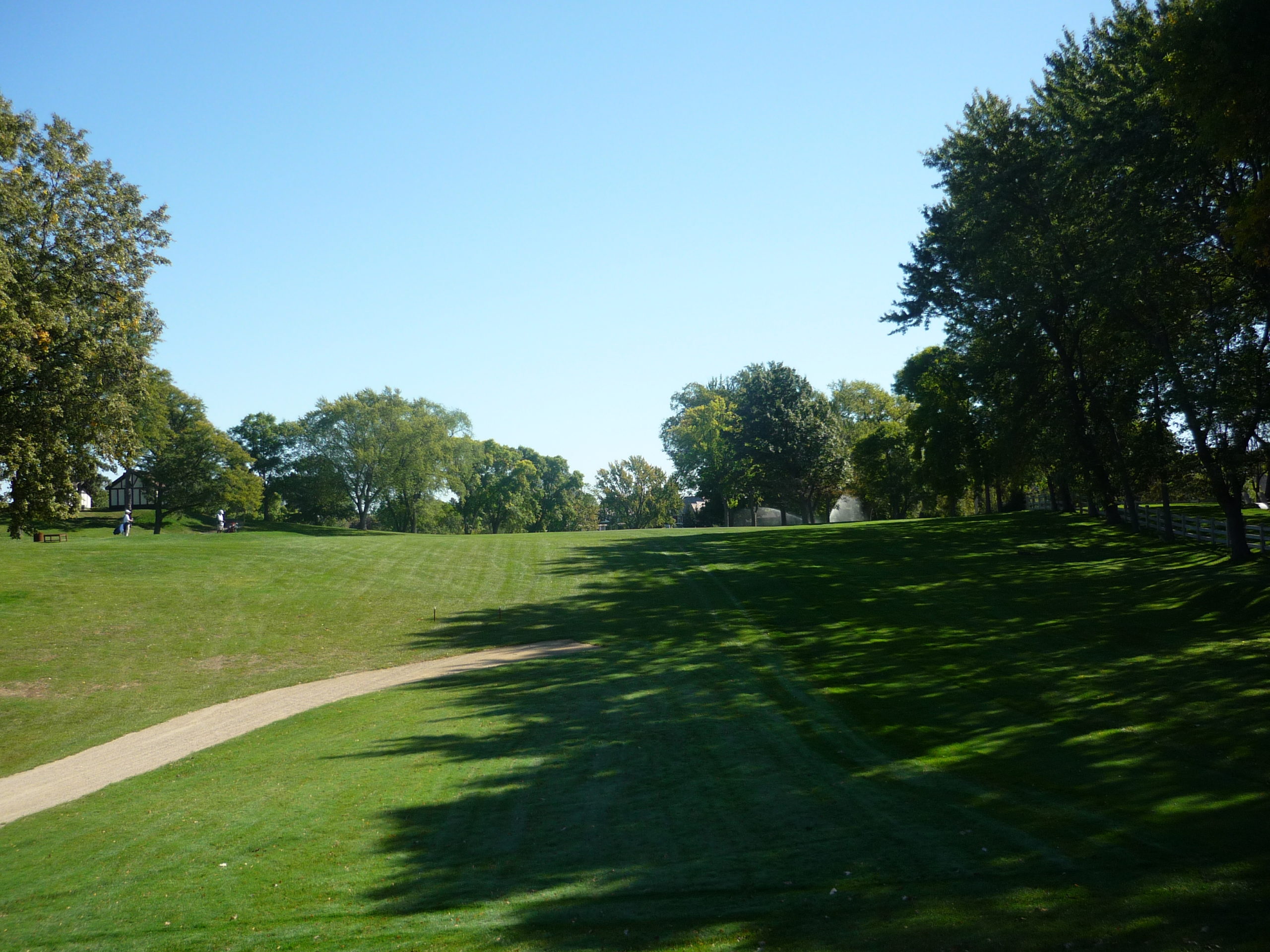
The green does have a significant false front, so make sure you get it there.
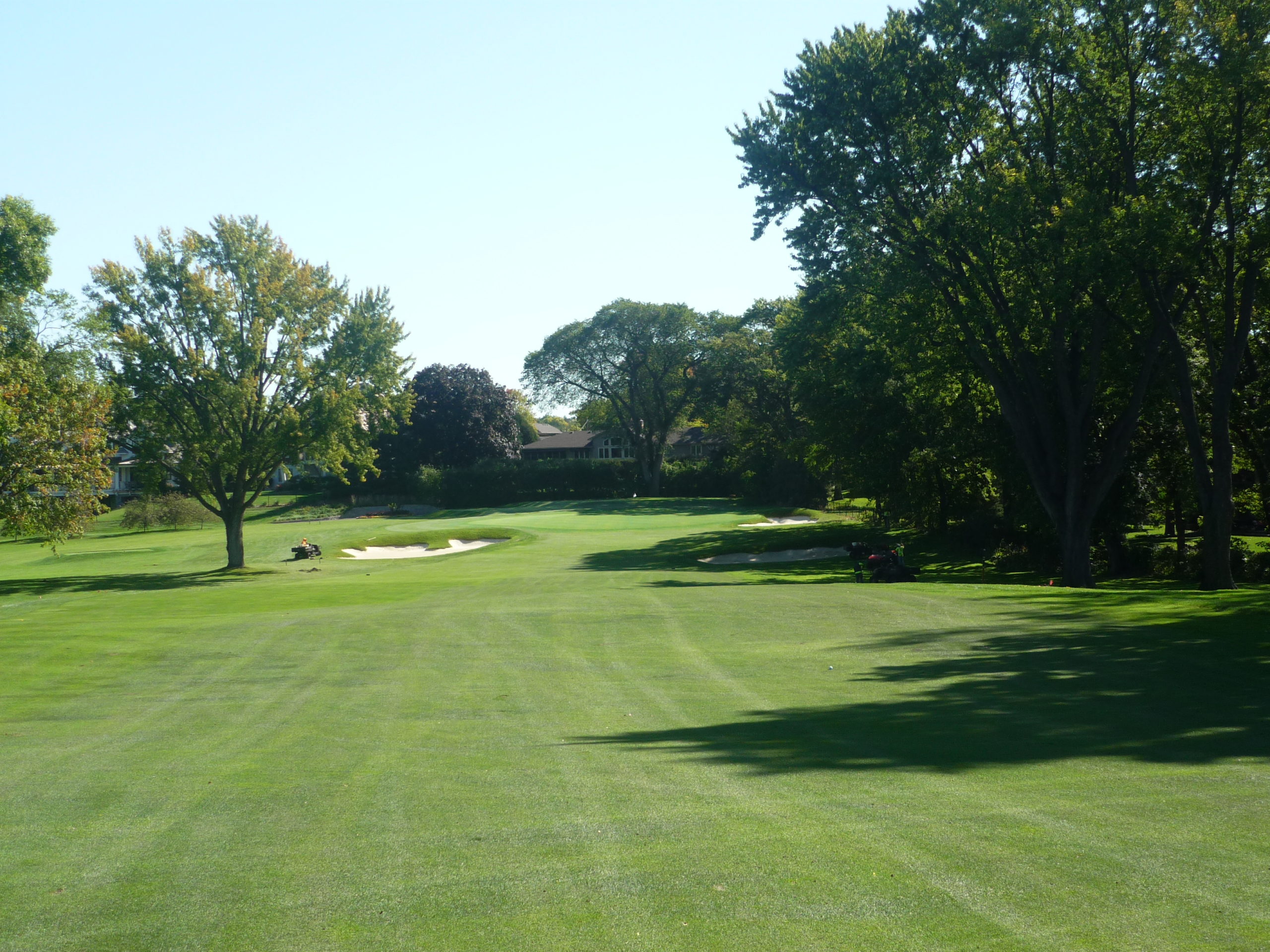
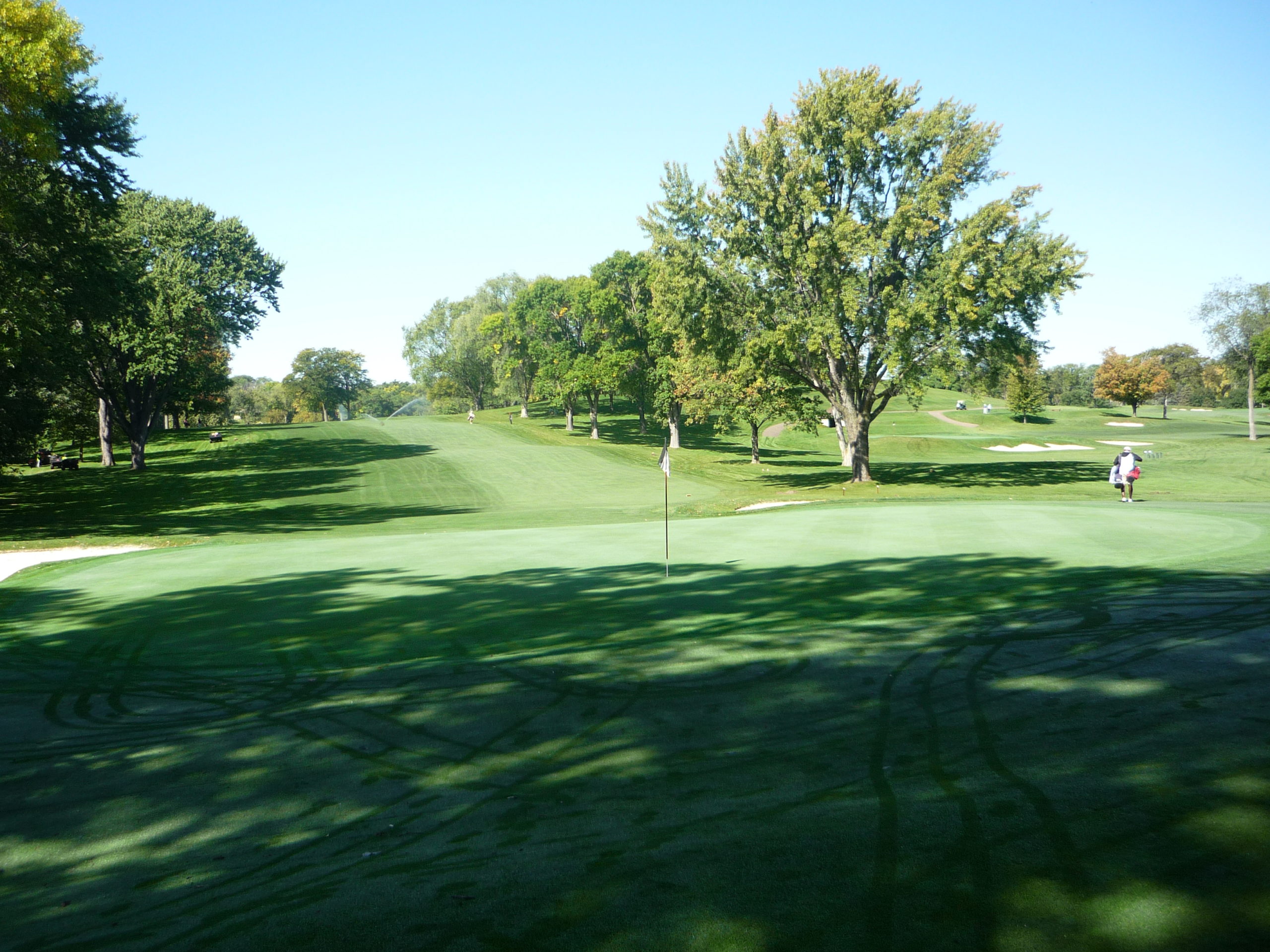
Hole 15 – 406 yards – Par 4
From the elevated tee you can see this hole bend to the right as it progresses to the green. It’s tempting to hit the driver really hard here.
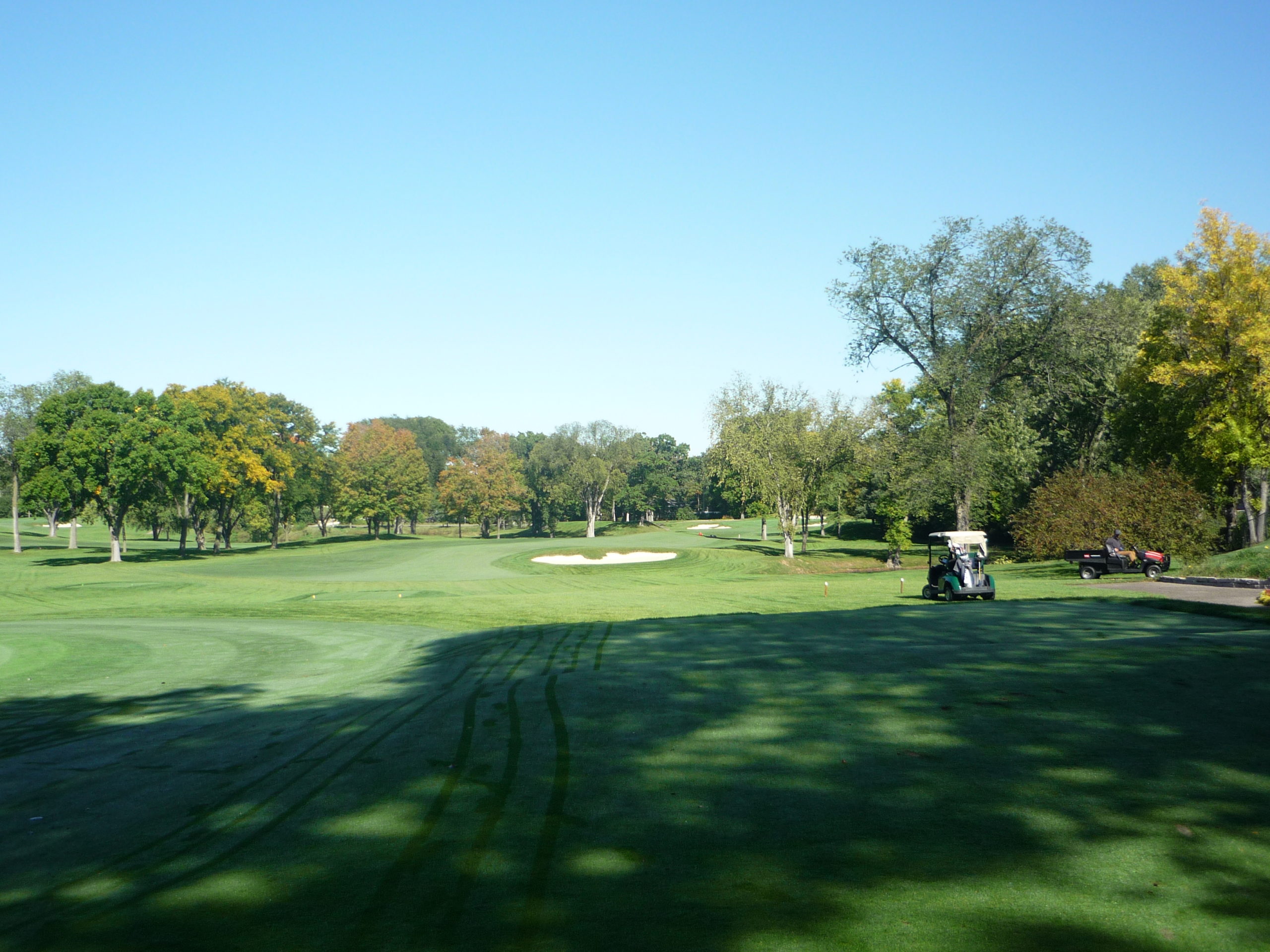
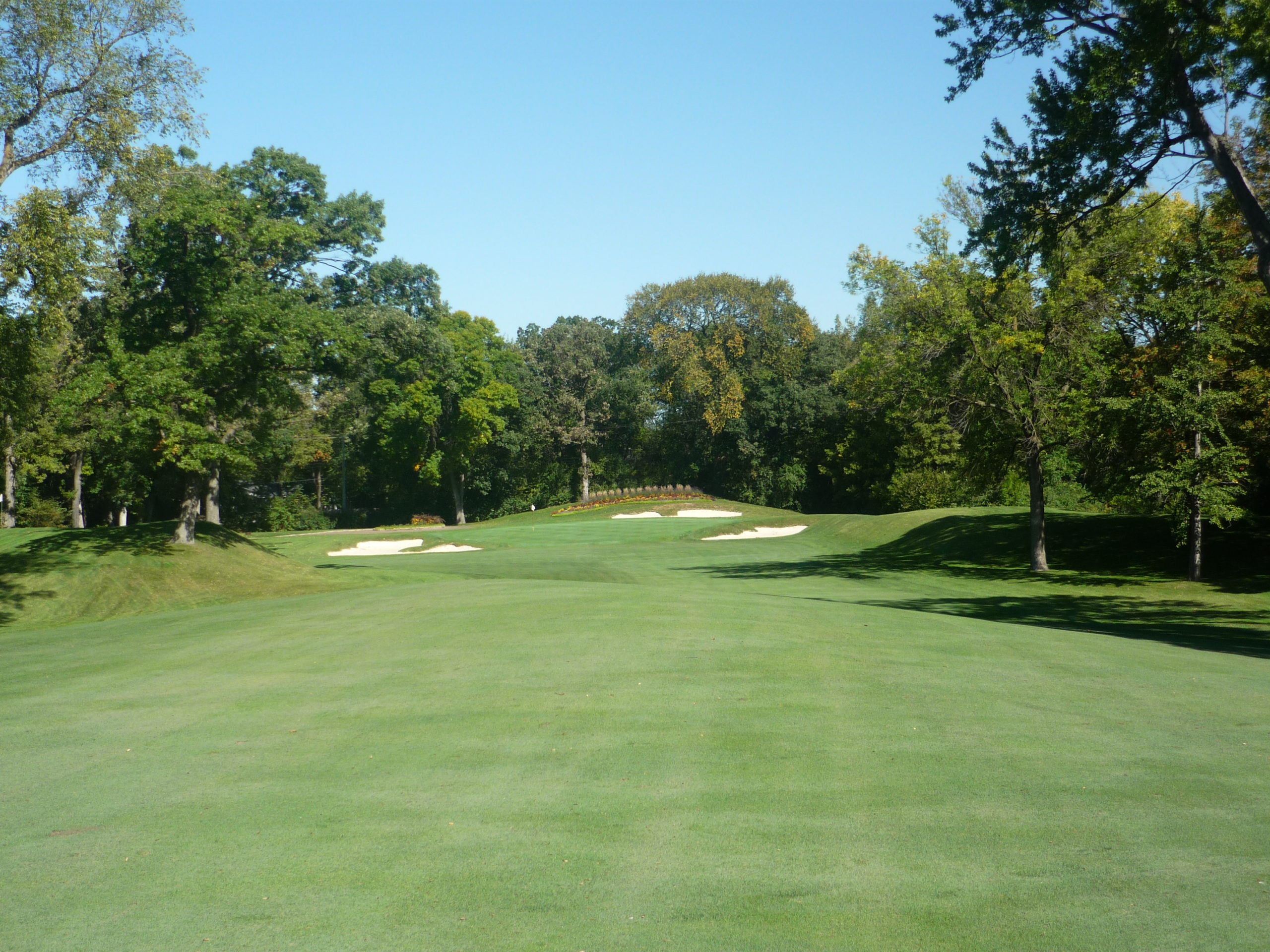
Beware of downhill putts on this sloping green.
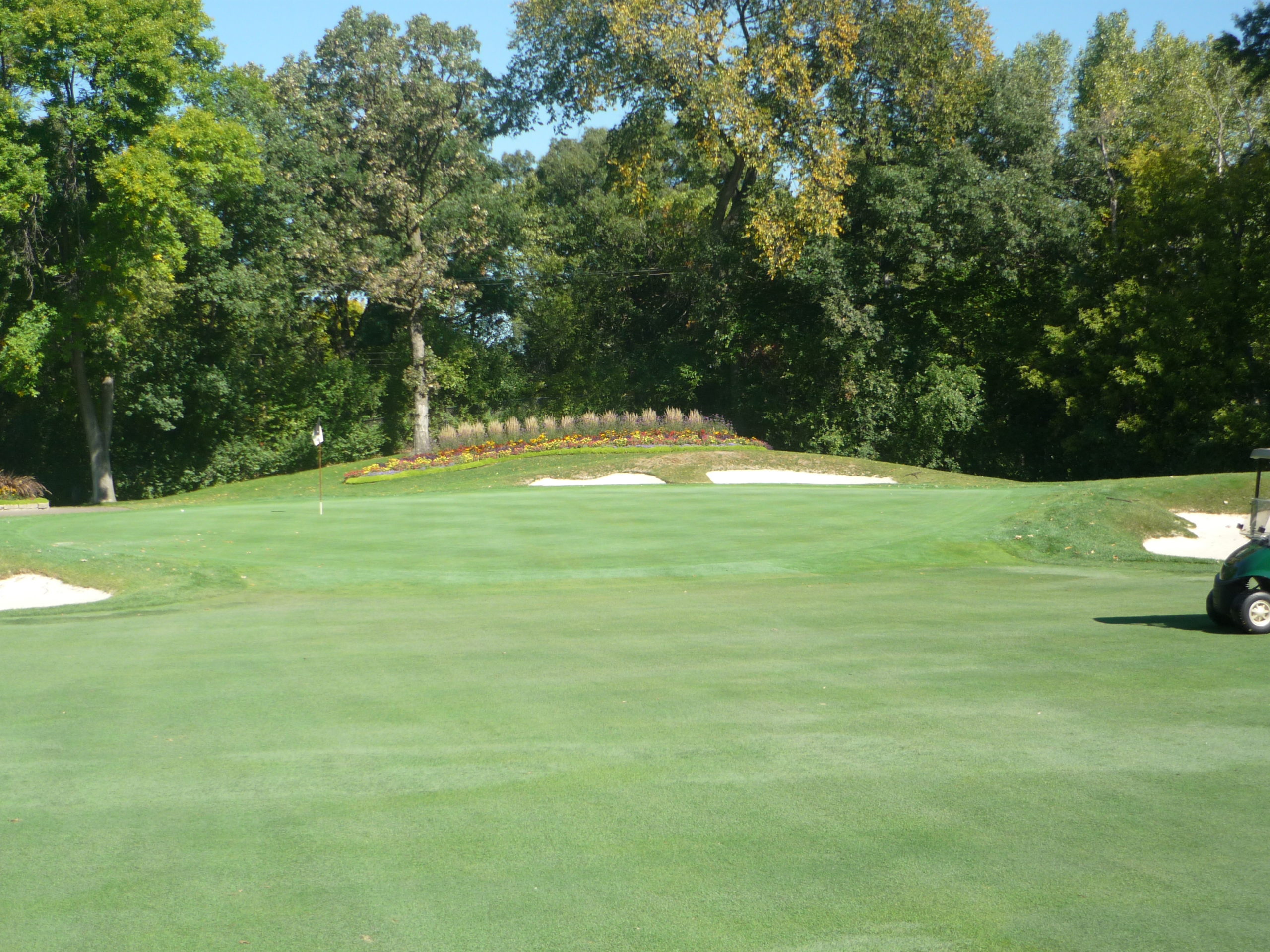
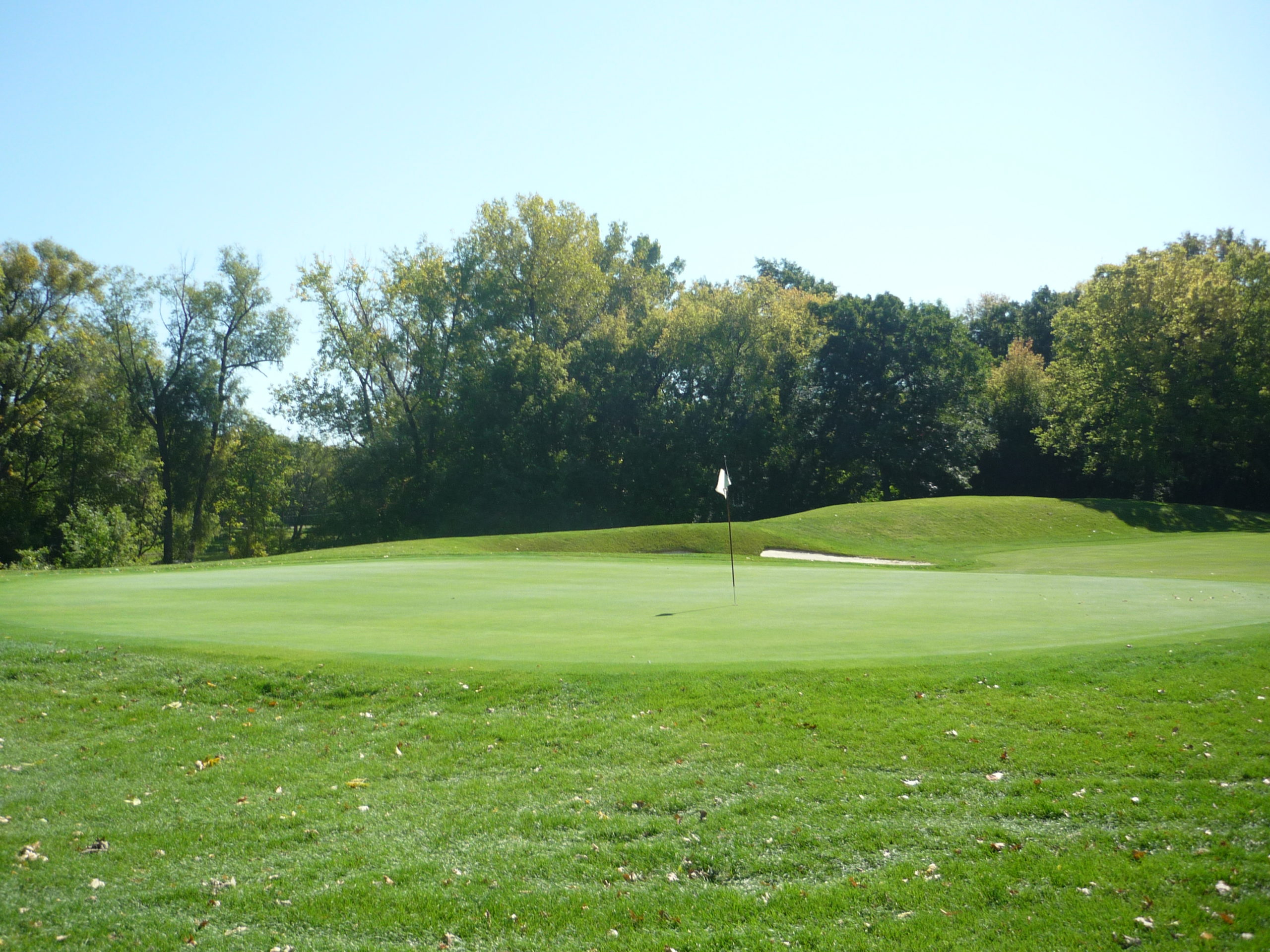
Hole 16 – 311 yards – Par 4
I don’t hit it very long so going for this hole is out of the question. Playing to the middle of the fairway lets you attack this green with a short club.
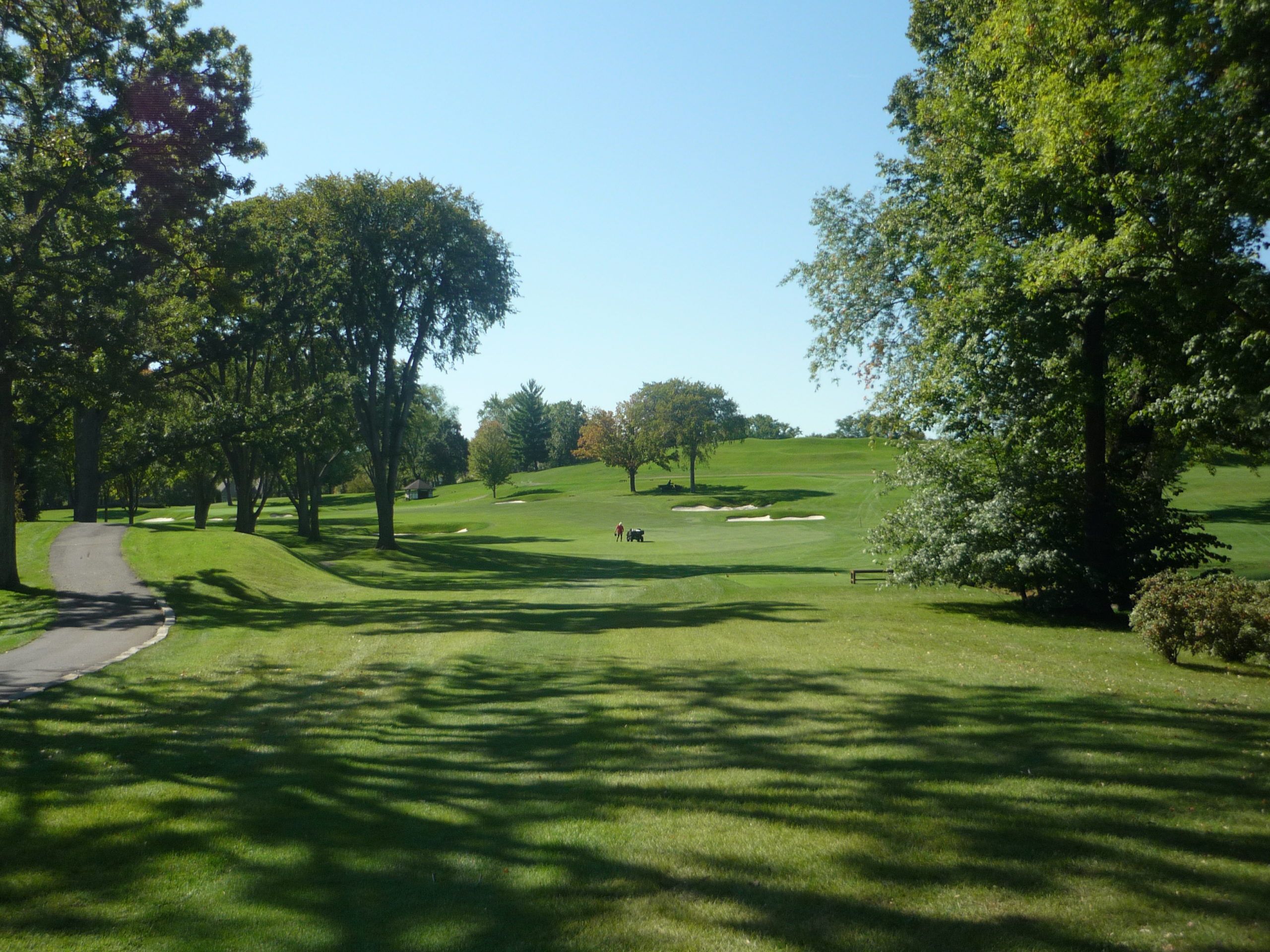
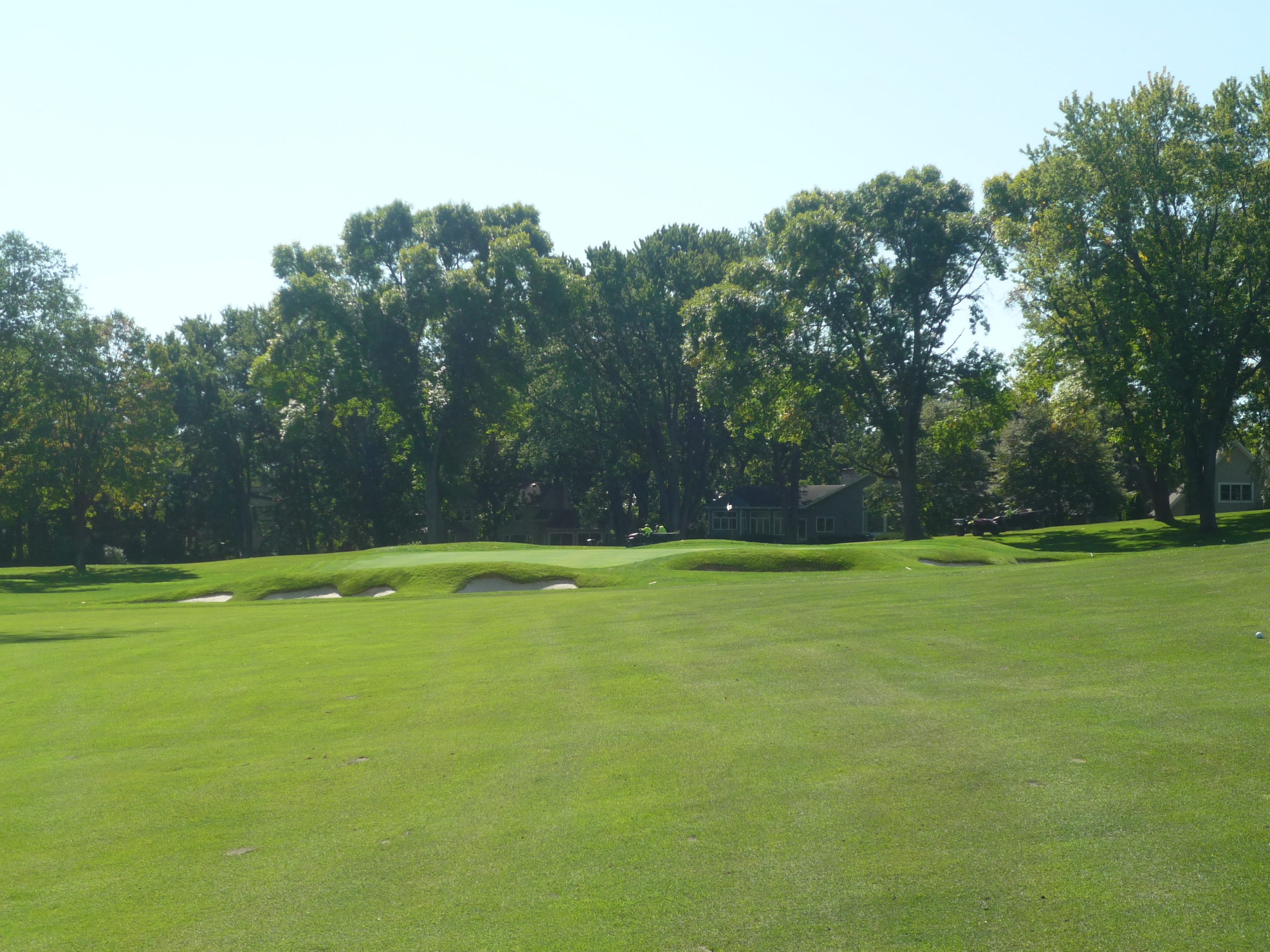
We got the tough back pin. That means you have to control your spin coming into the green.
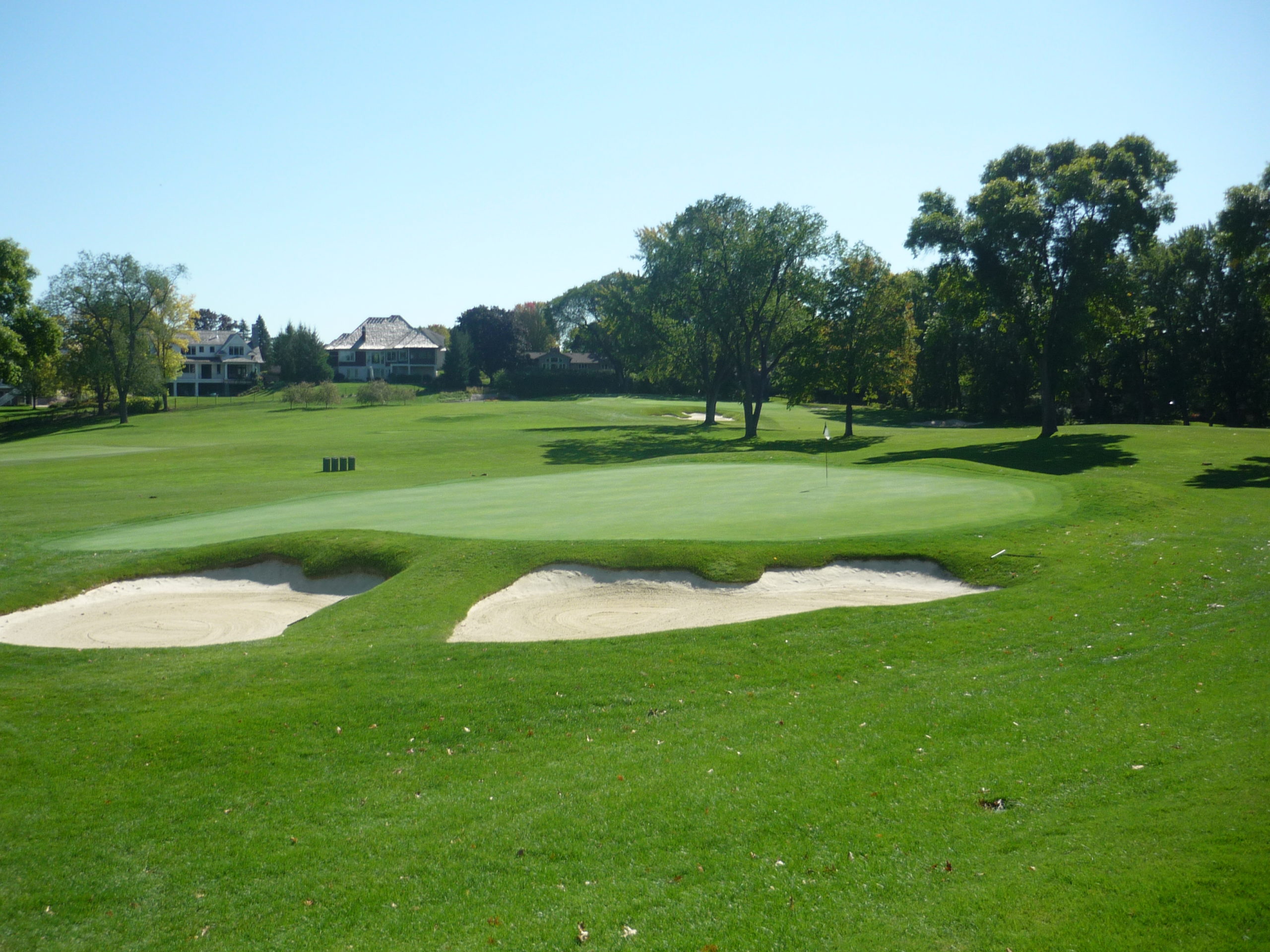
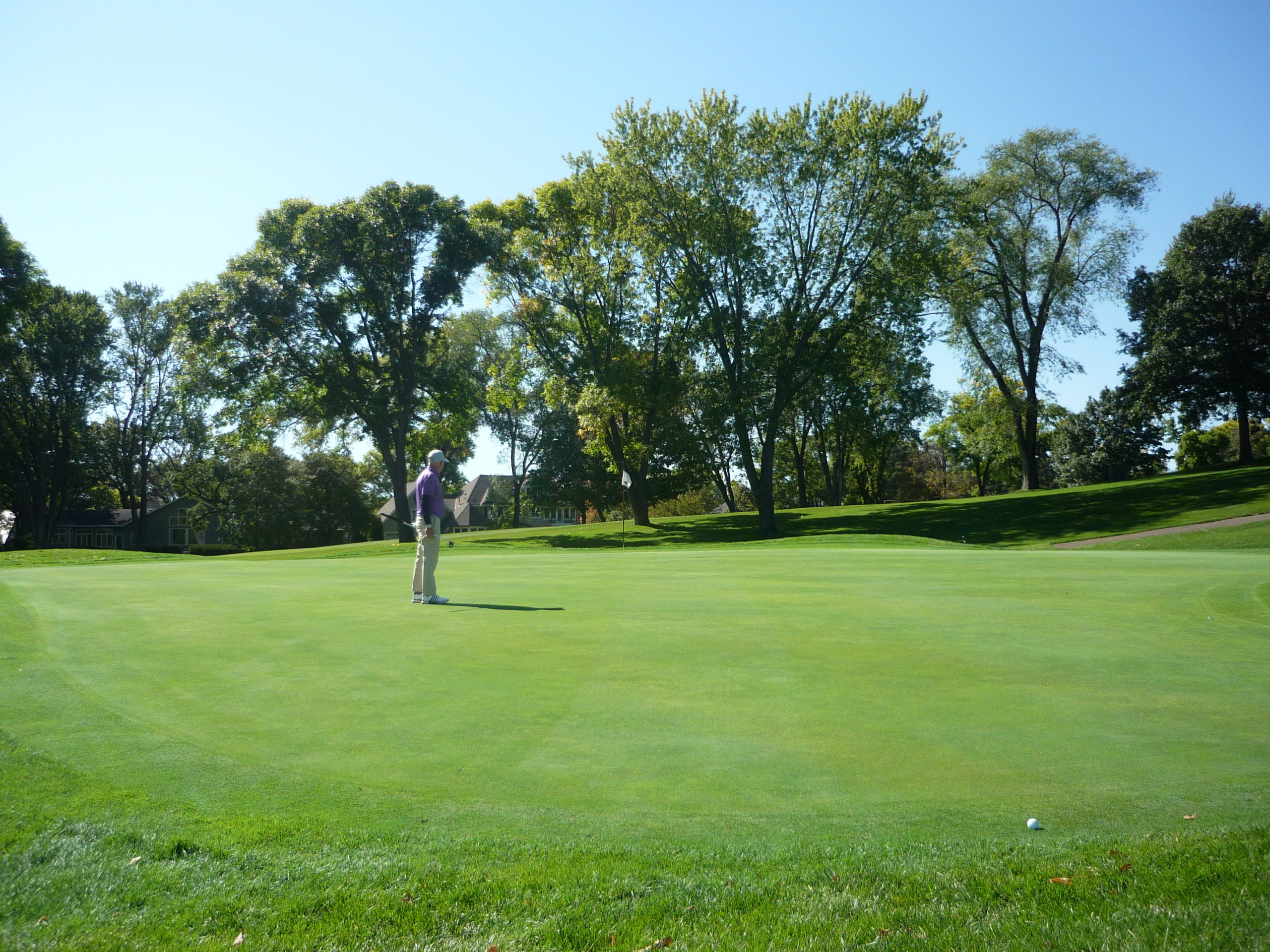
Hole 17 – 205 yards – Par 3
Longer players can fly their shot all the way, but a cool part of this hole is that the fairway bounces shots toward the green to help out players who don’t carry it as far.
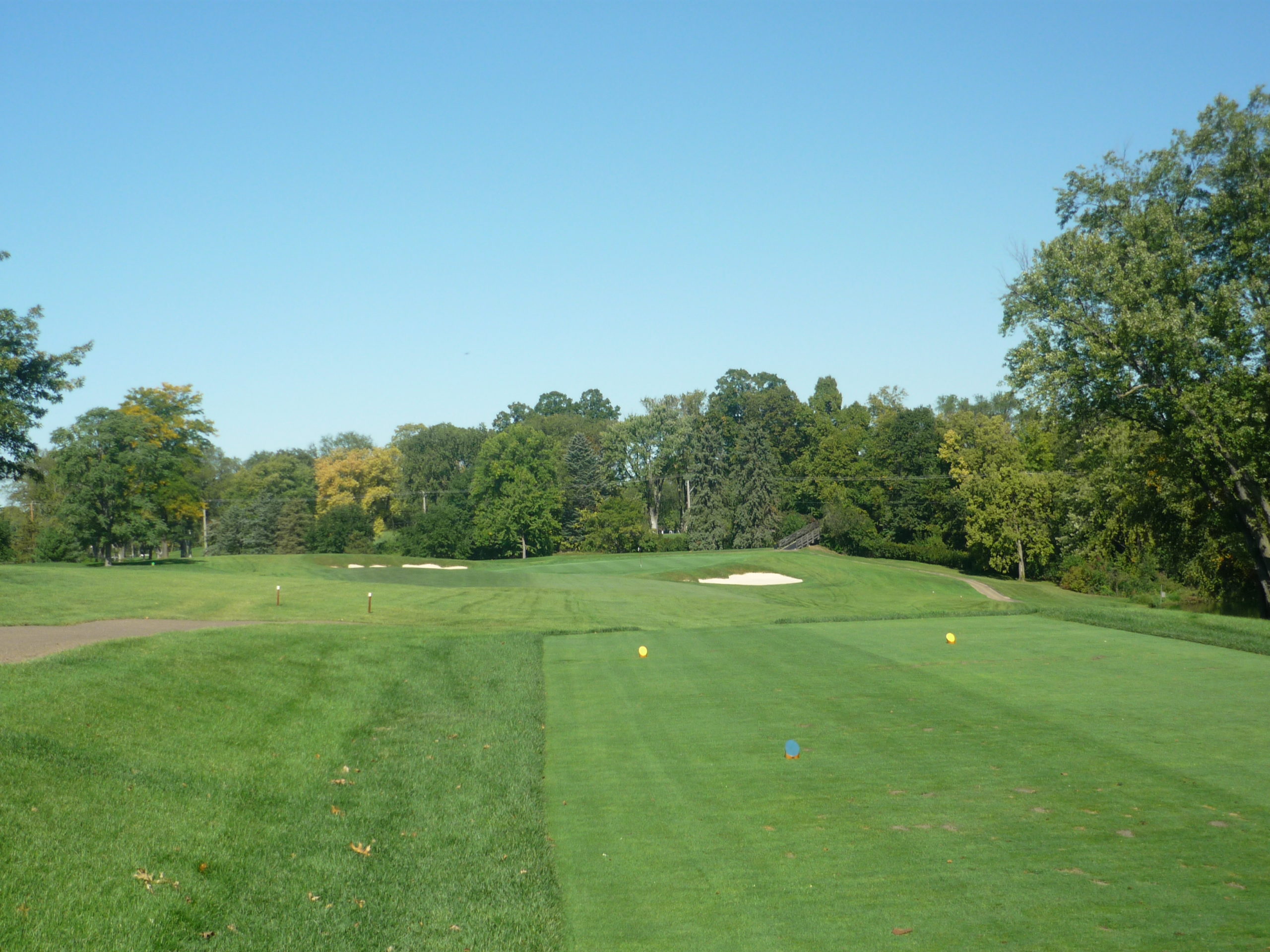
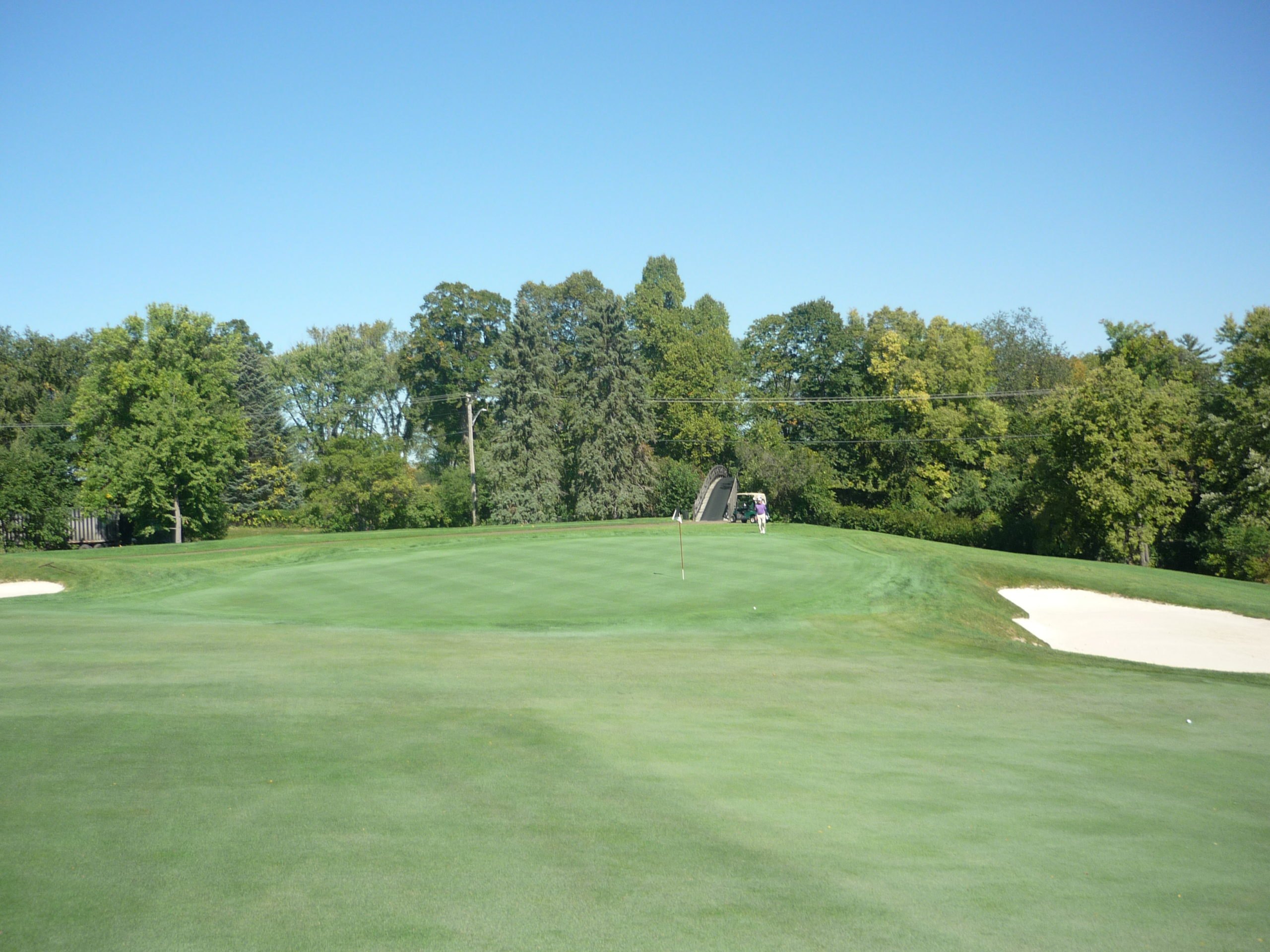
The green features plenty of contour to make putting a challenge.
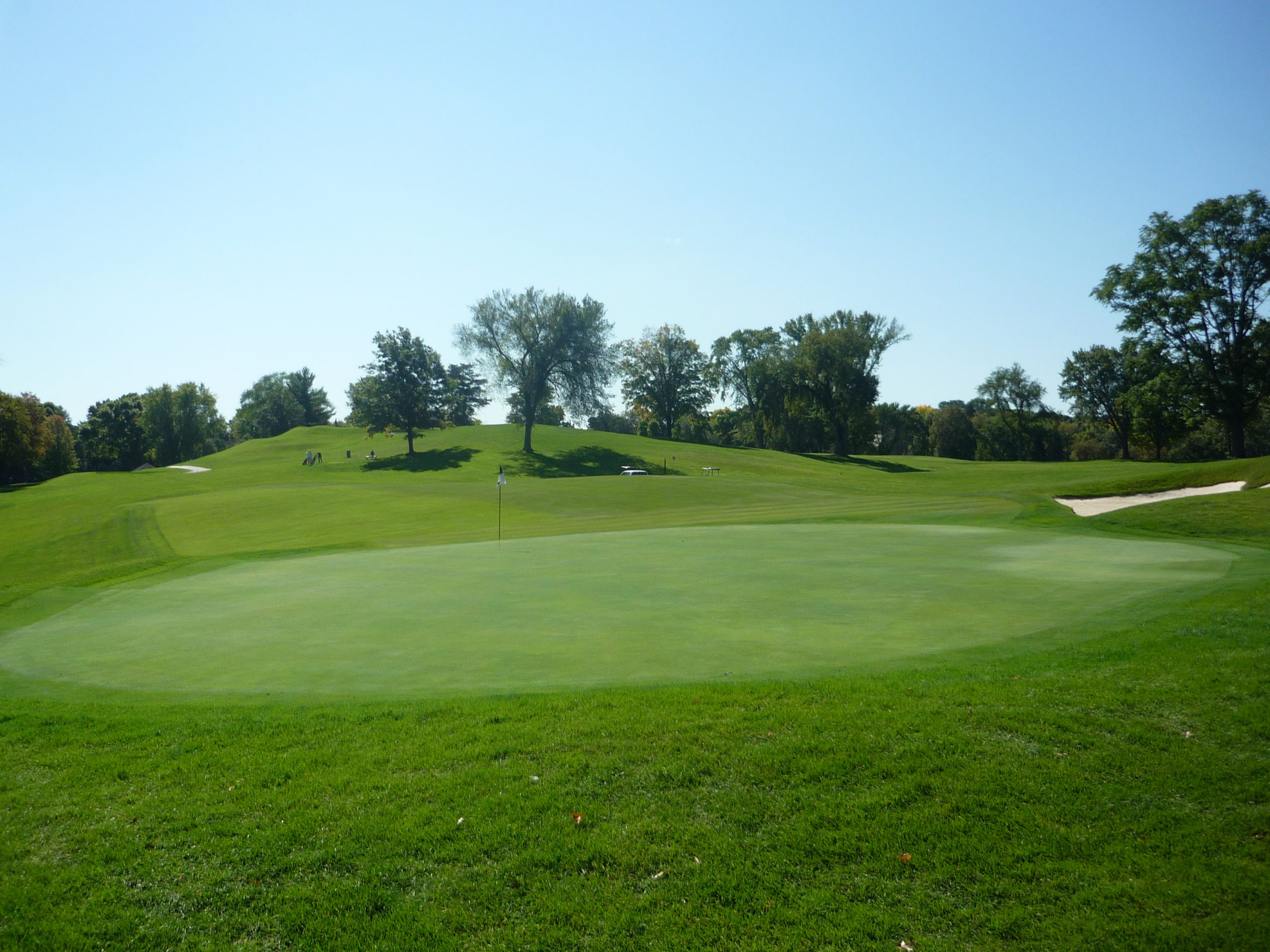
Hole 18 – 385 yards – Par 4
The finisher can be a bear when you’re trying to close out a match or big tournament. From personal experience, I don’t recommend the left trees. The hole bends to the right before rising to the green.
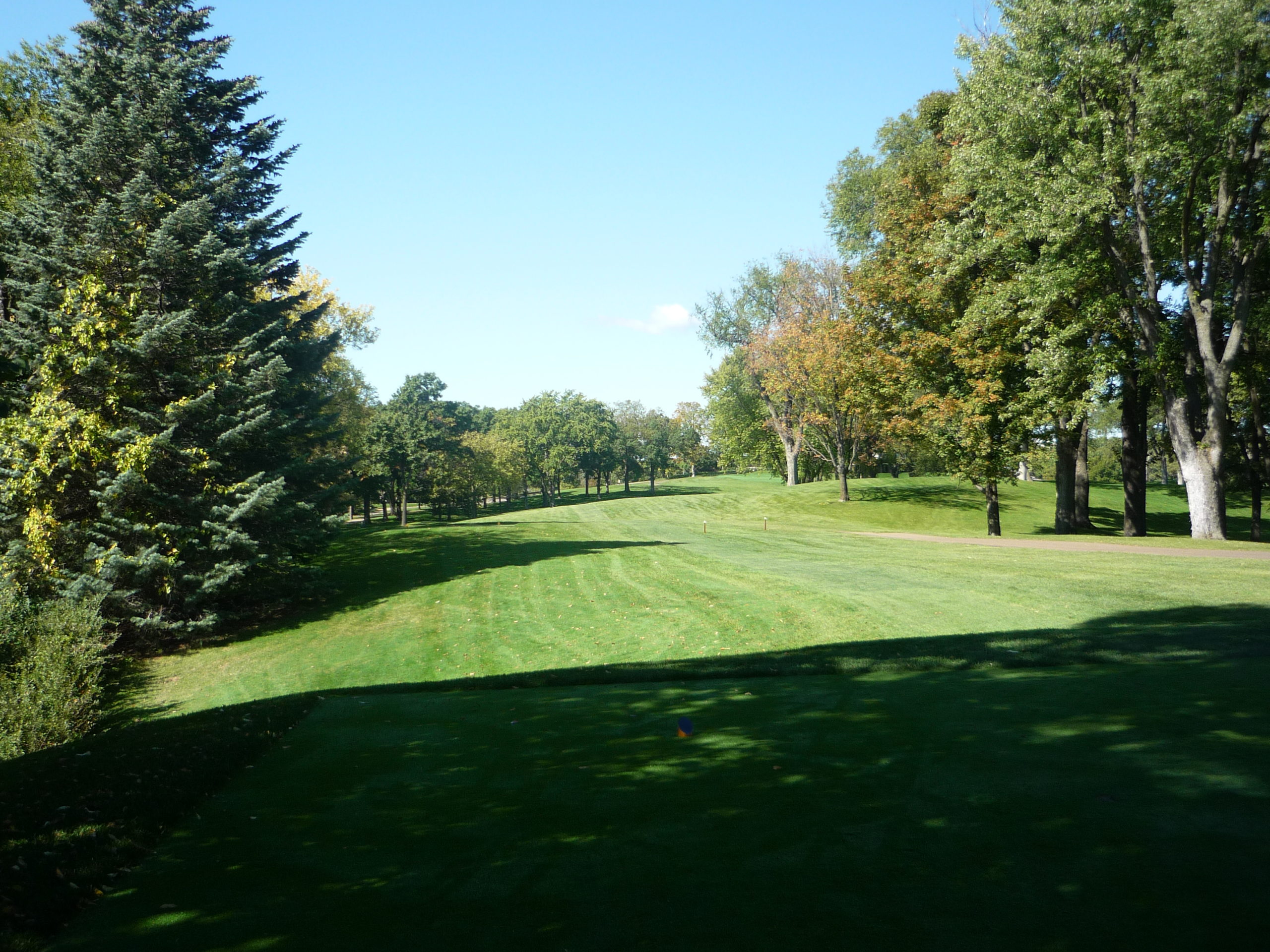
It helps to have a high ball flight for this approach shot.
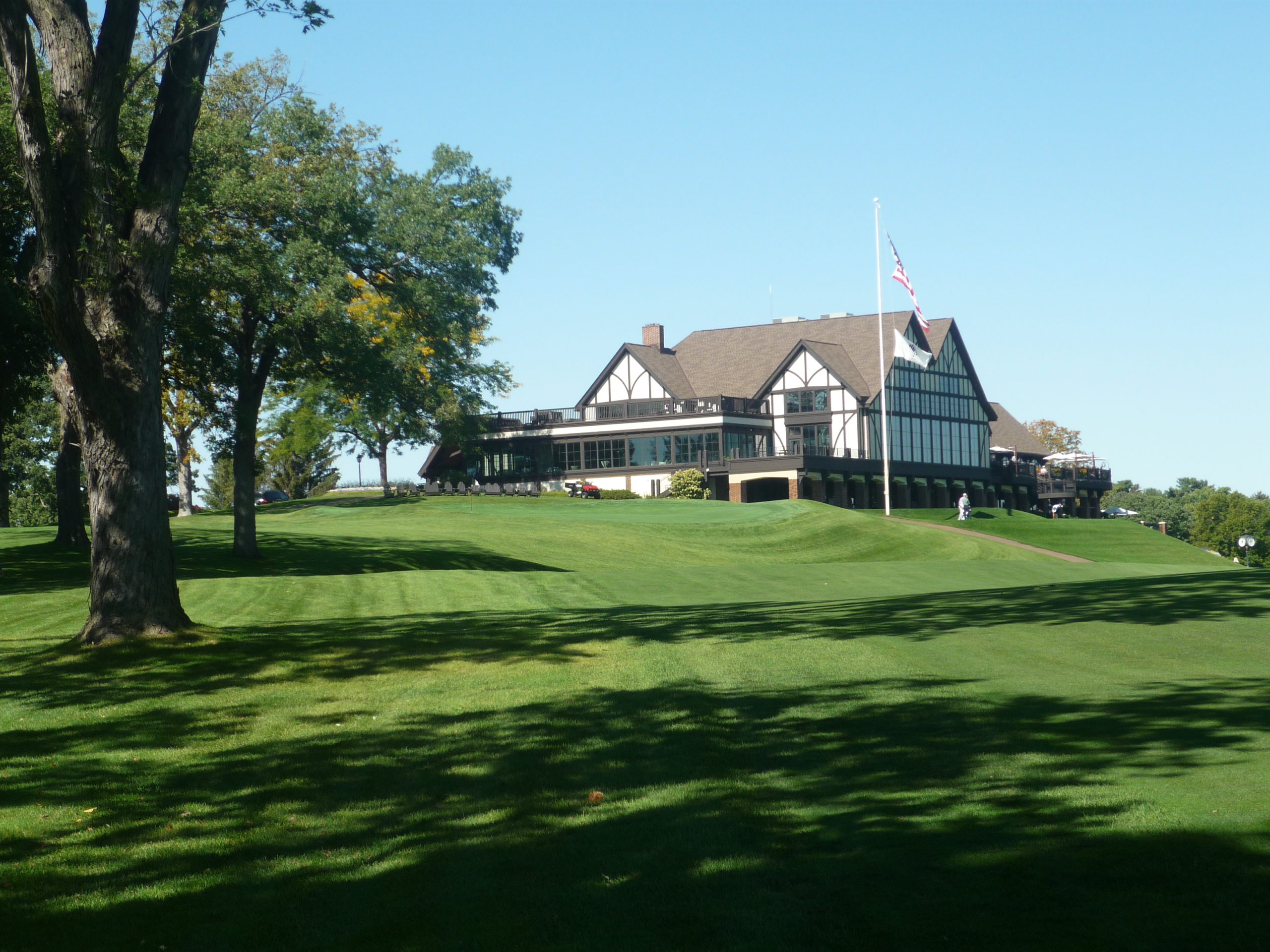
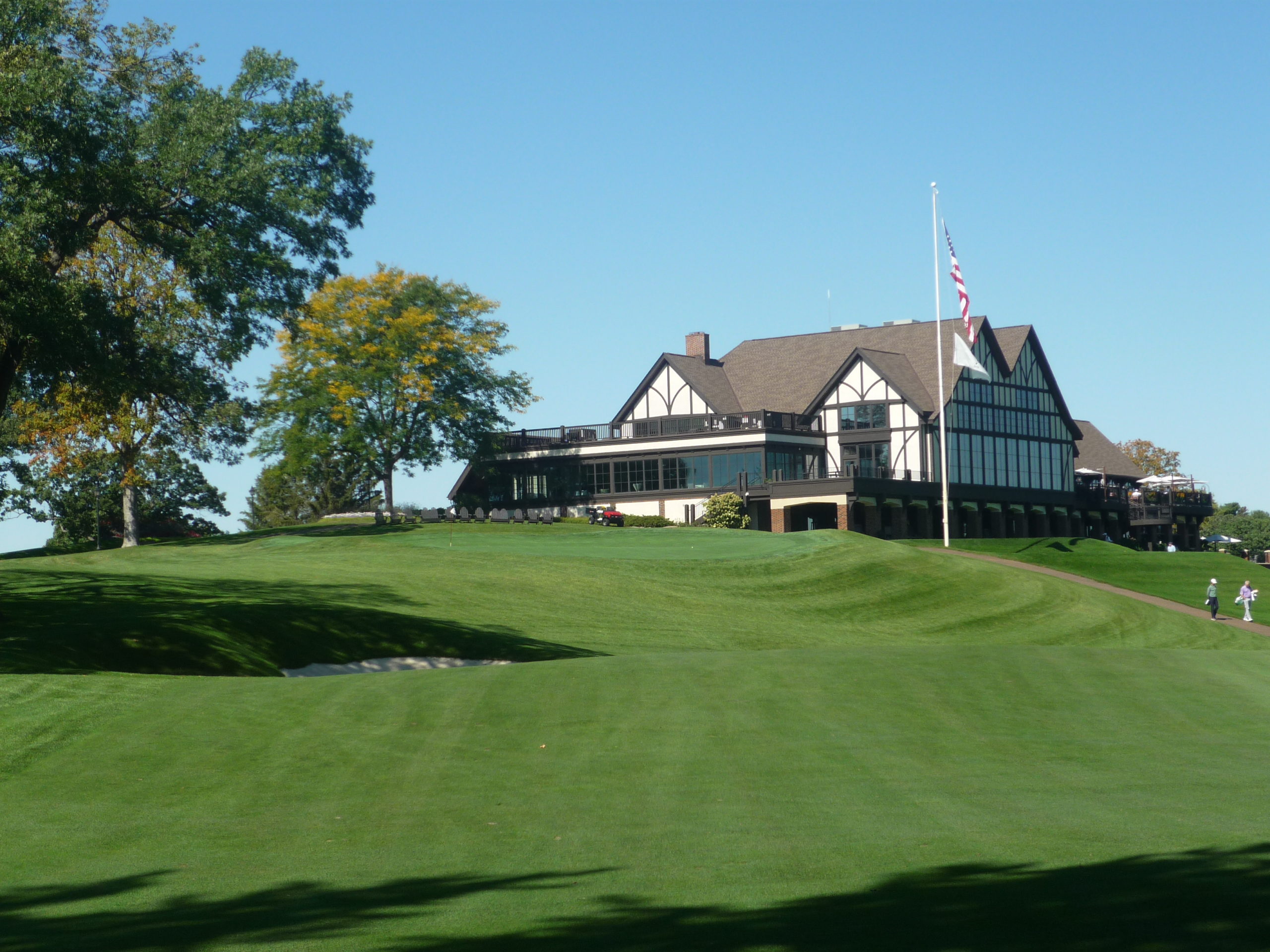
Check out the slopes on this putting surface.
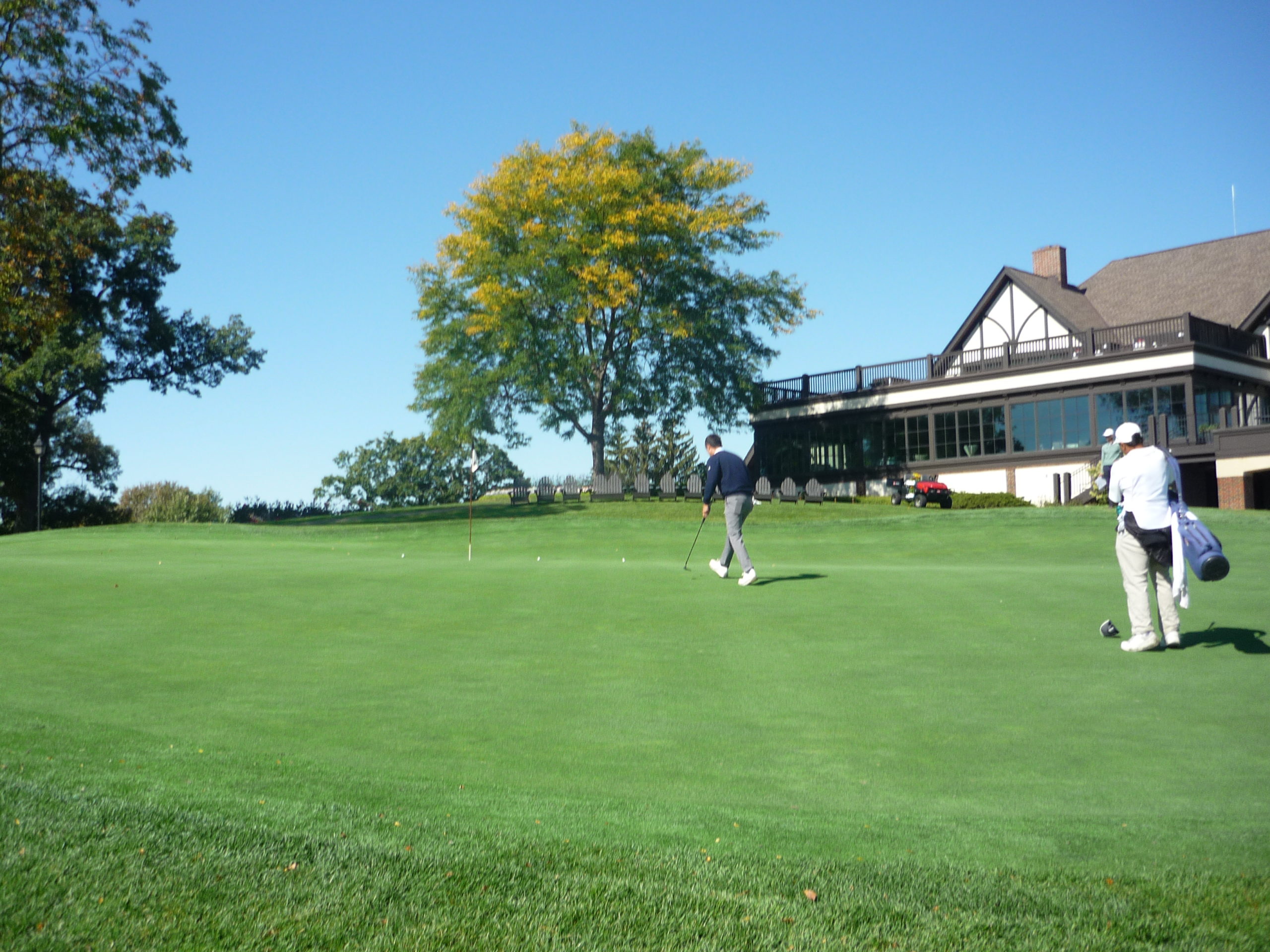
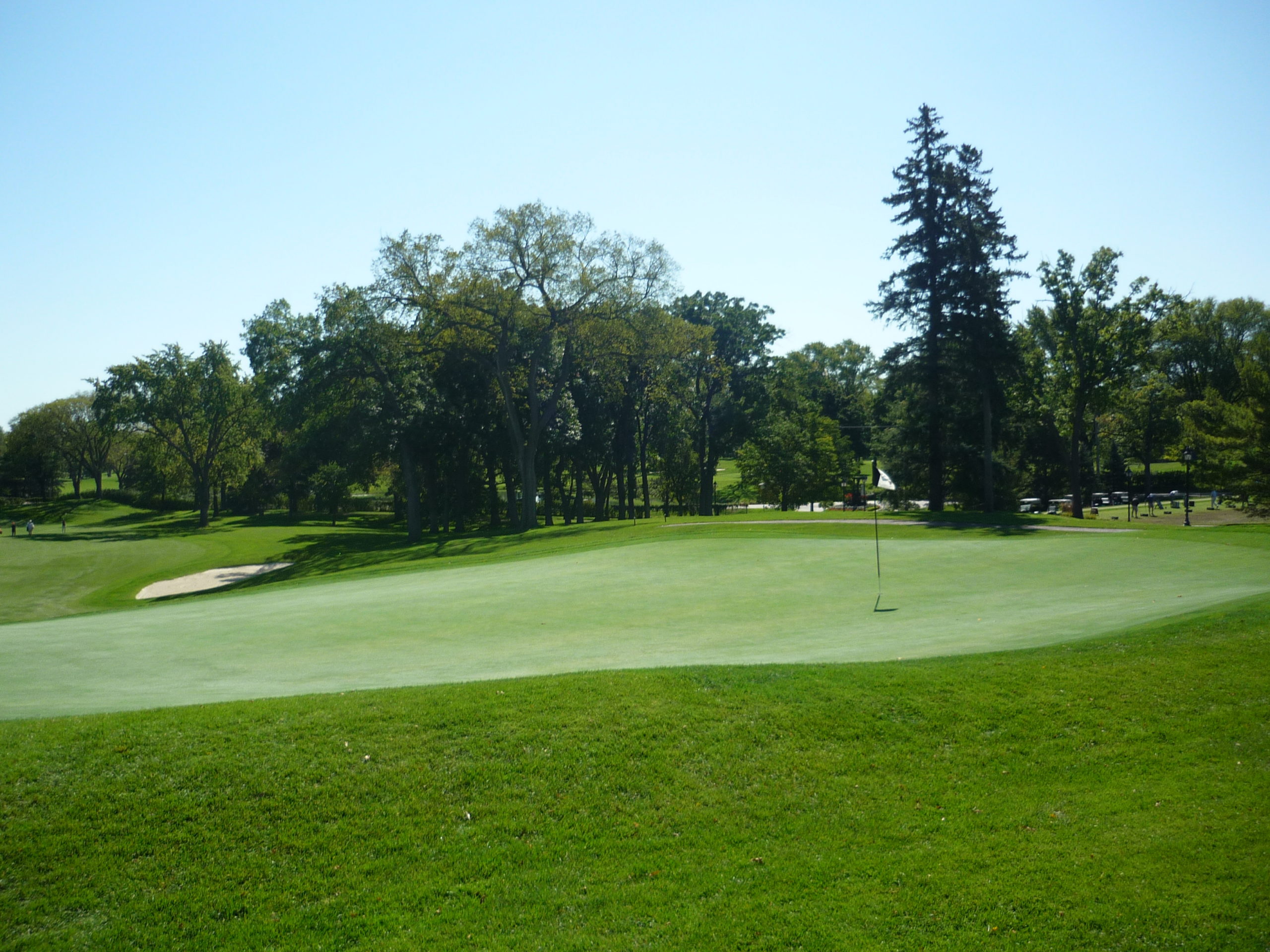
What a fun day with good people! It’s easy to see why Interlachen Country Club has a rich tournament history. The challenge of contoured greens and the rest of the course are primed to test the best. It may be a bit too short for the PGA Tour, but I’d love for other USGA events to come back here. I couldn’t think of a better place to play for my first round in Minnesota.
